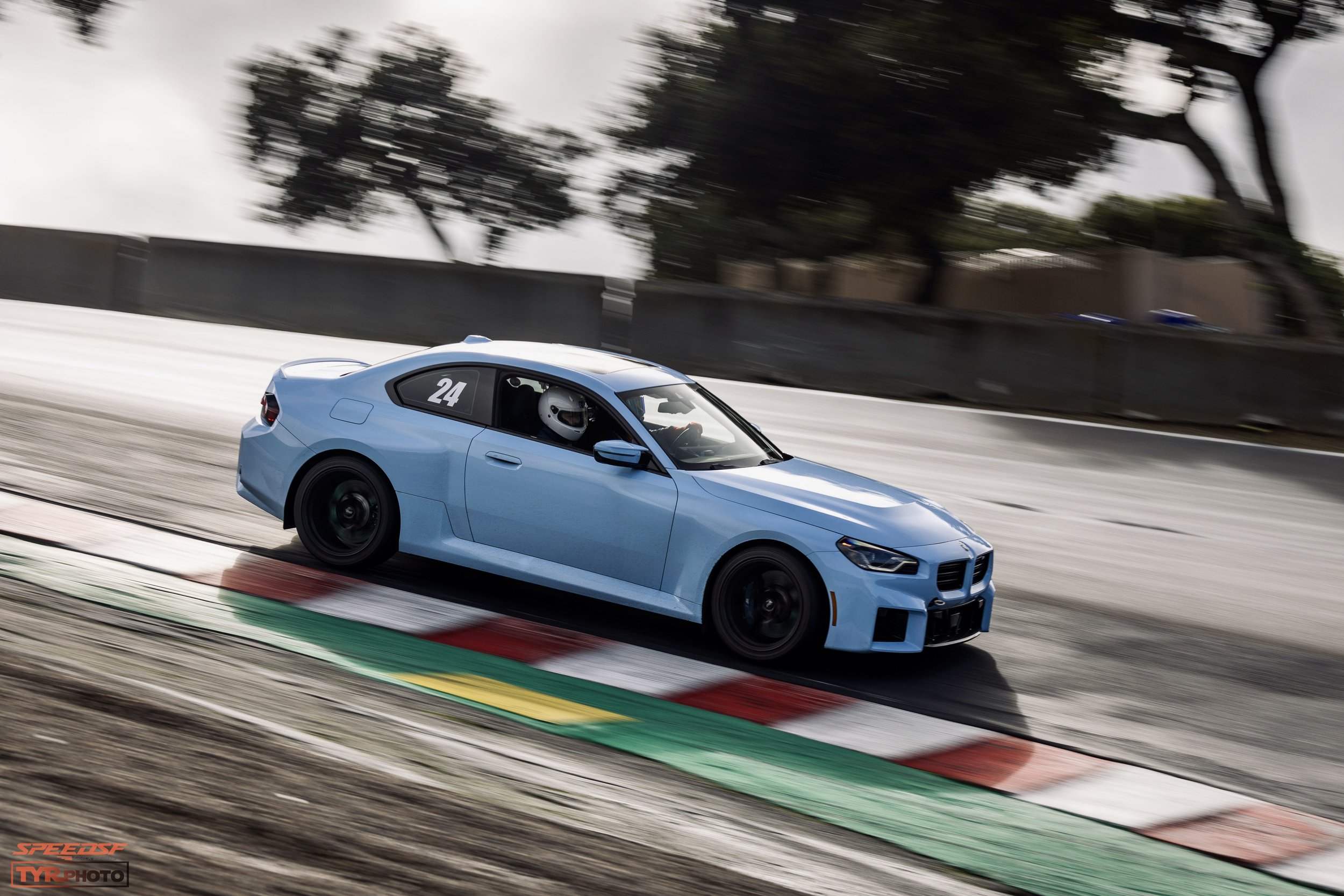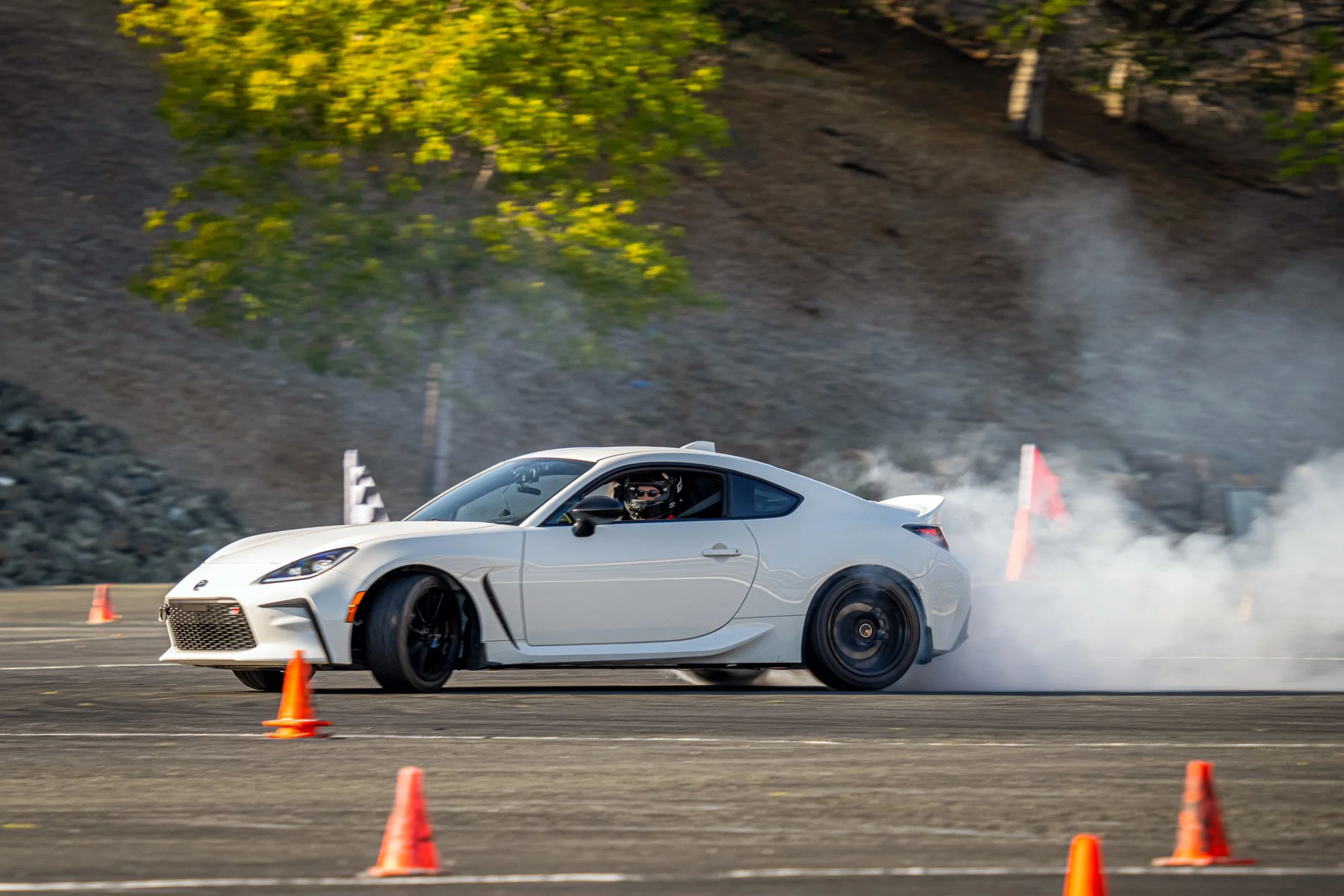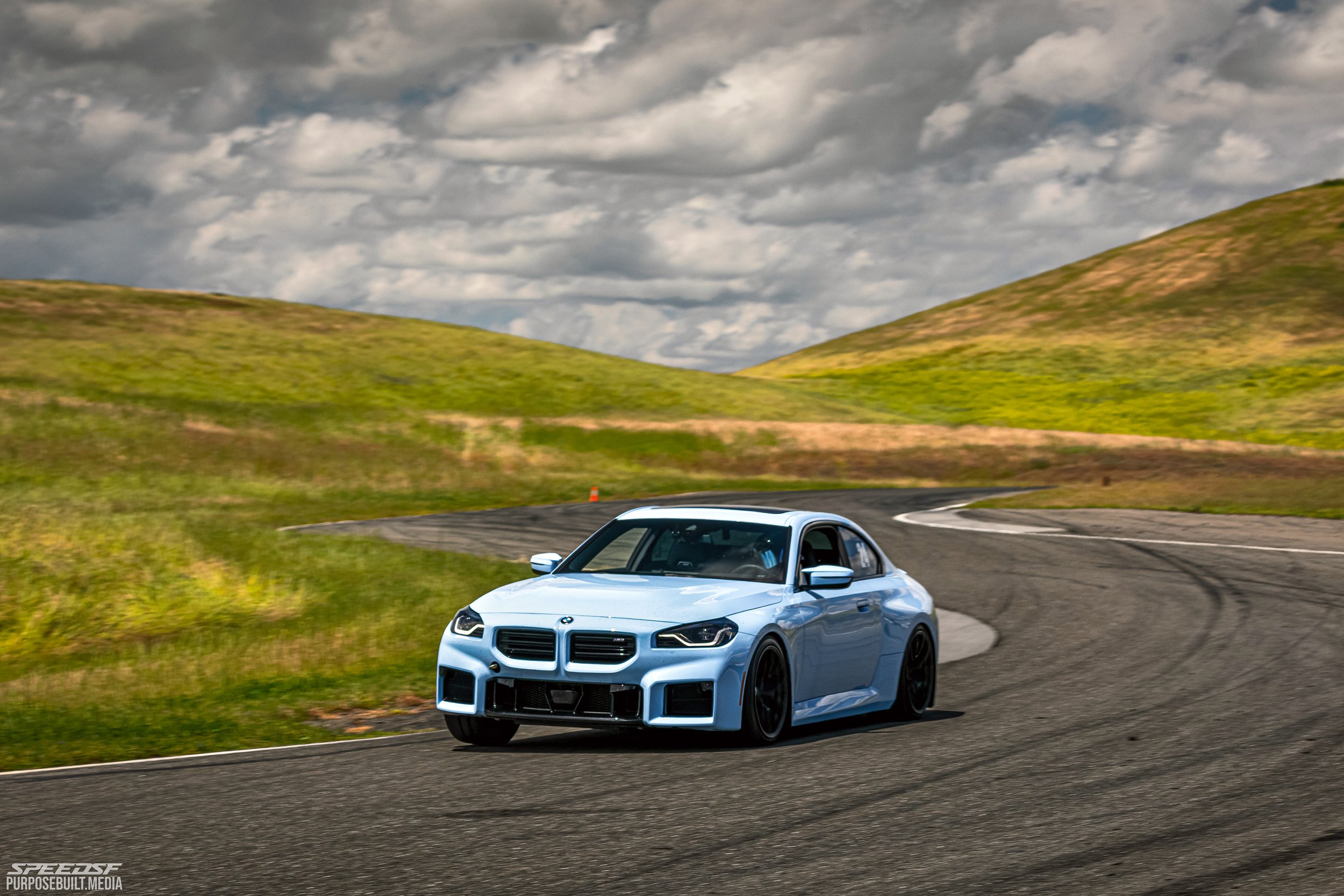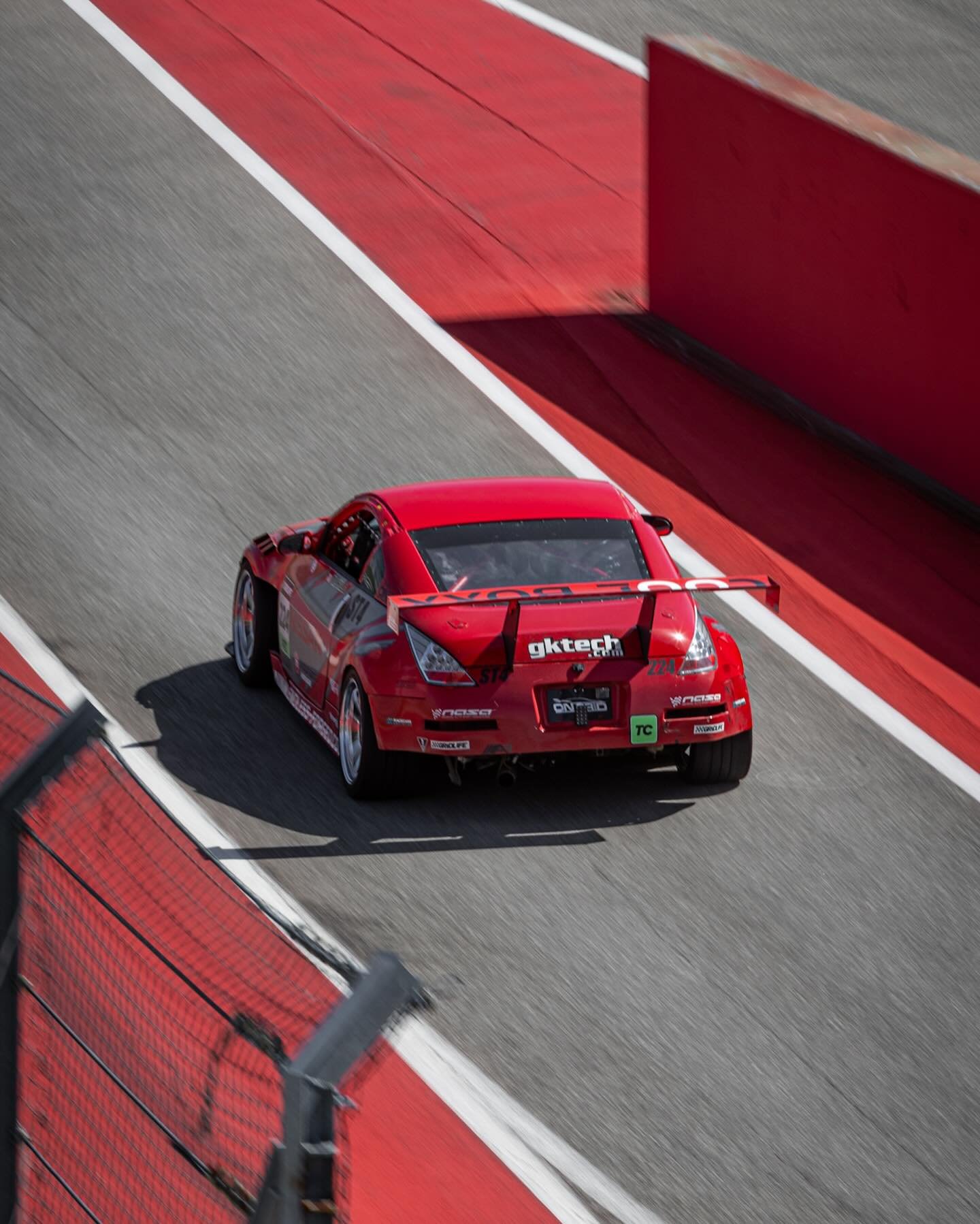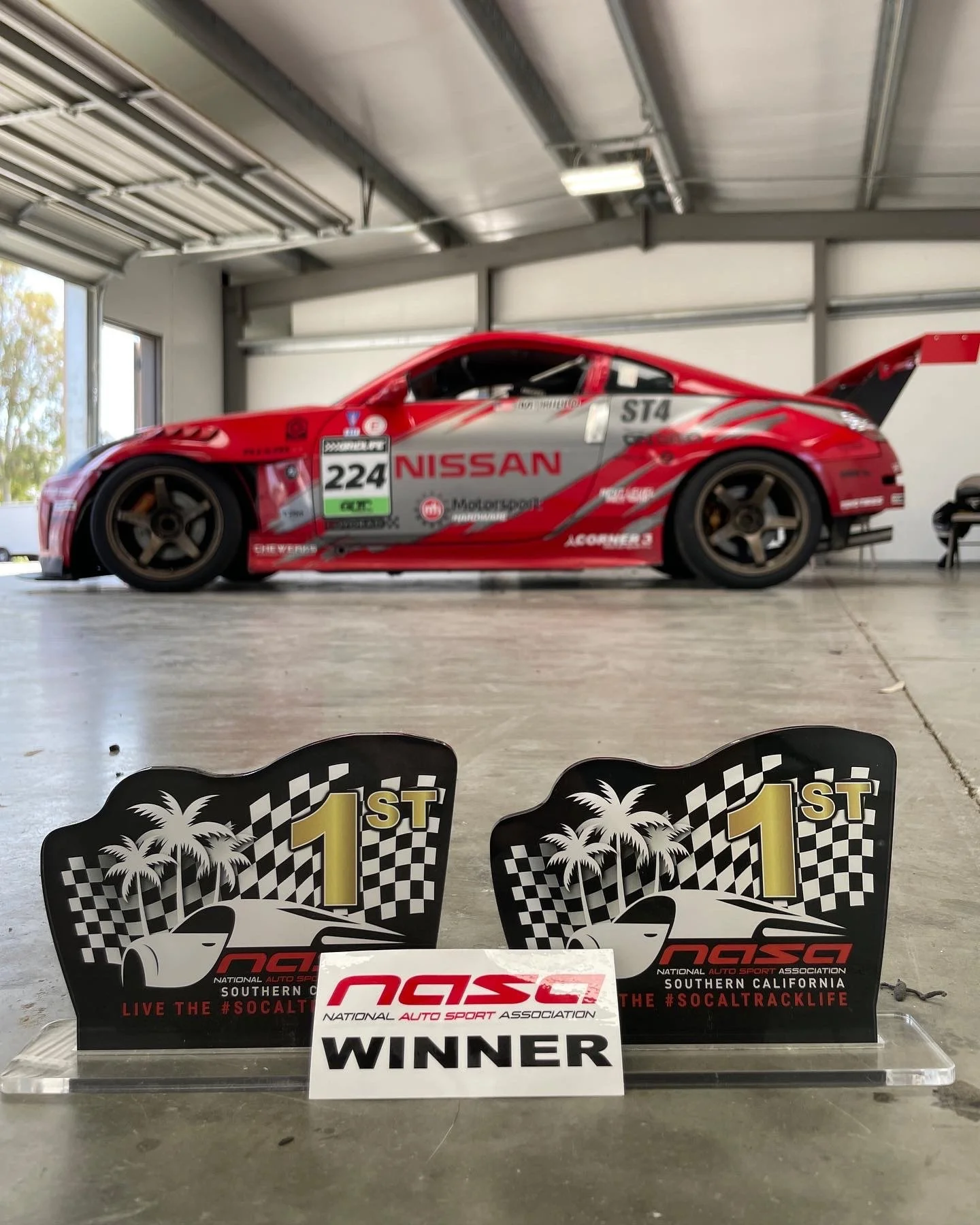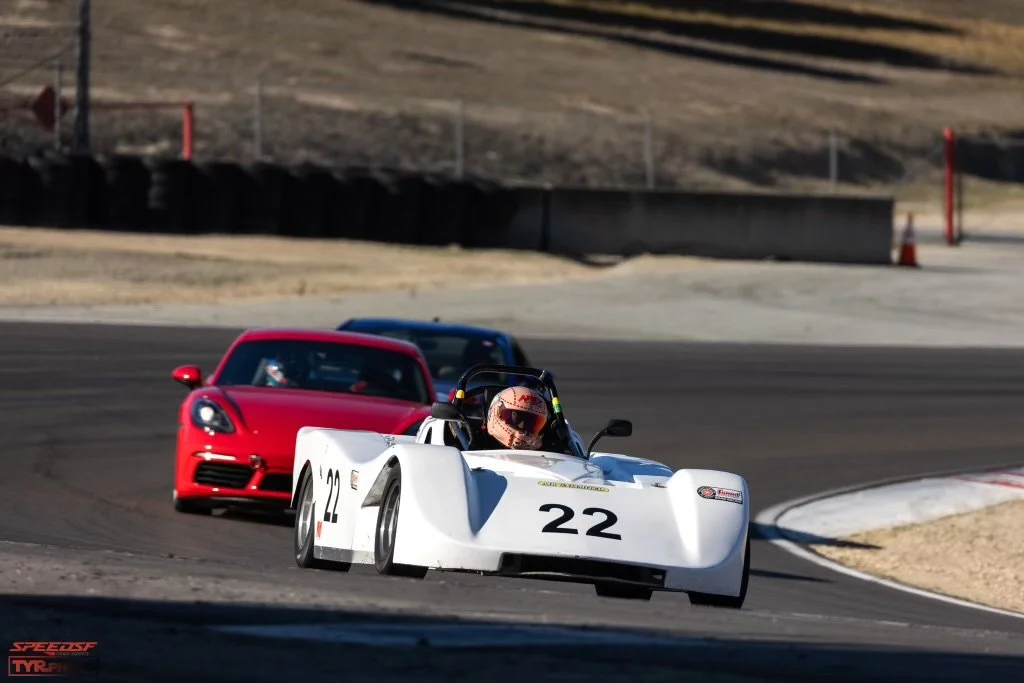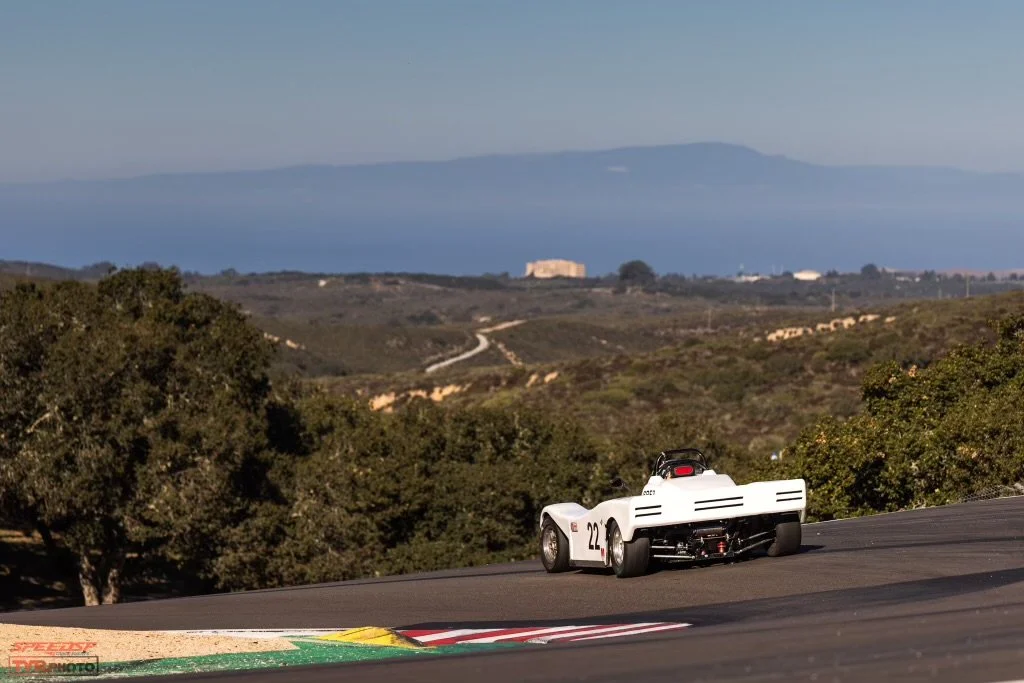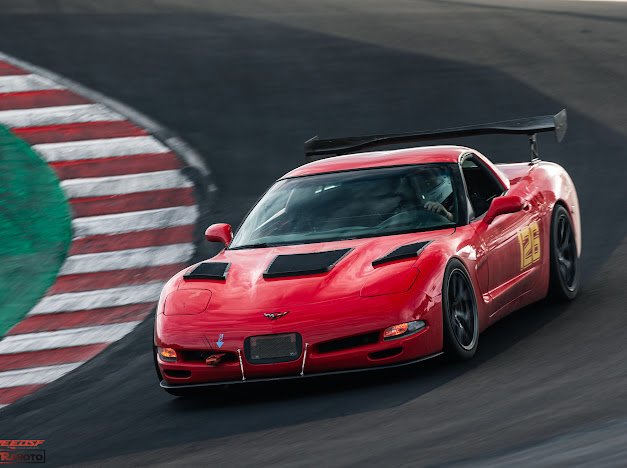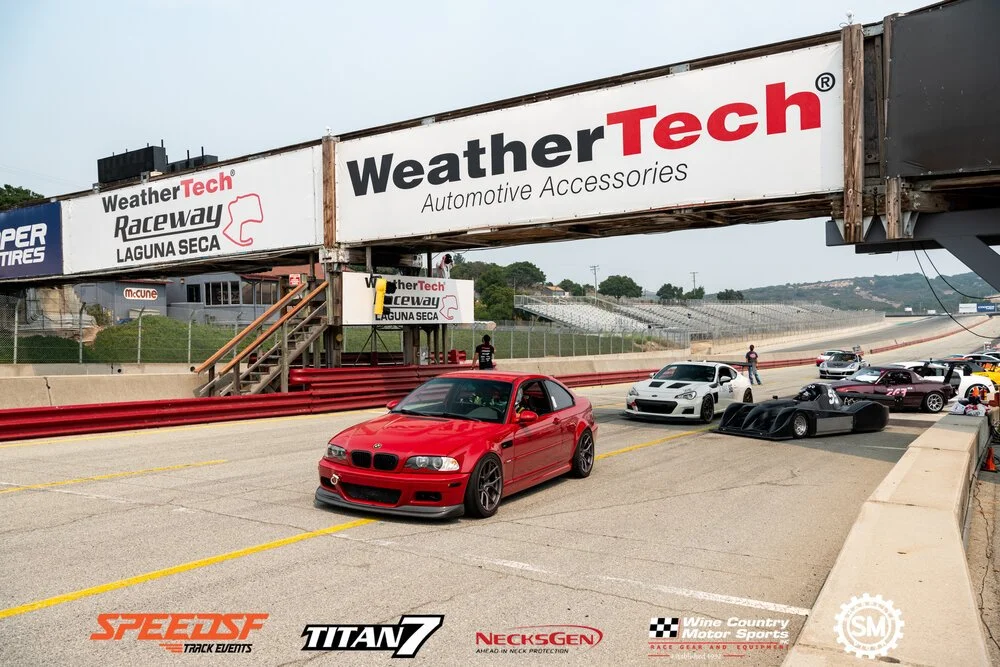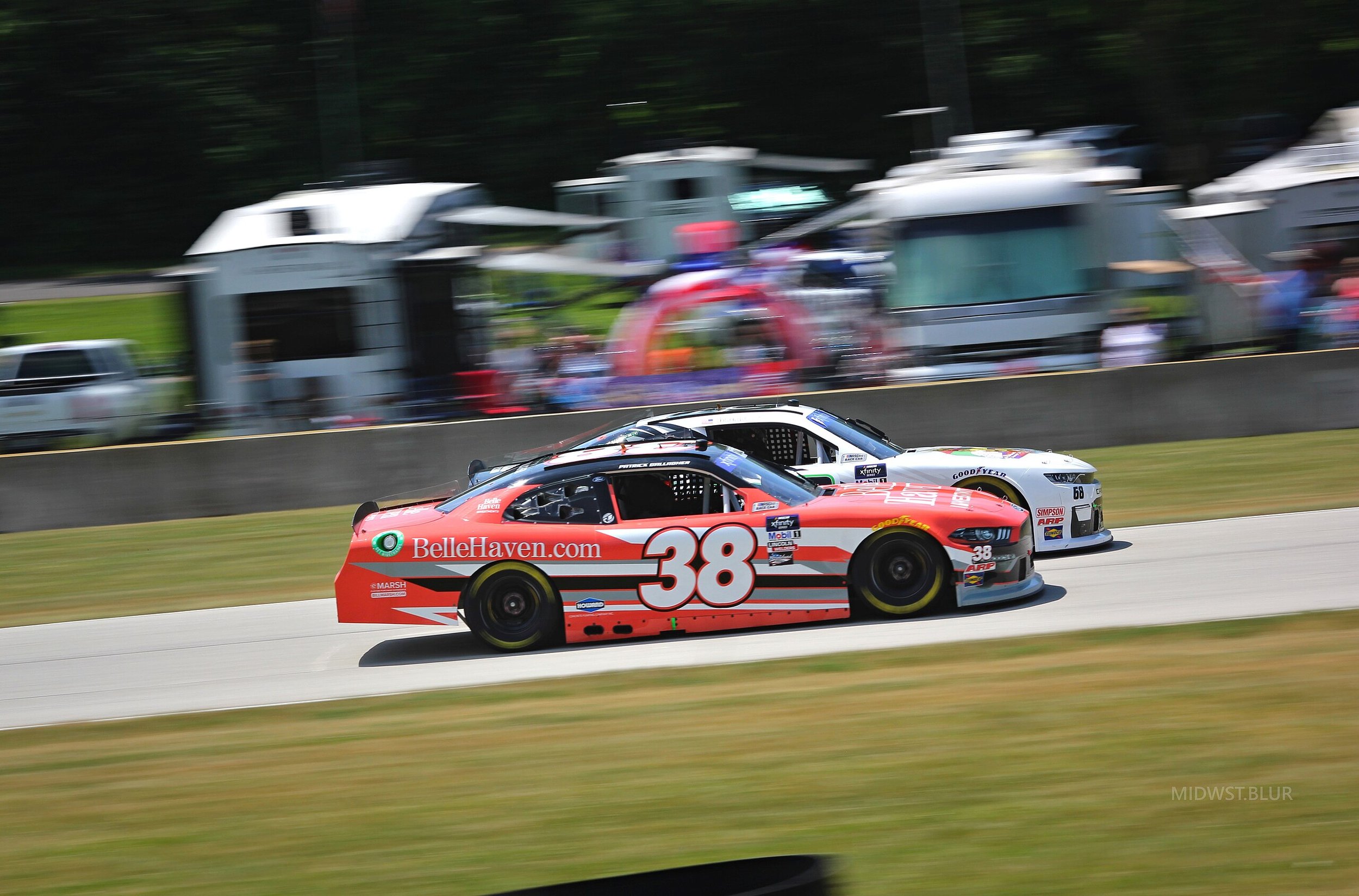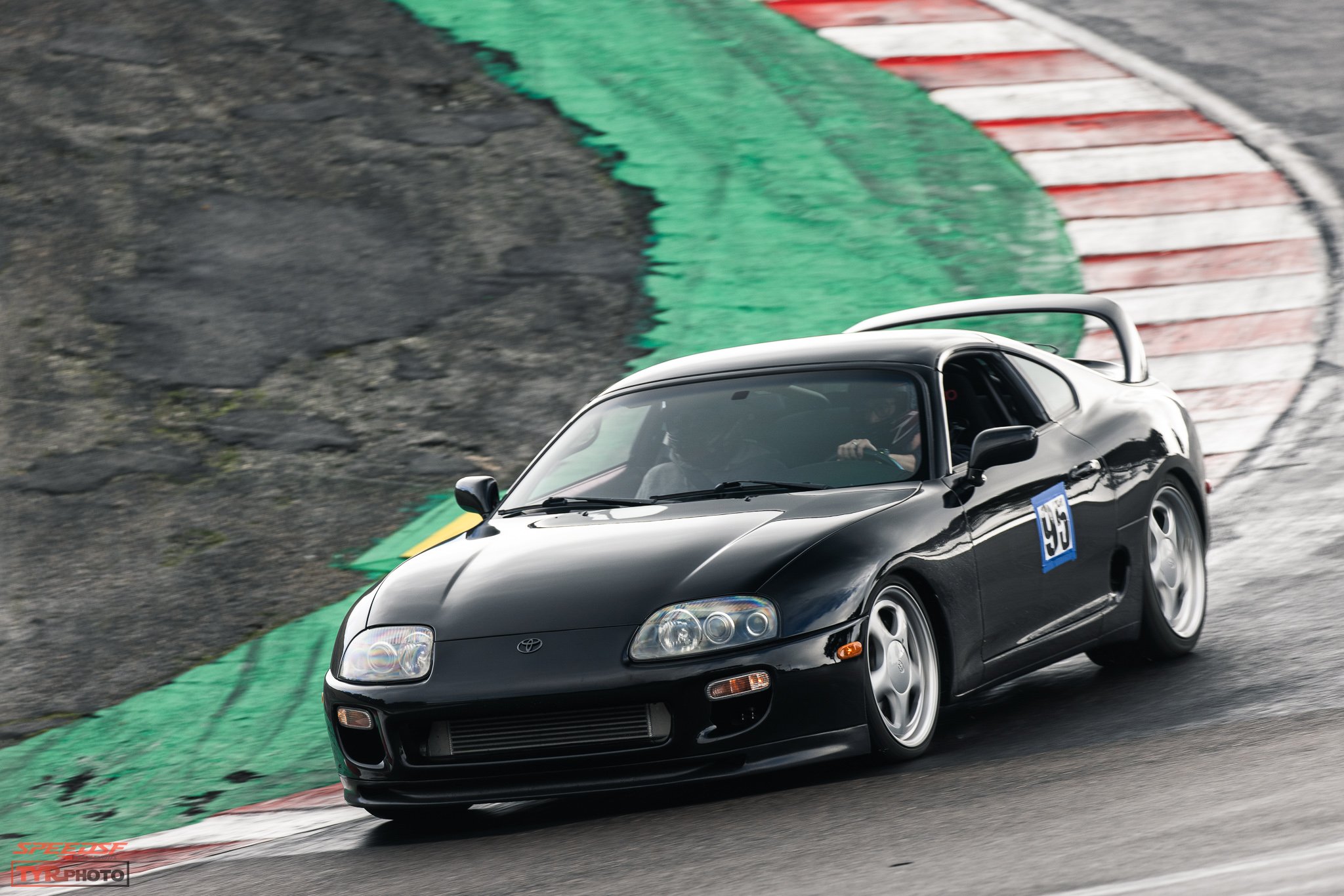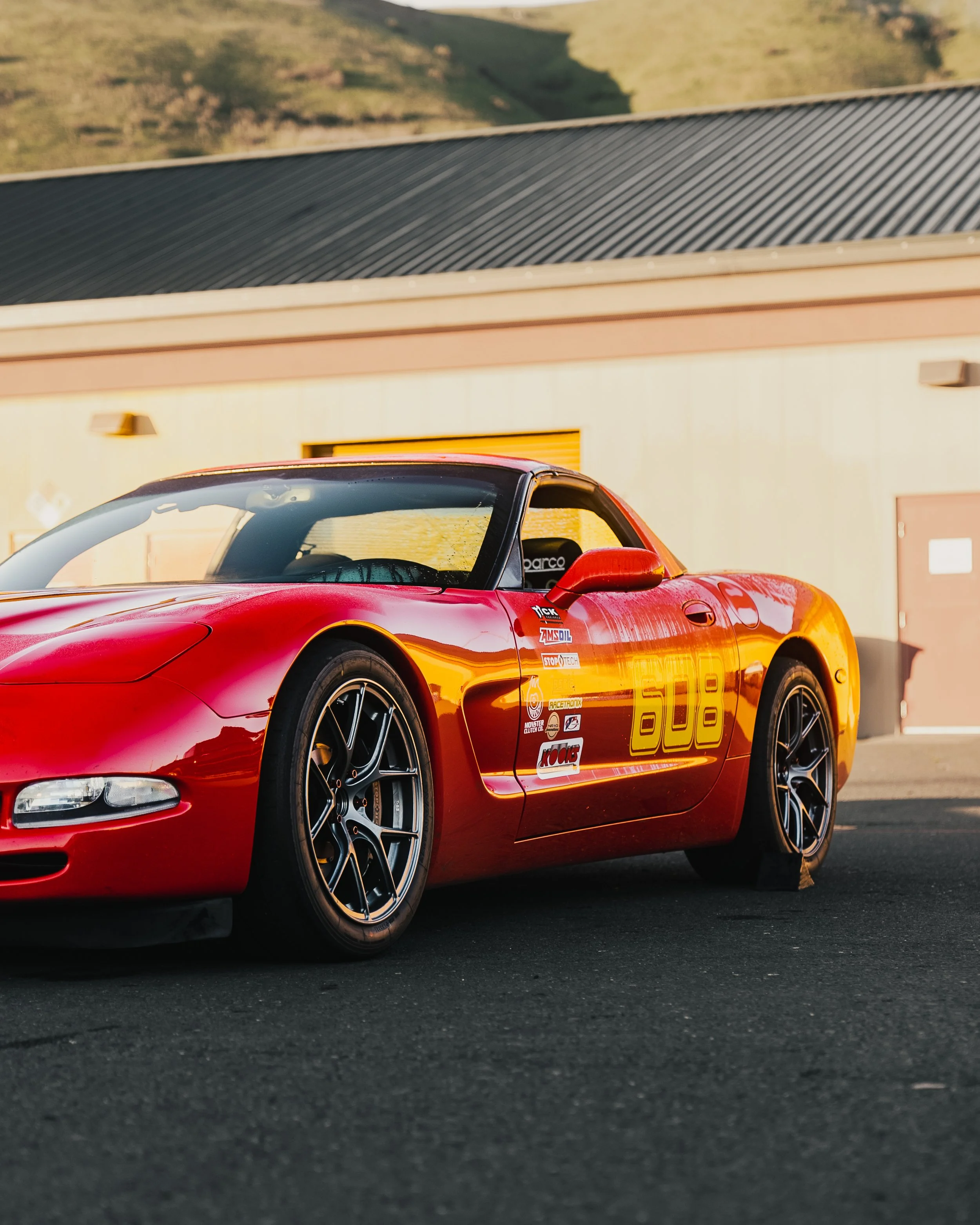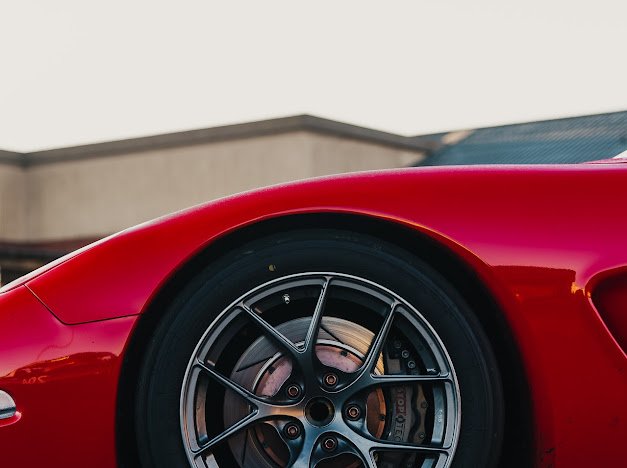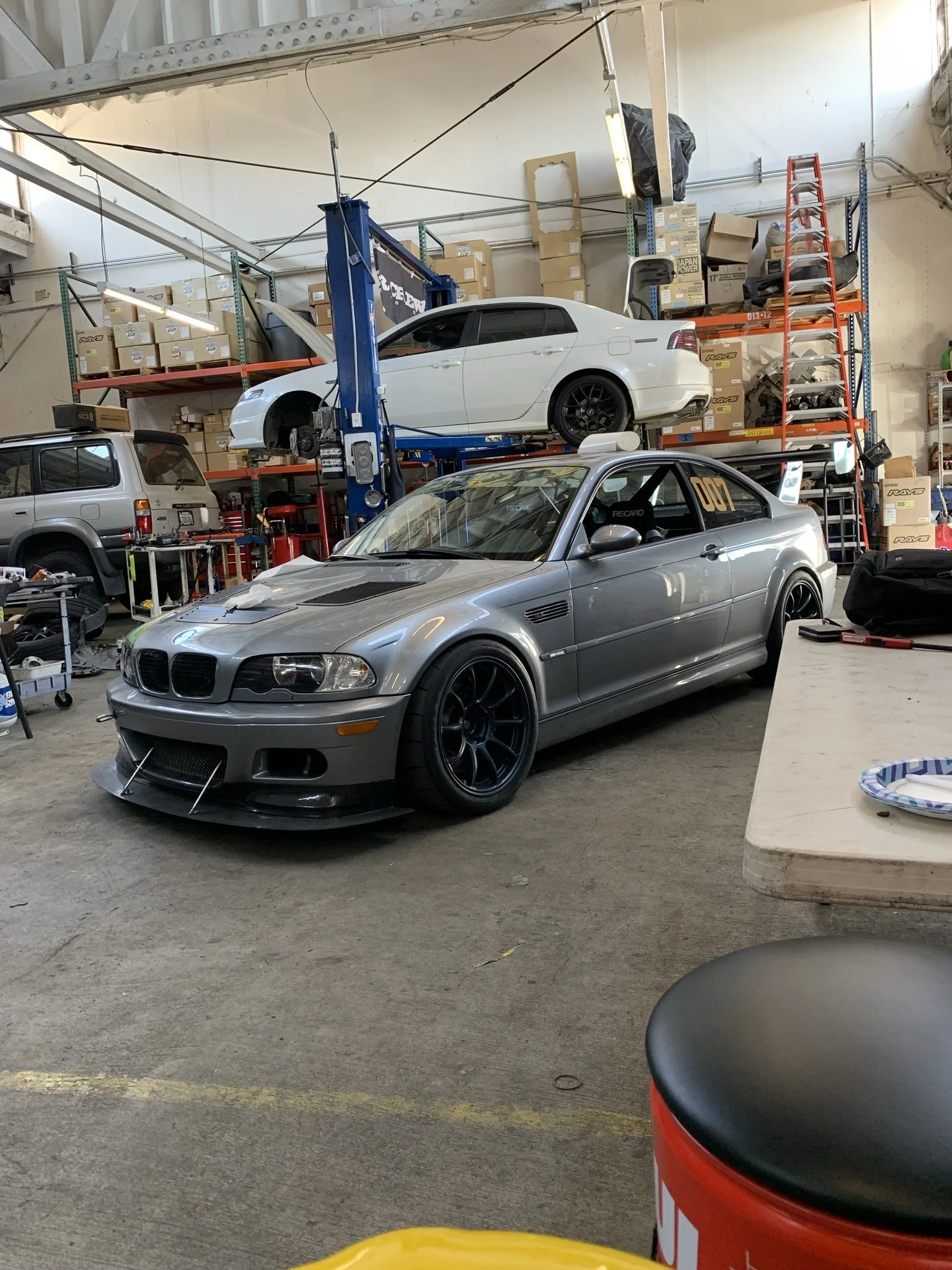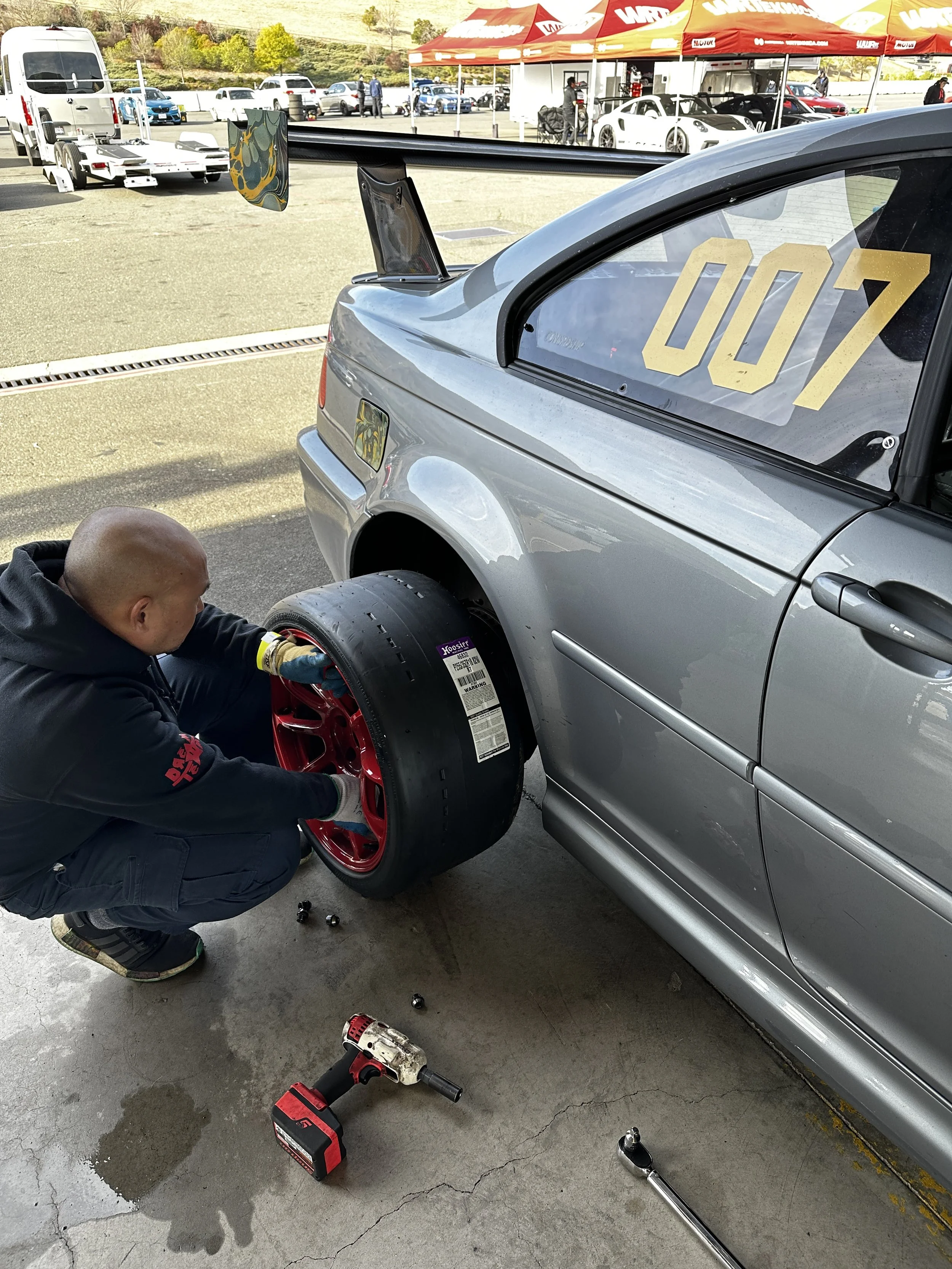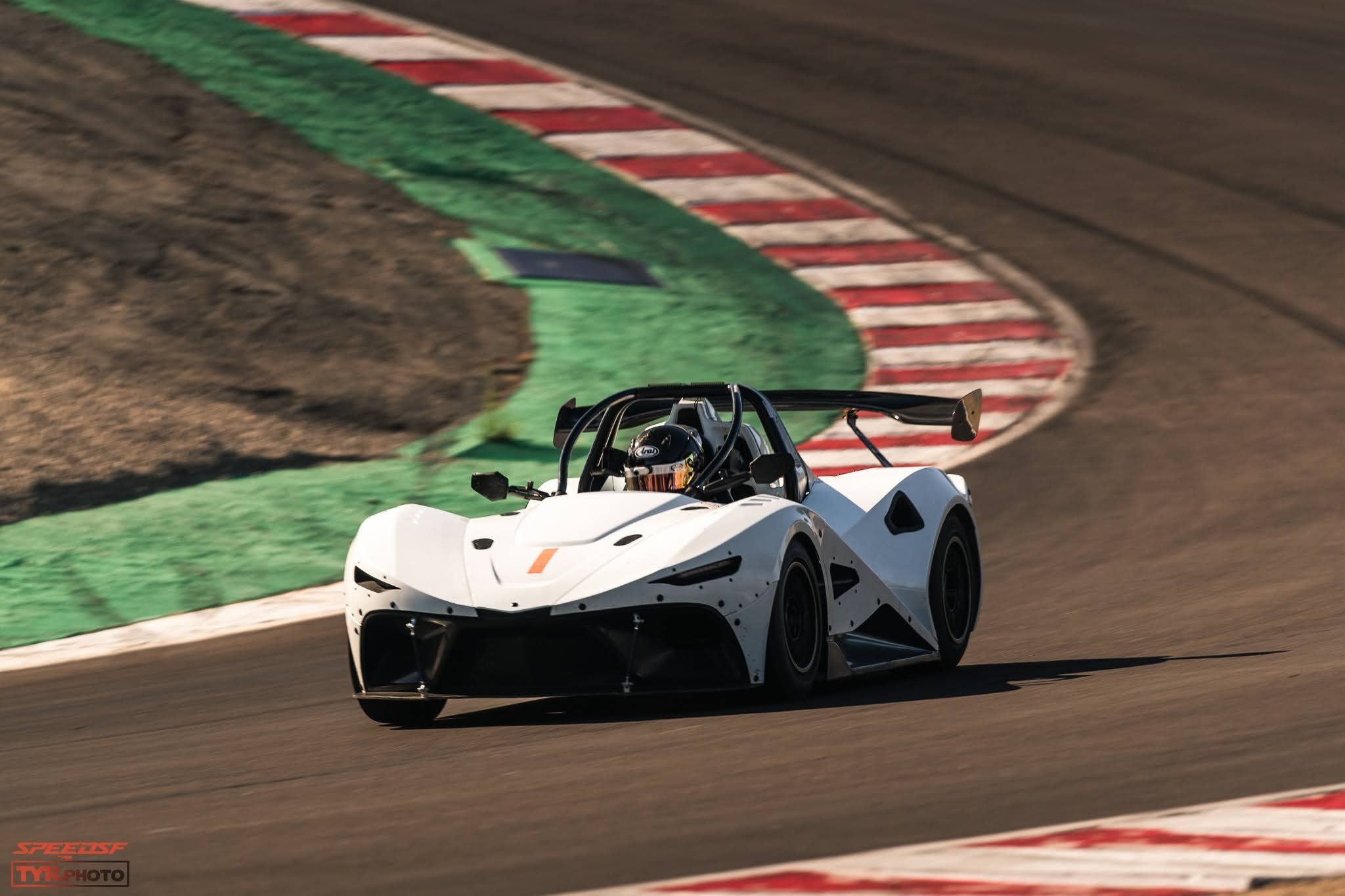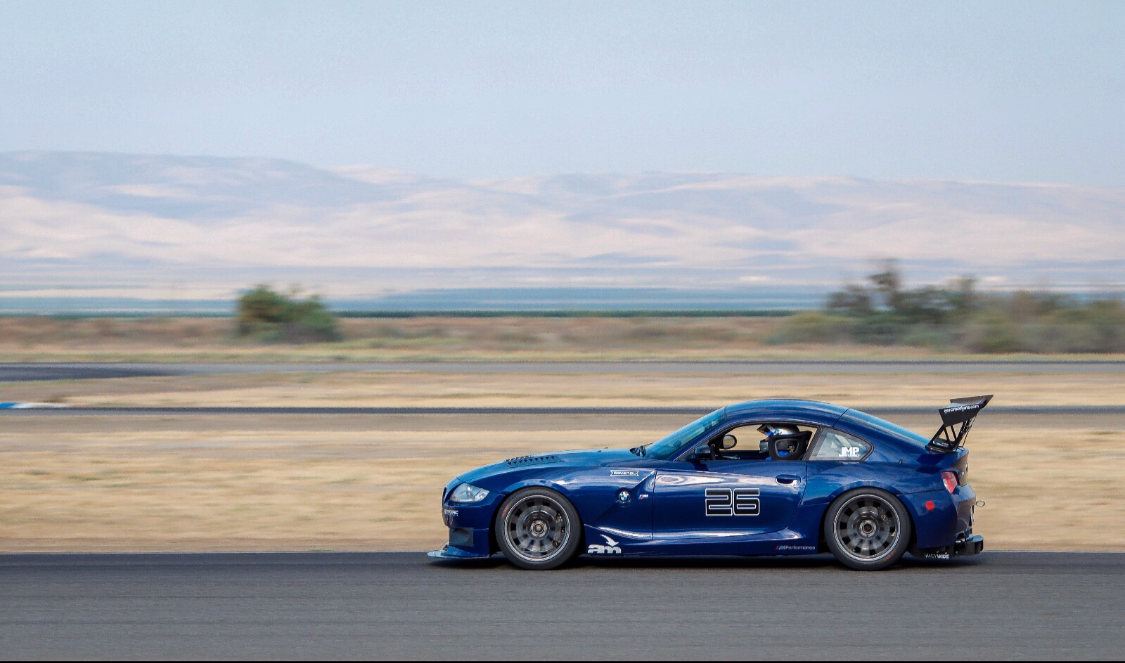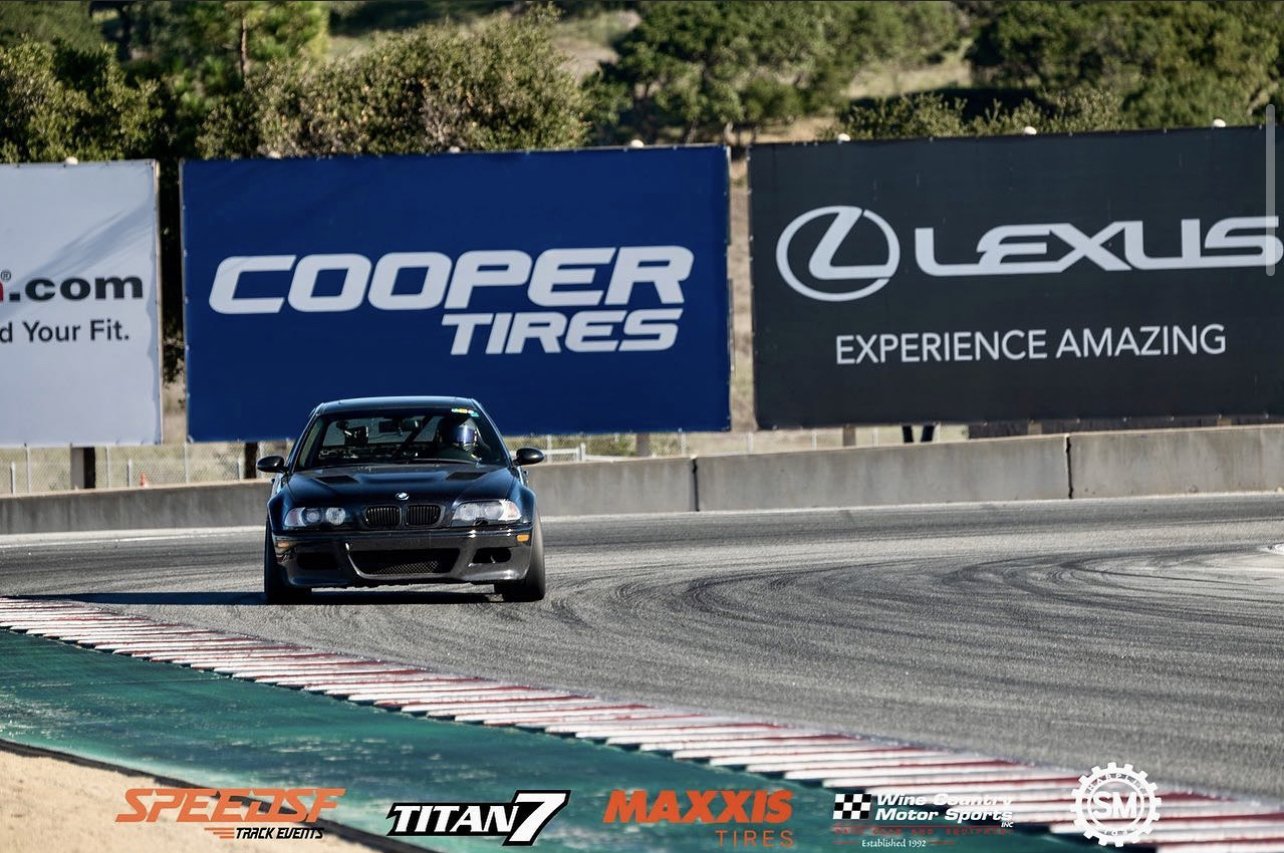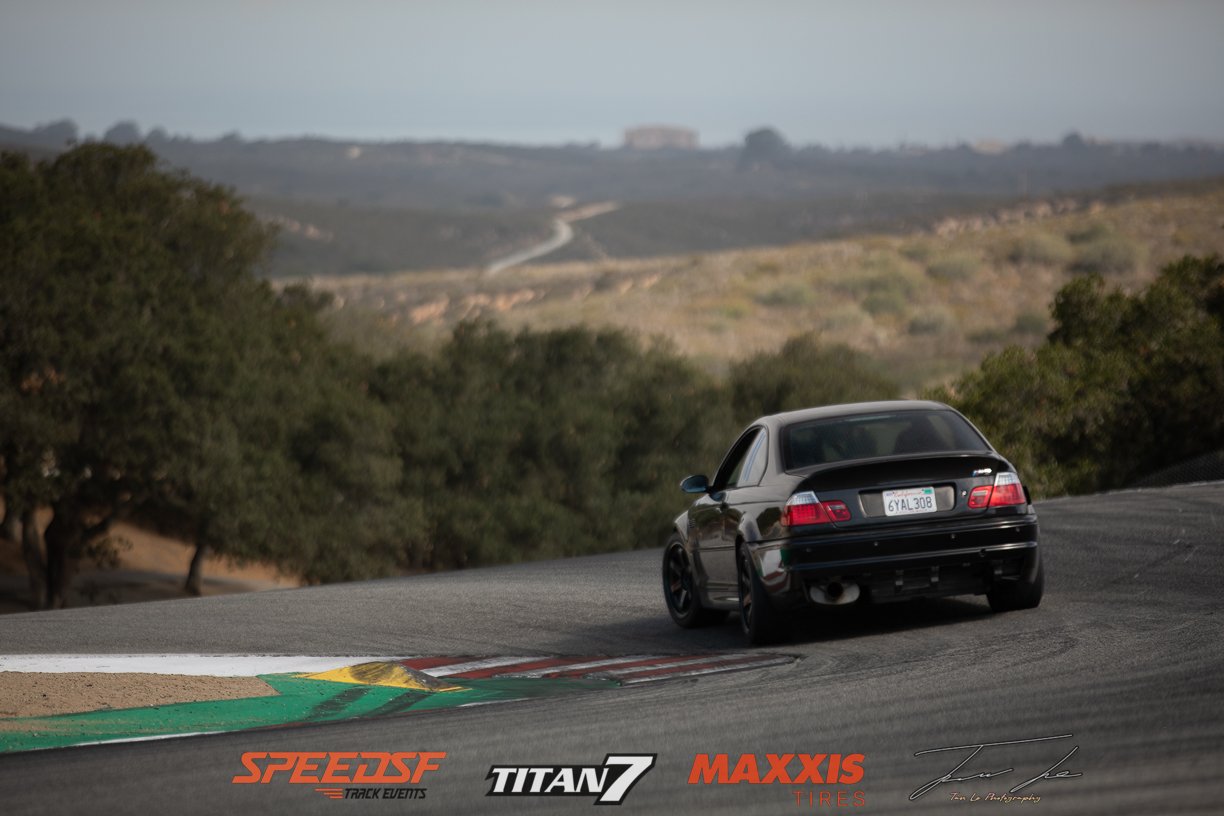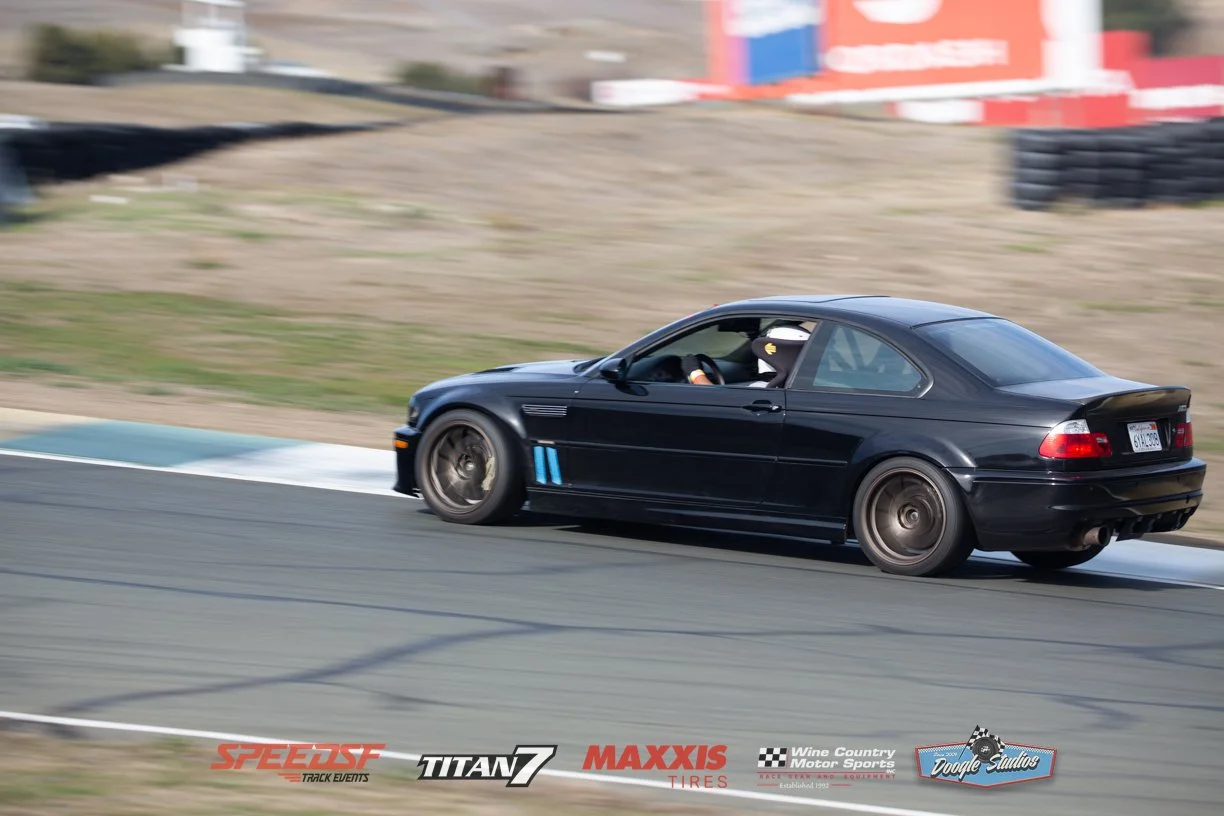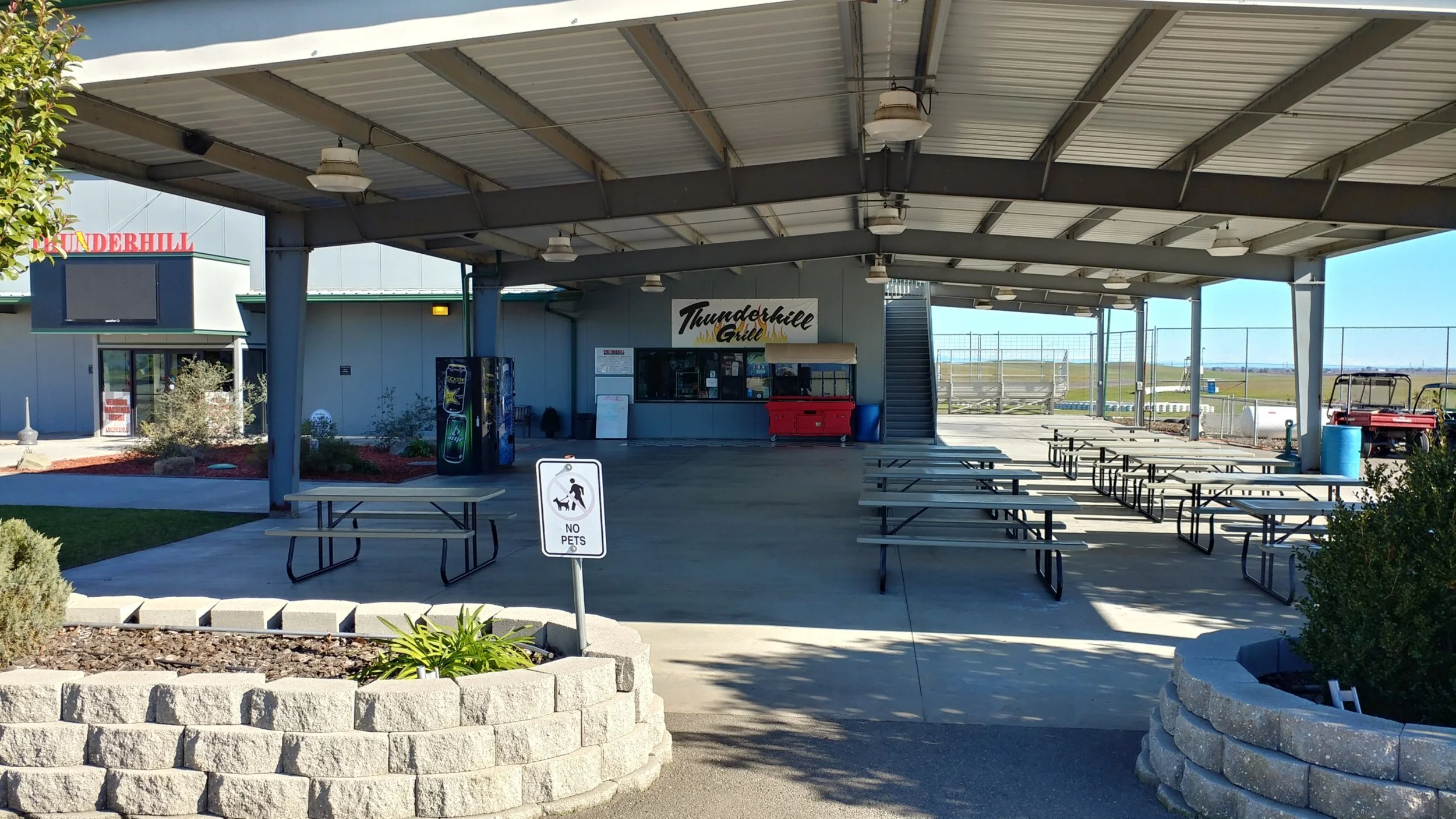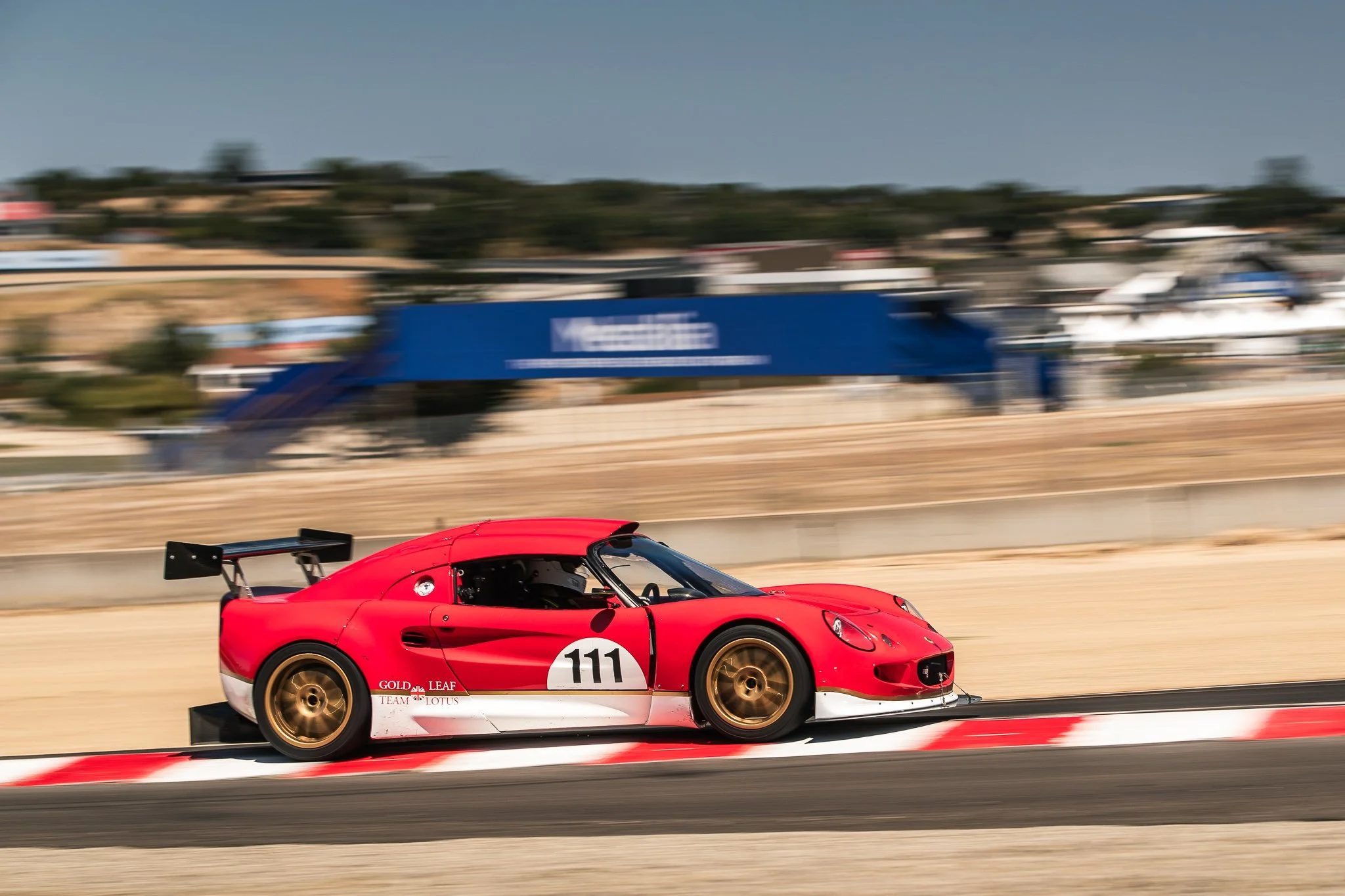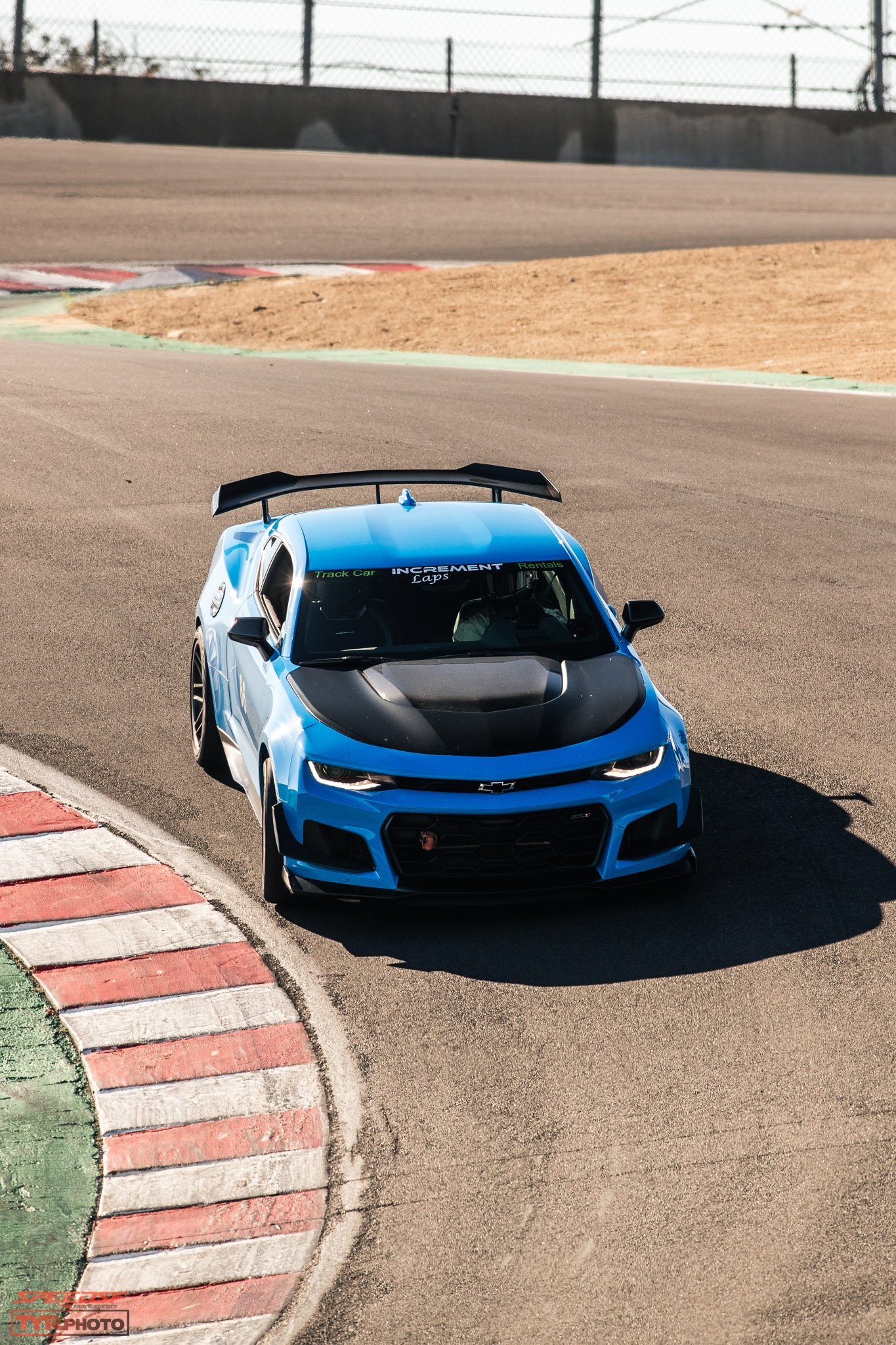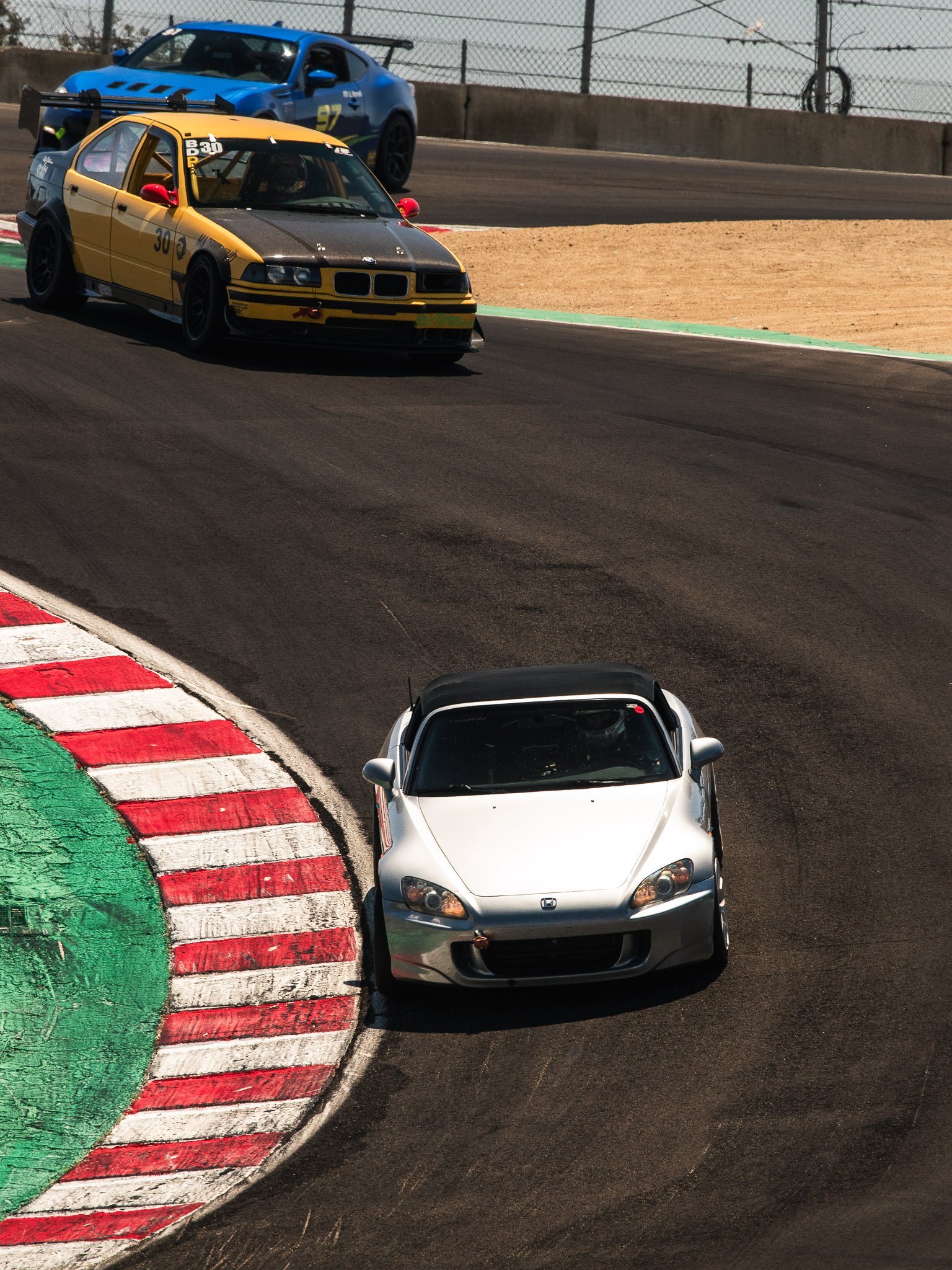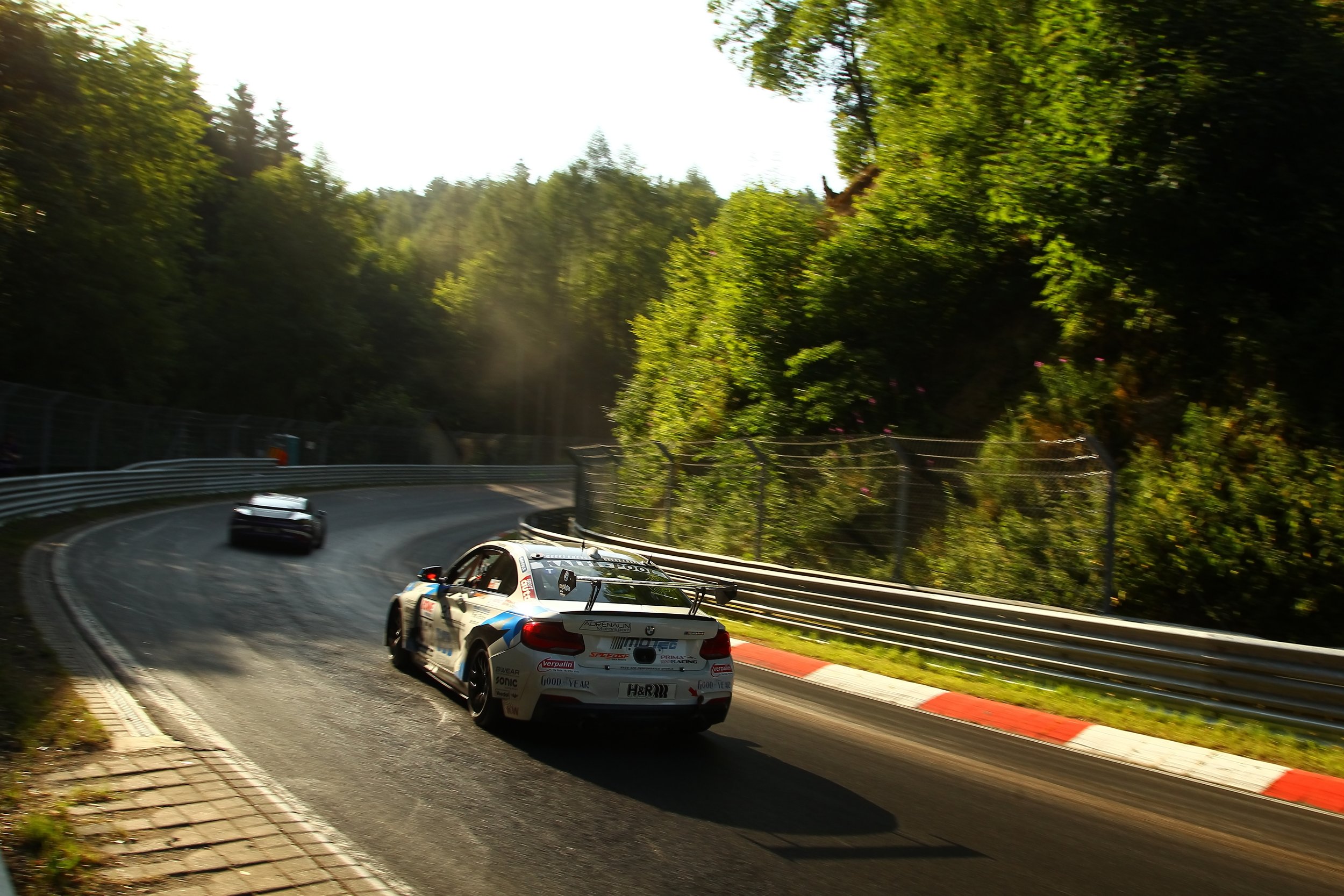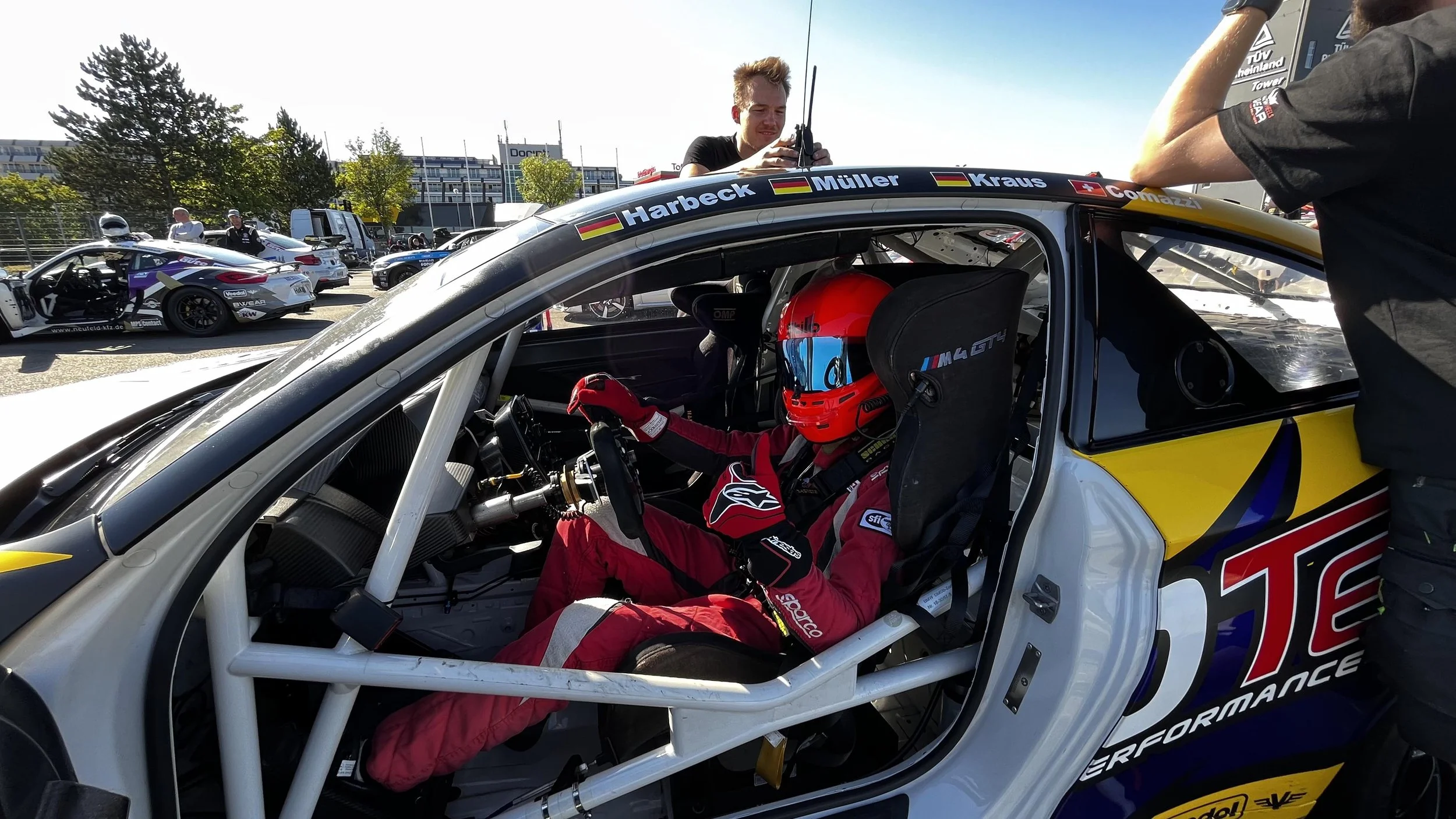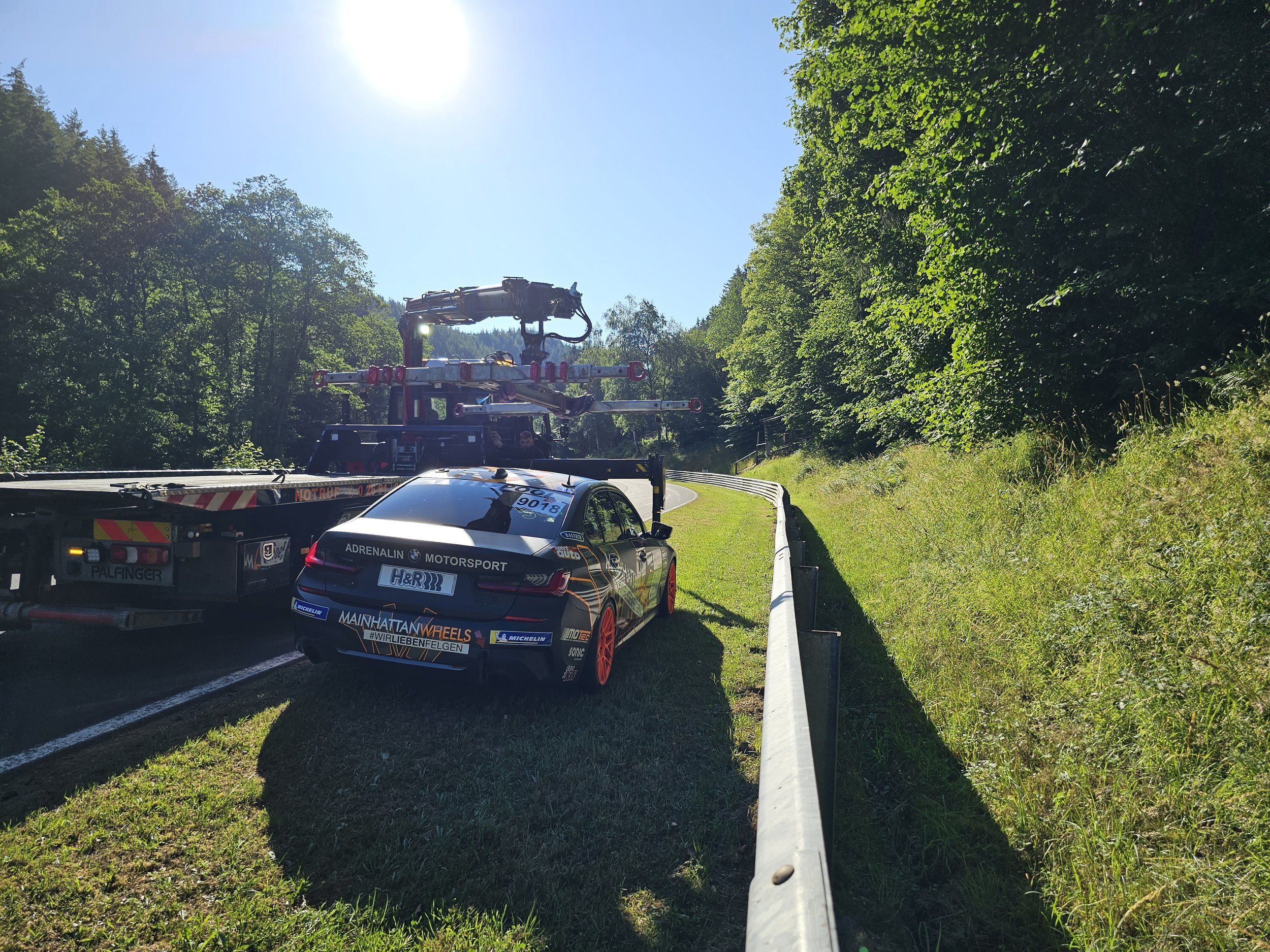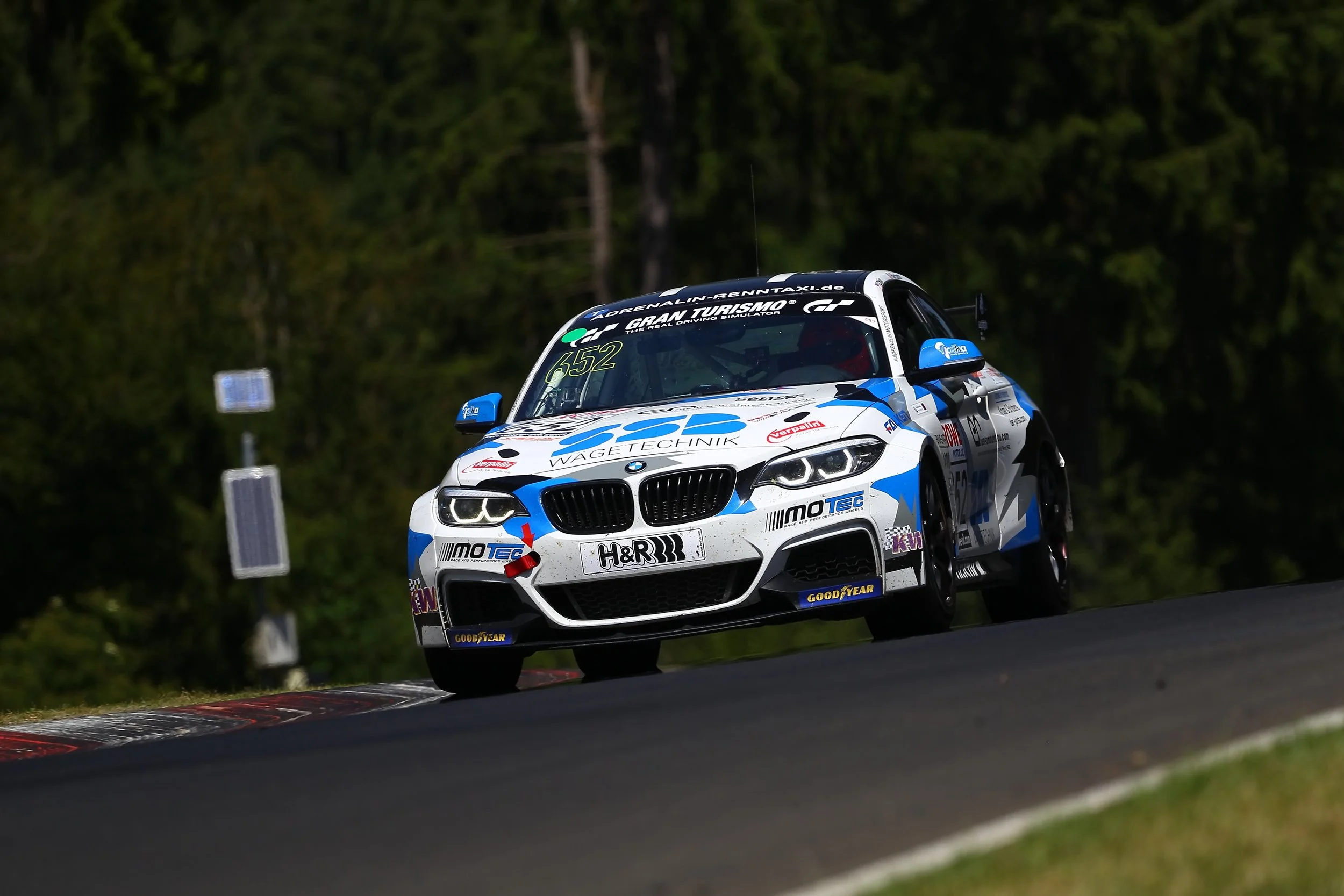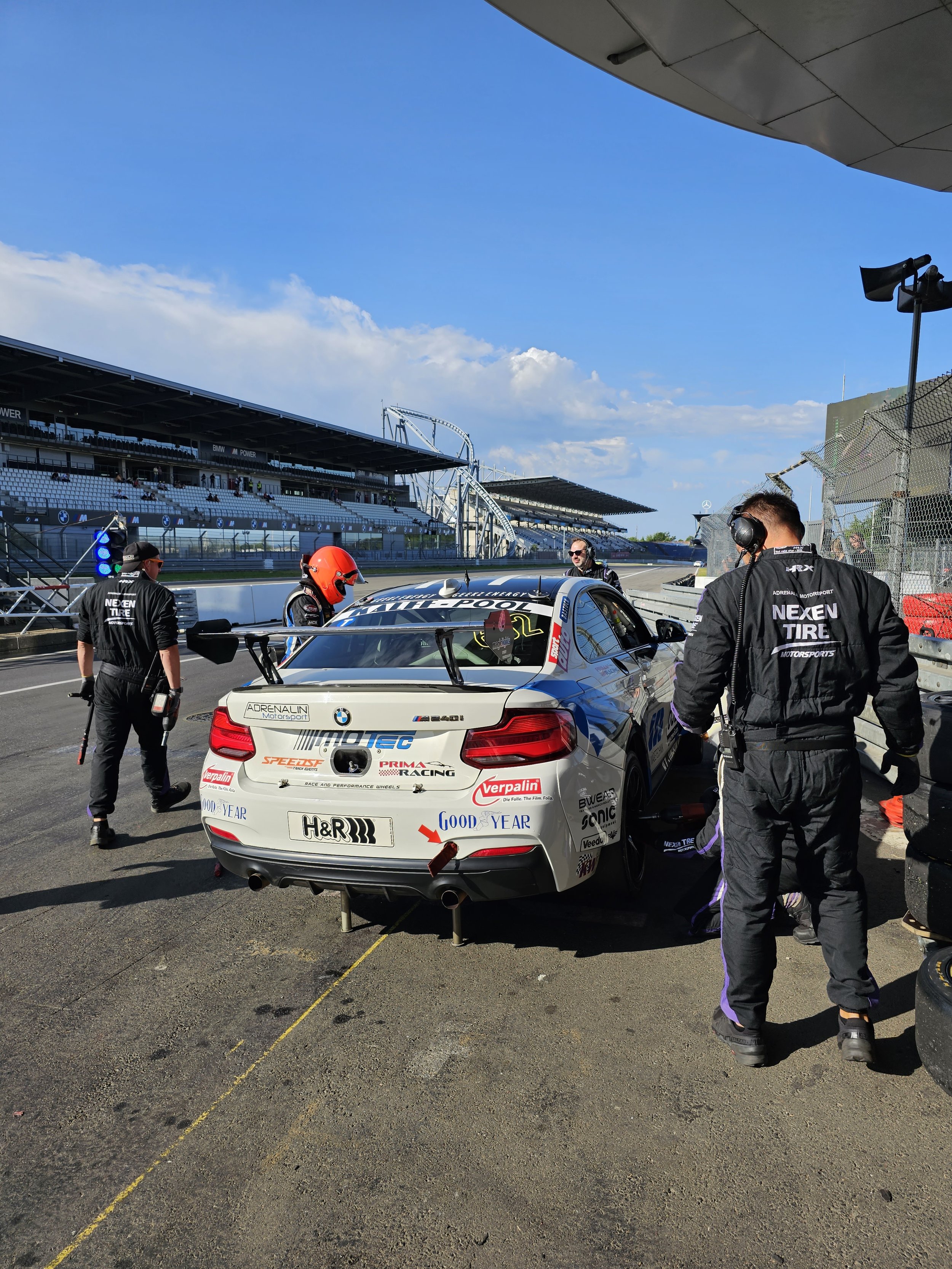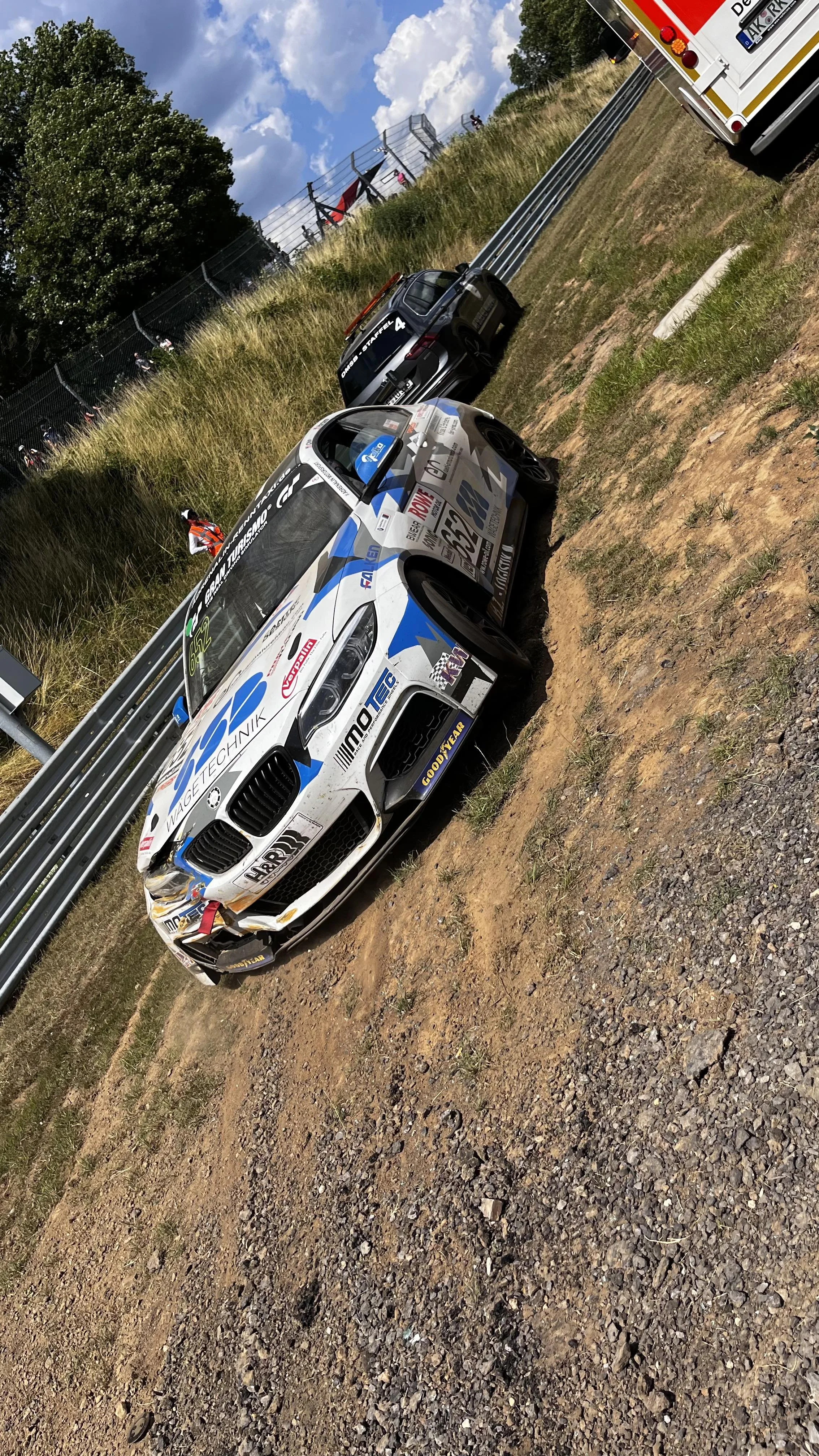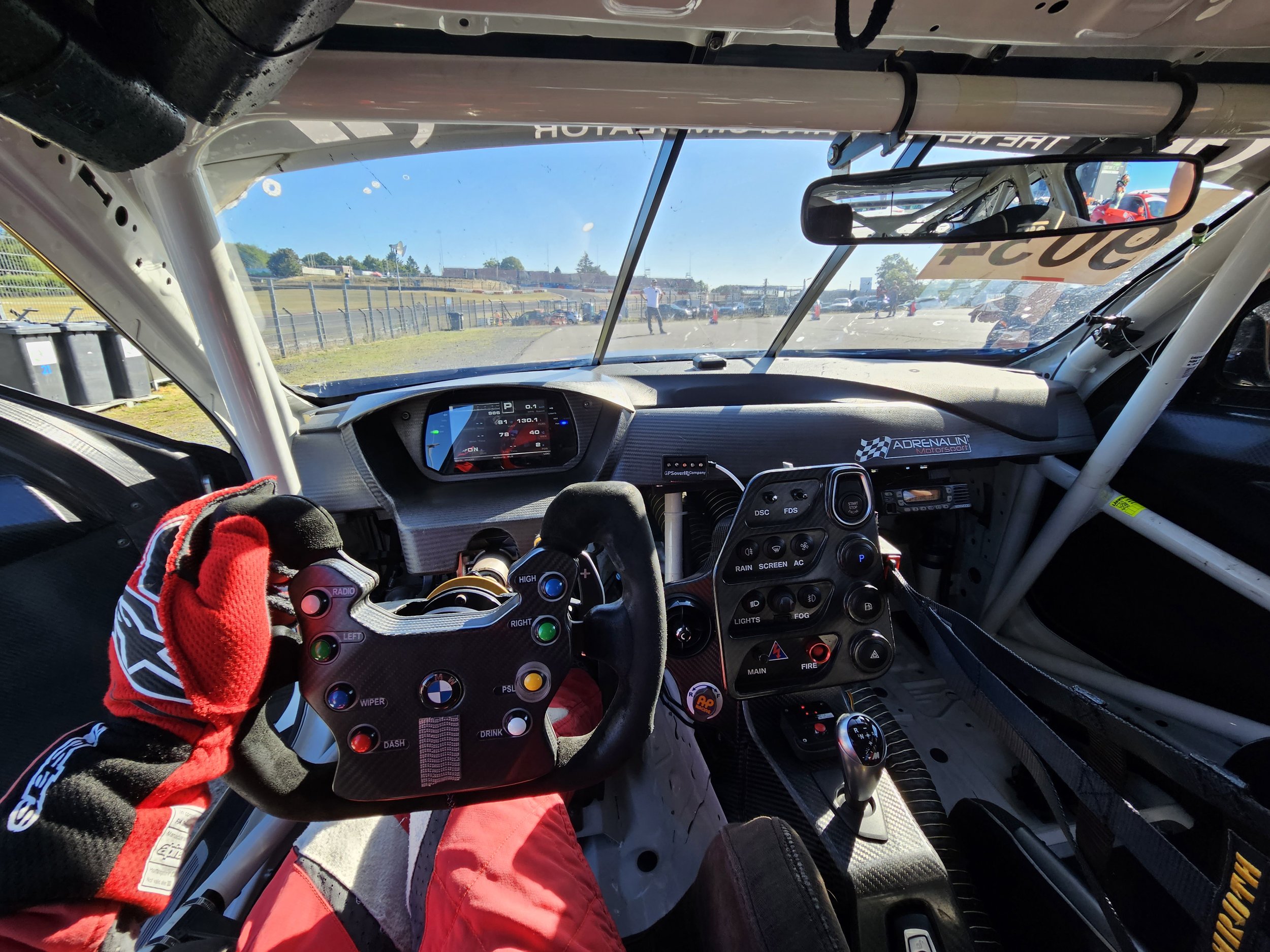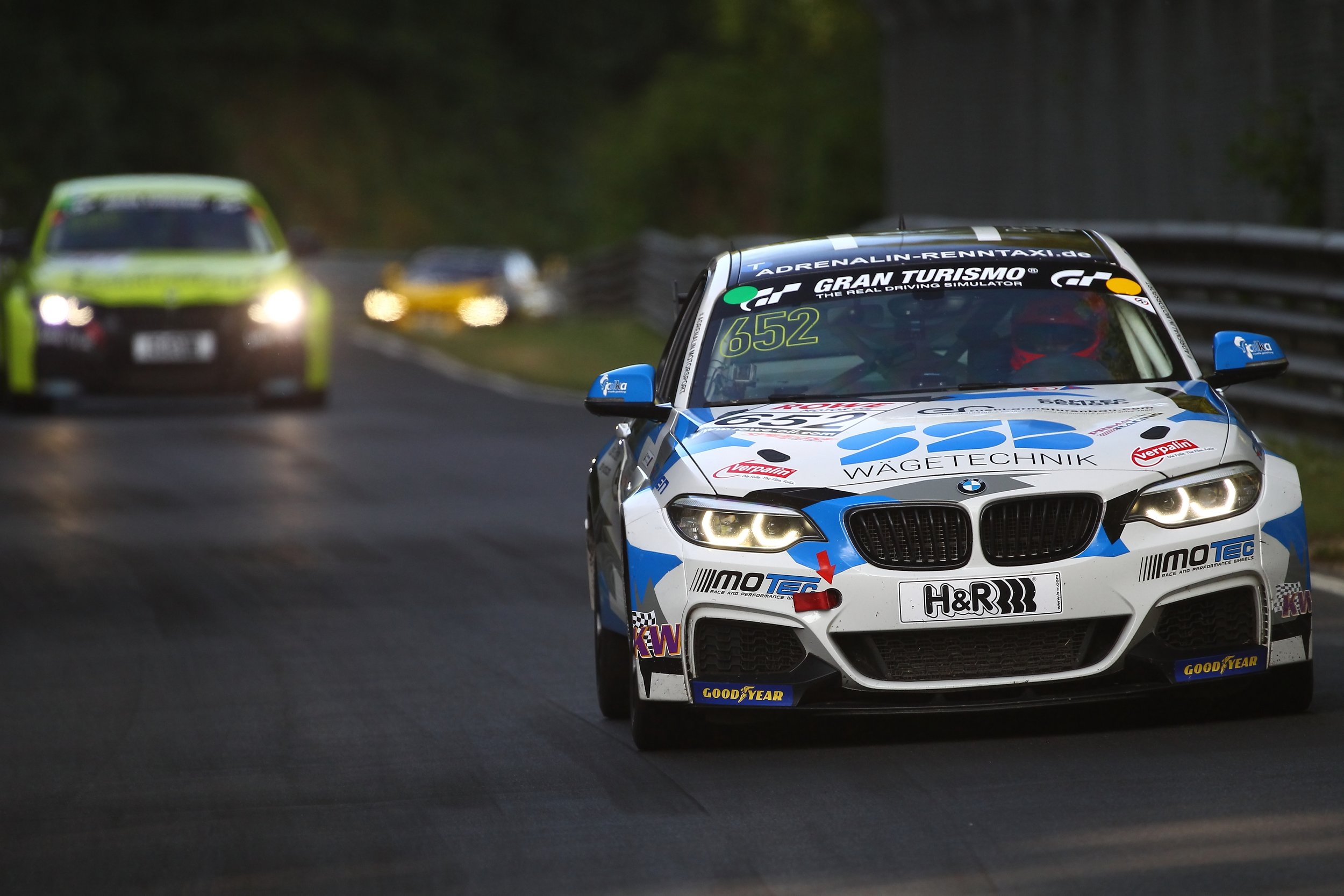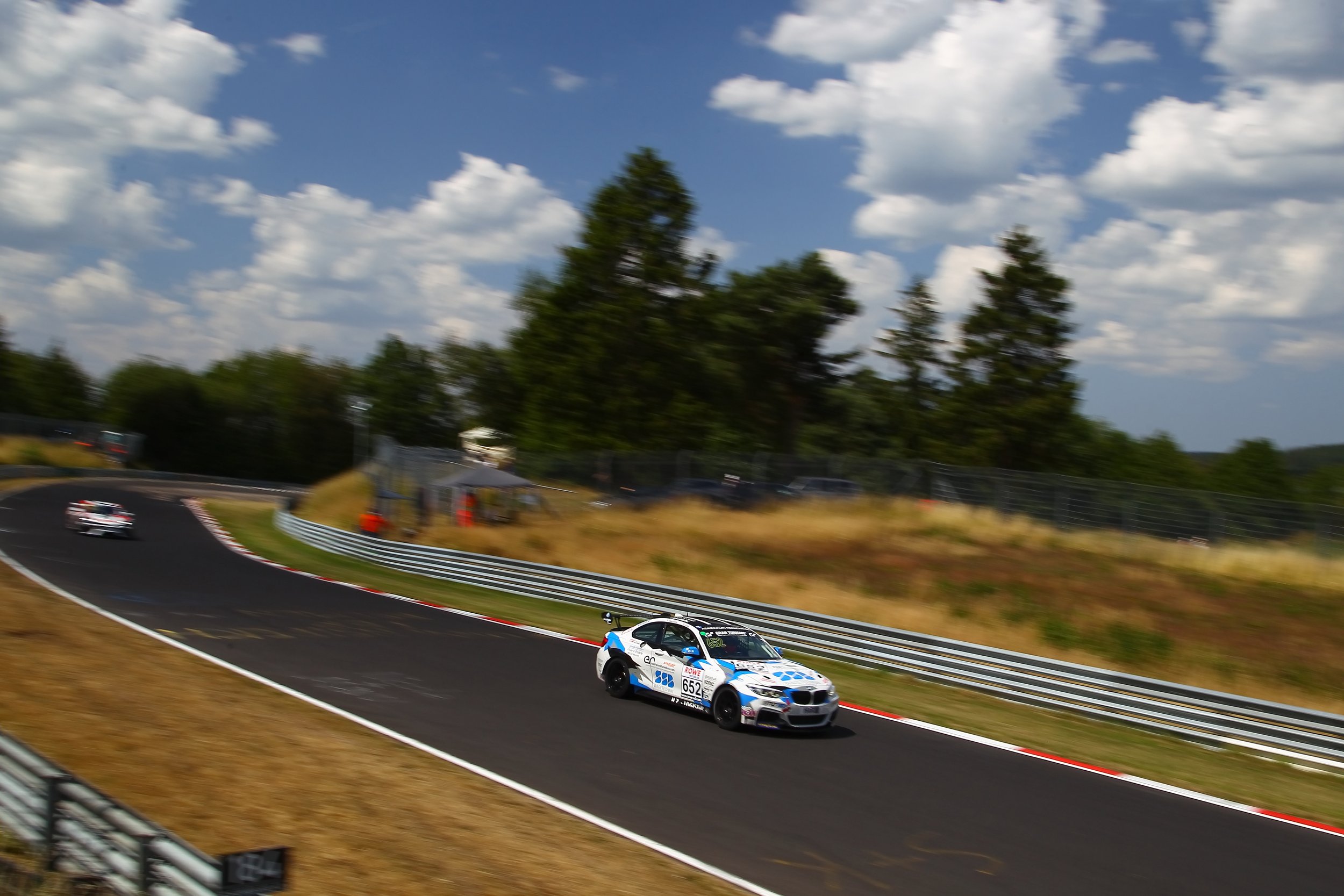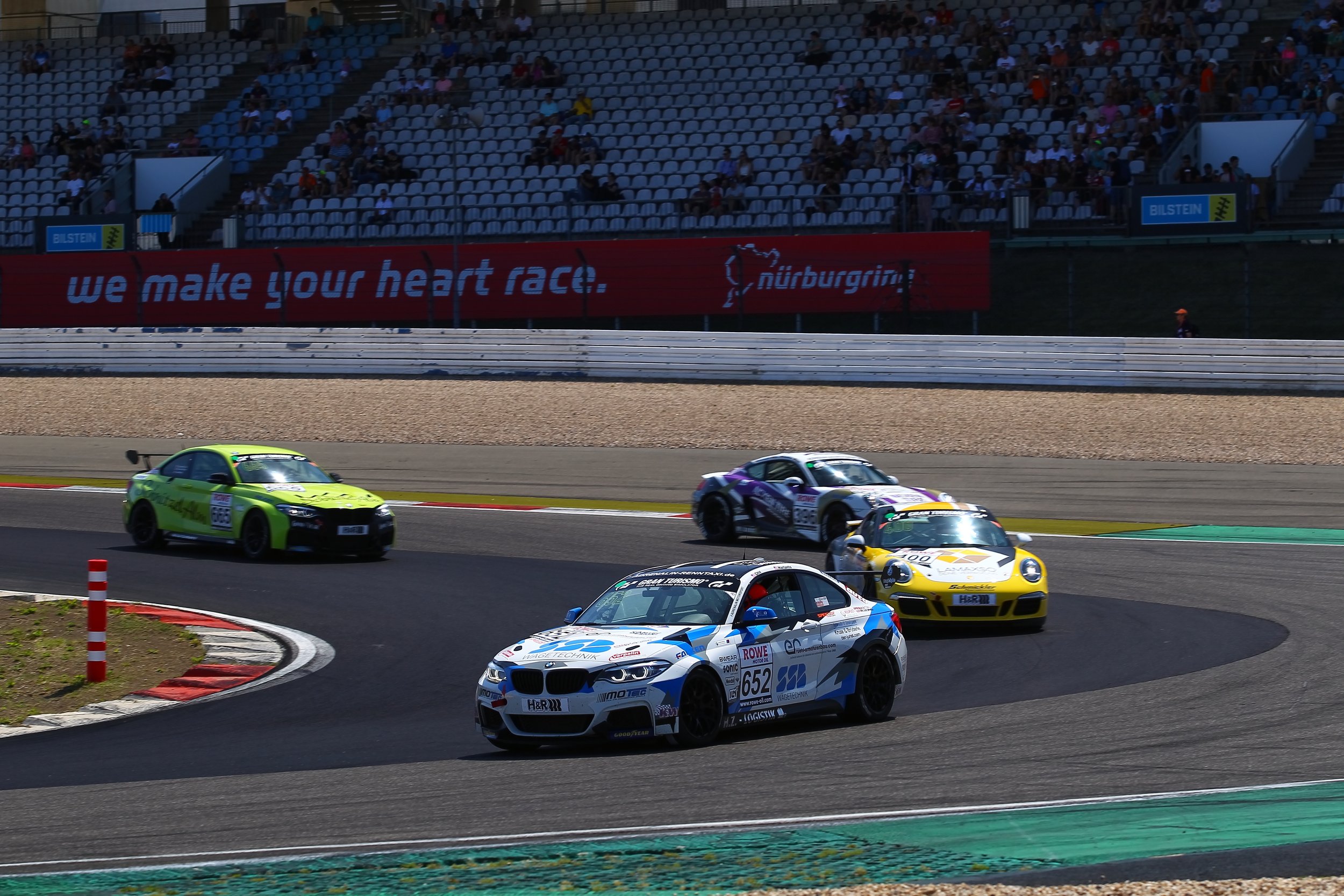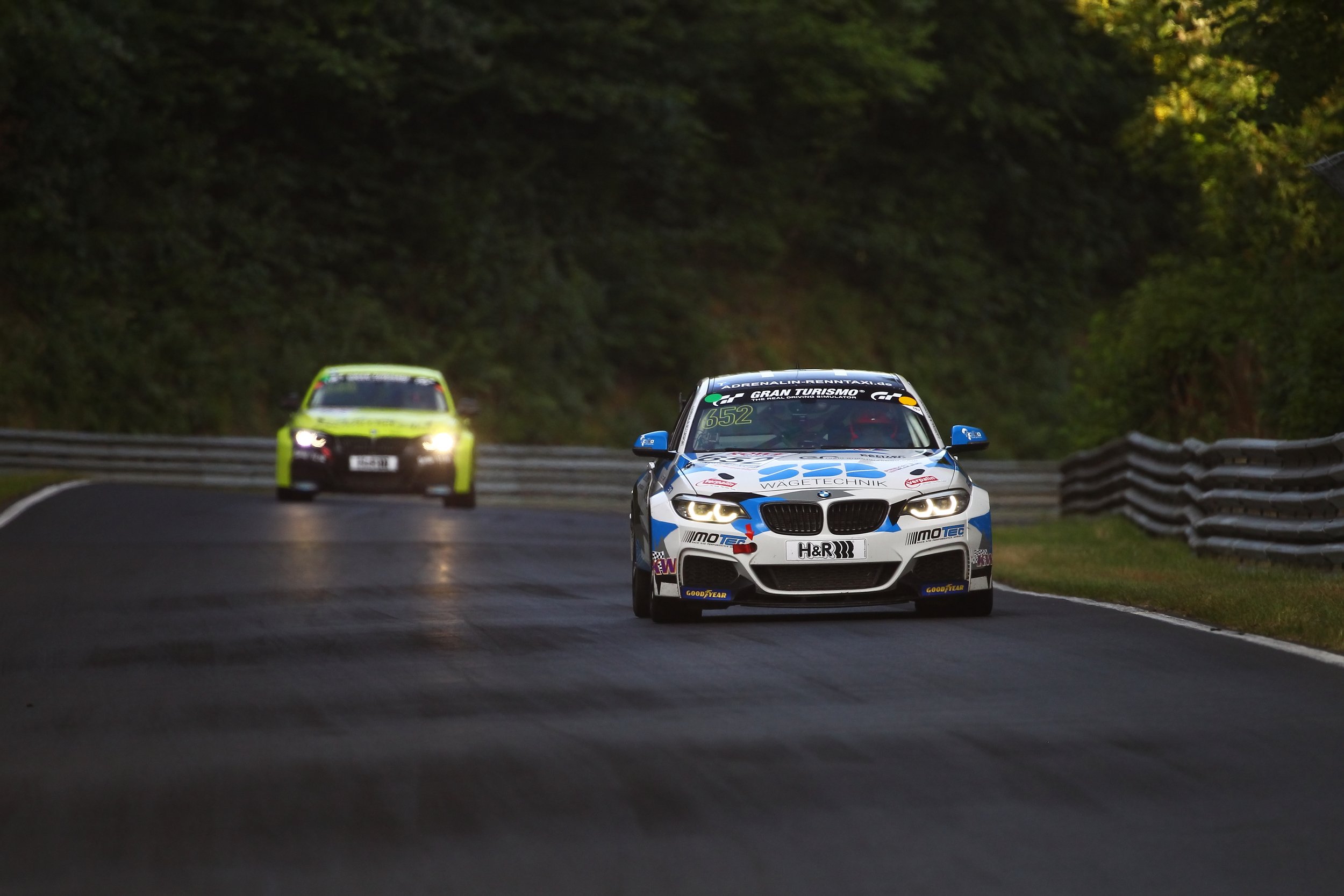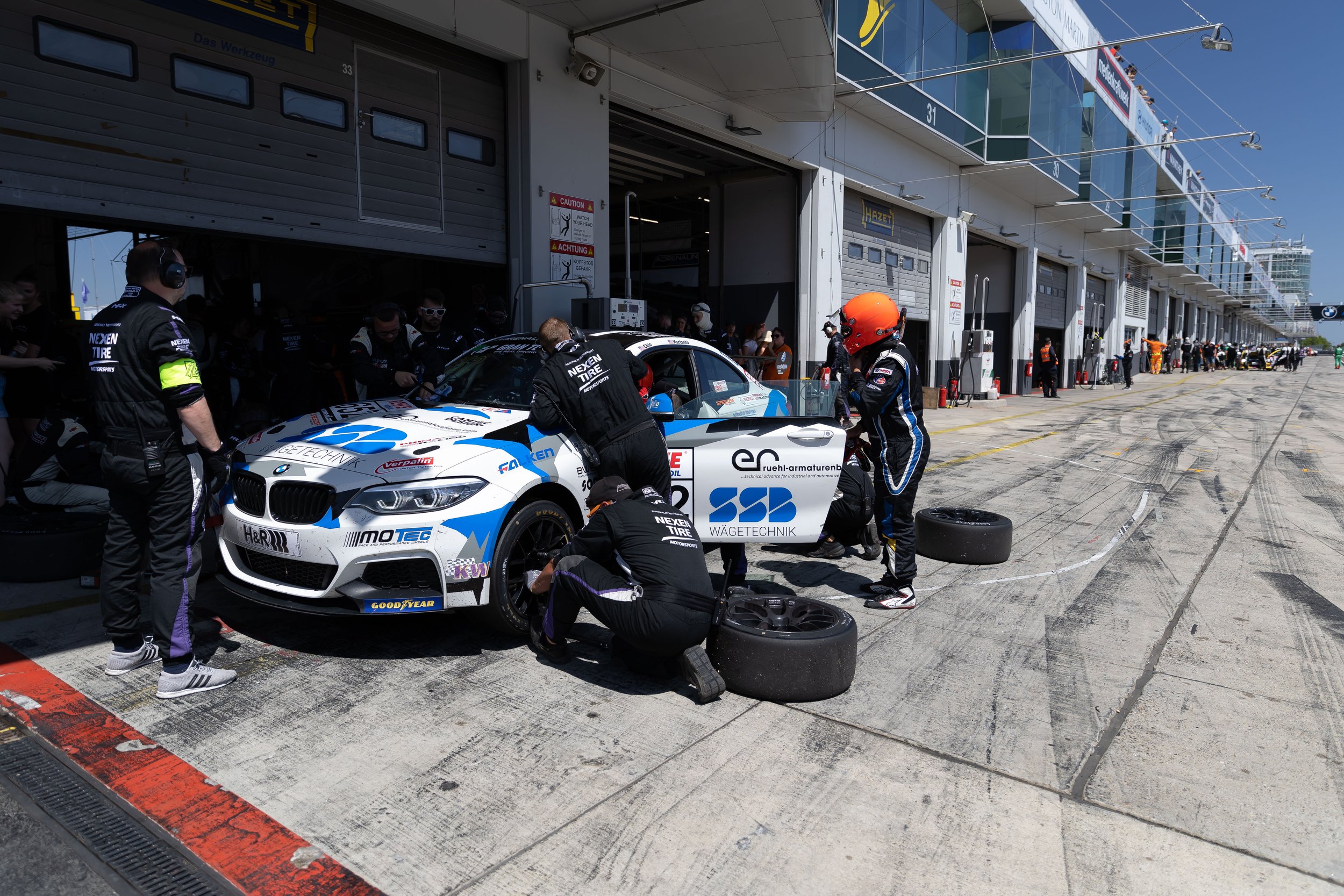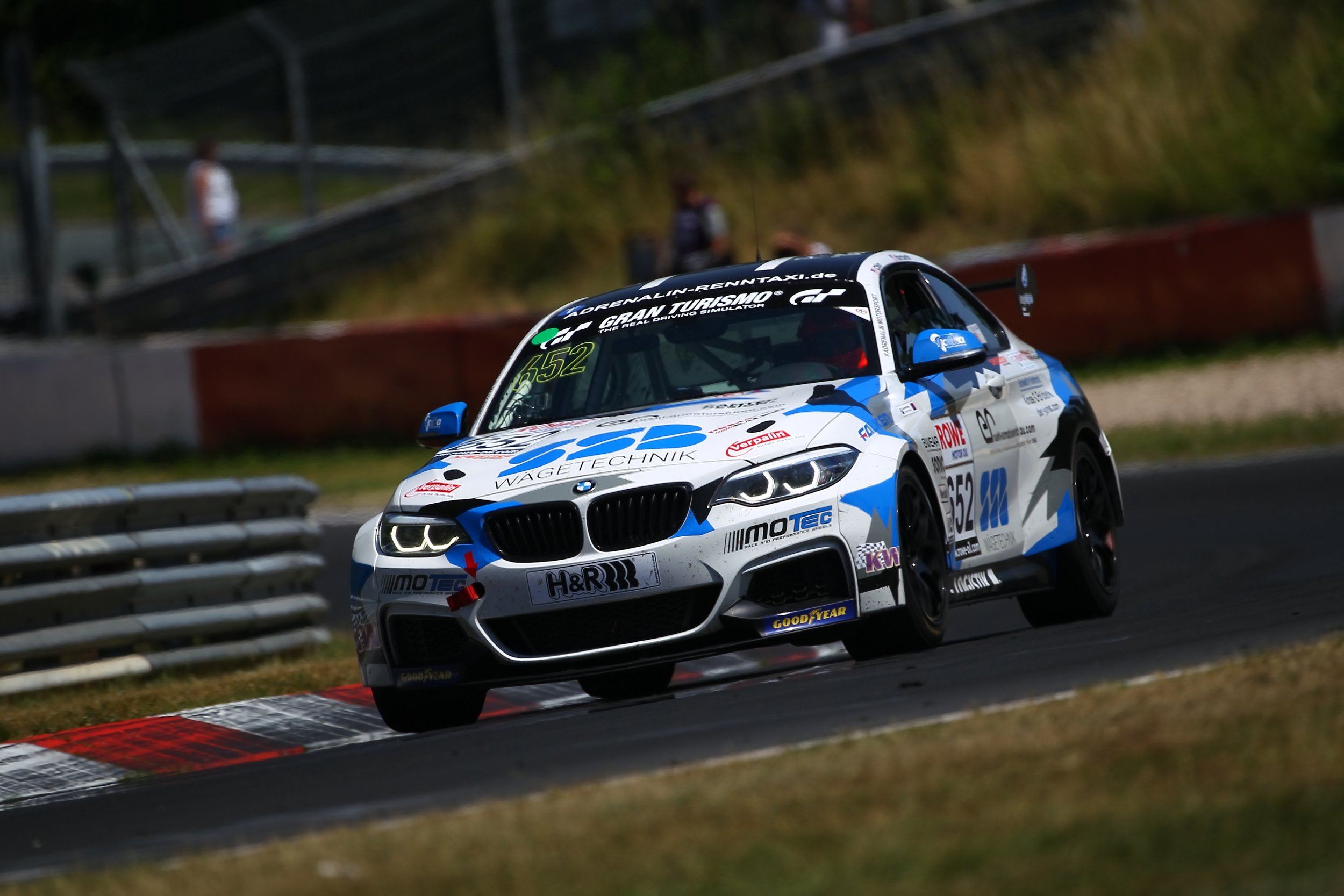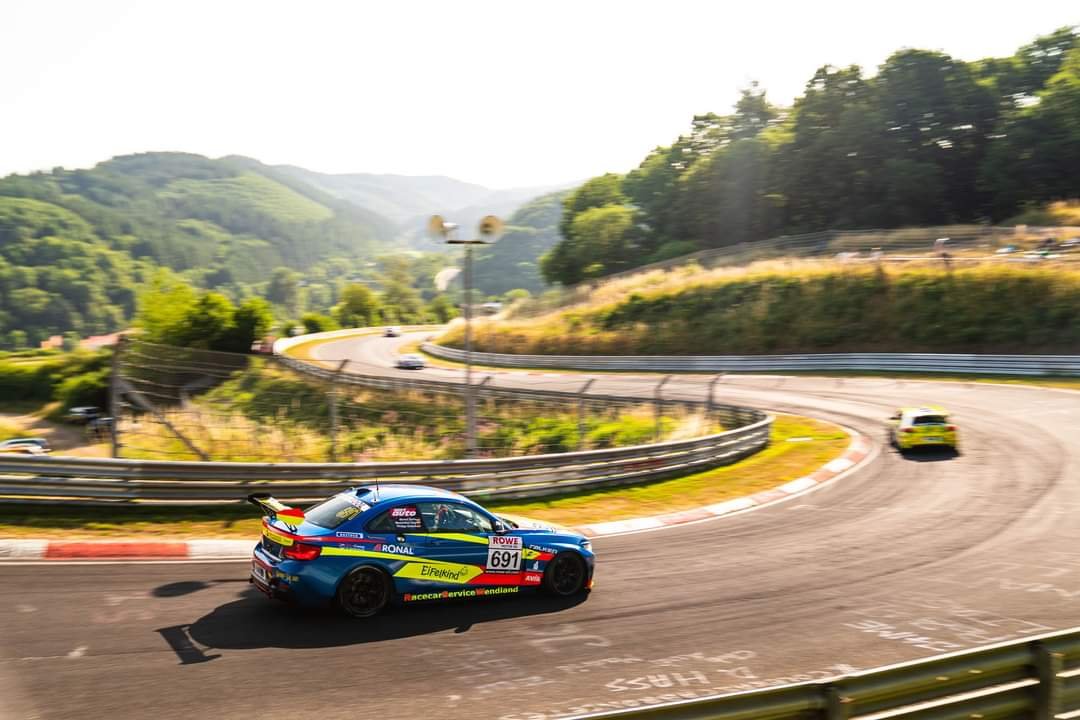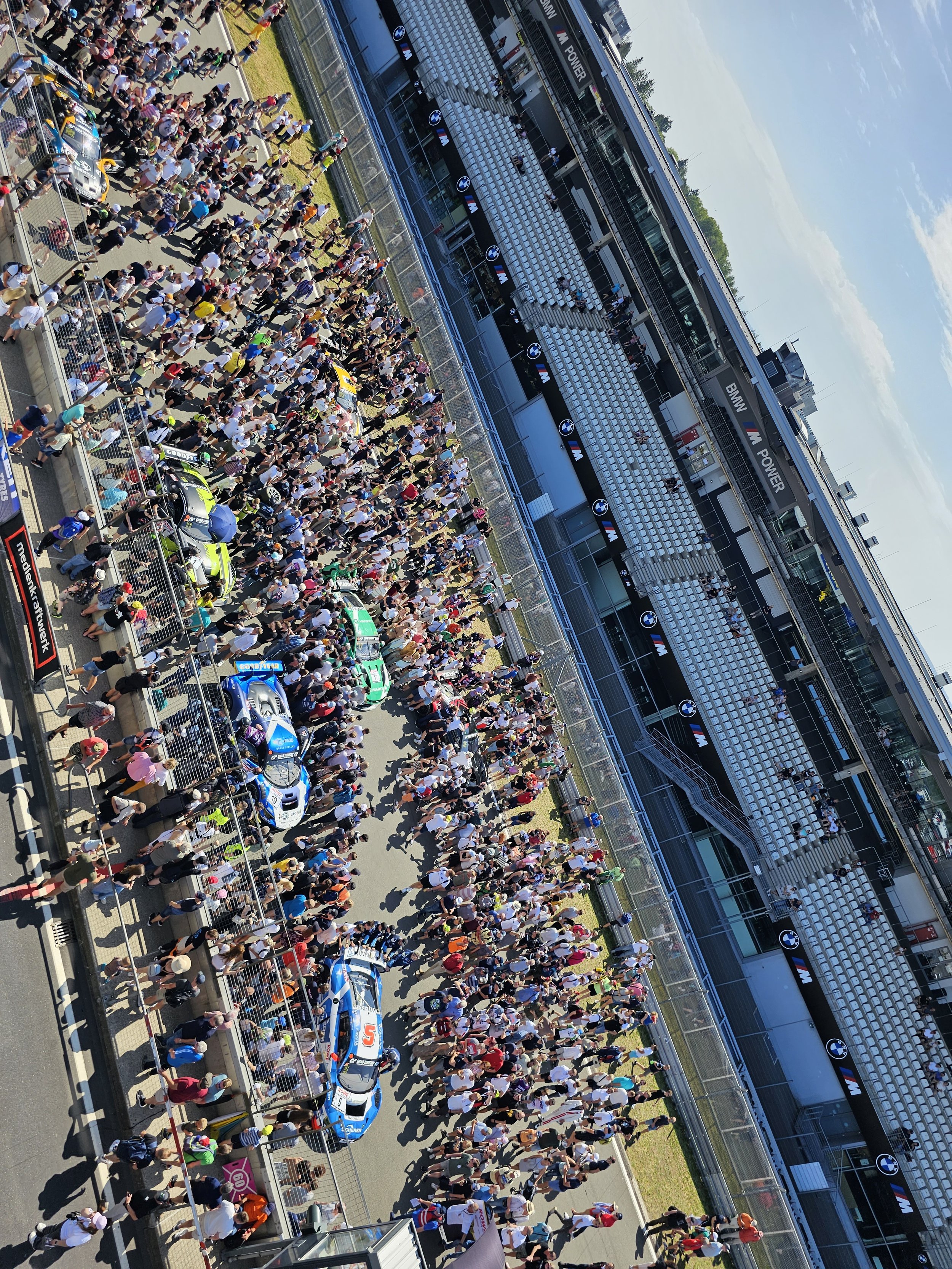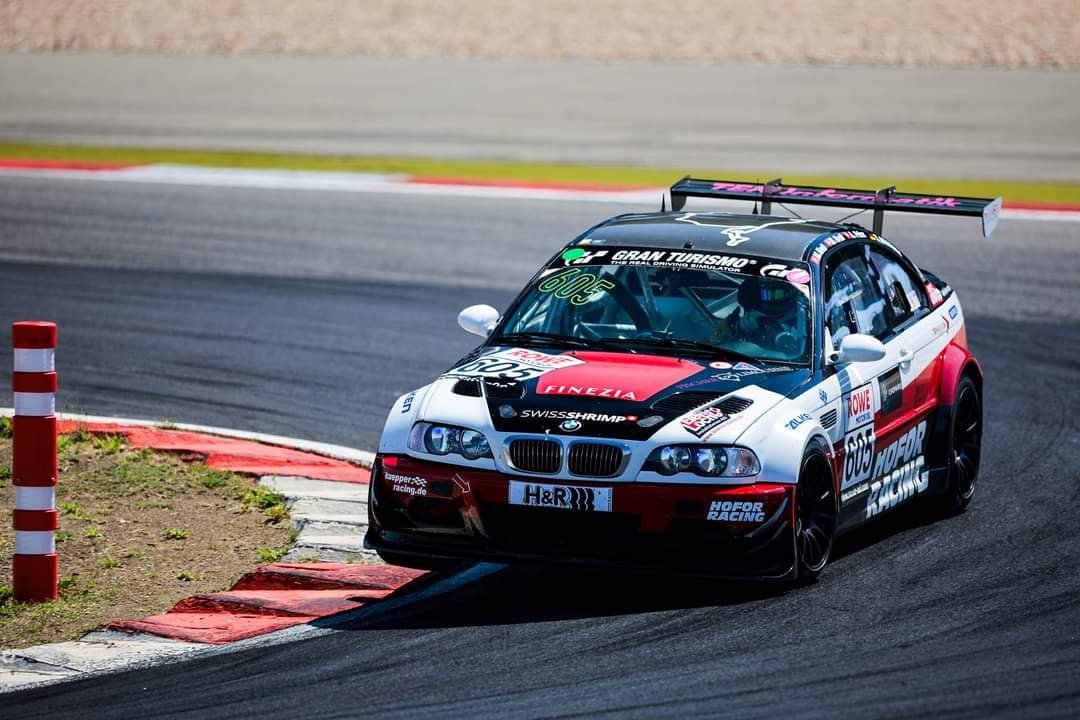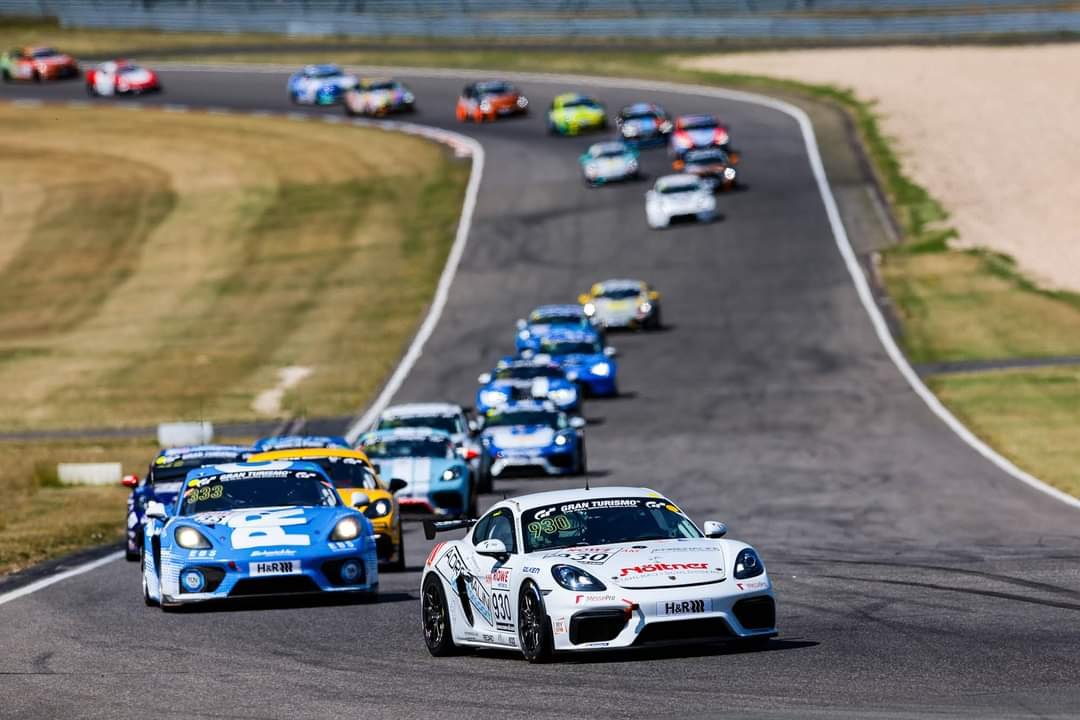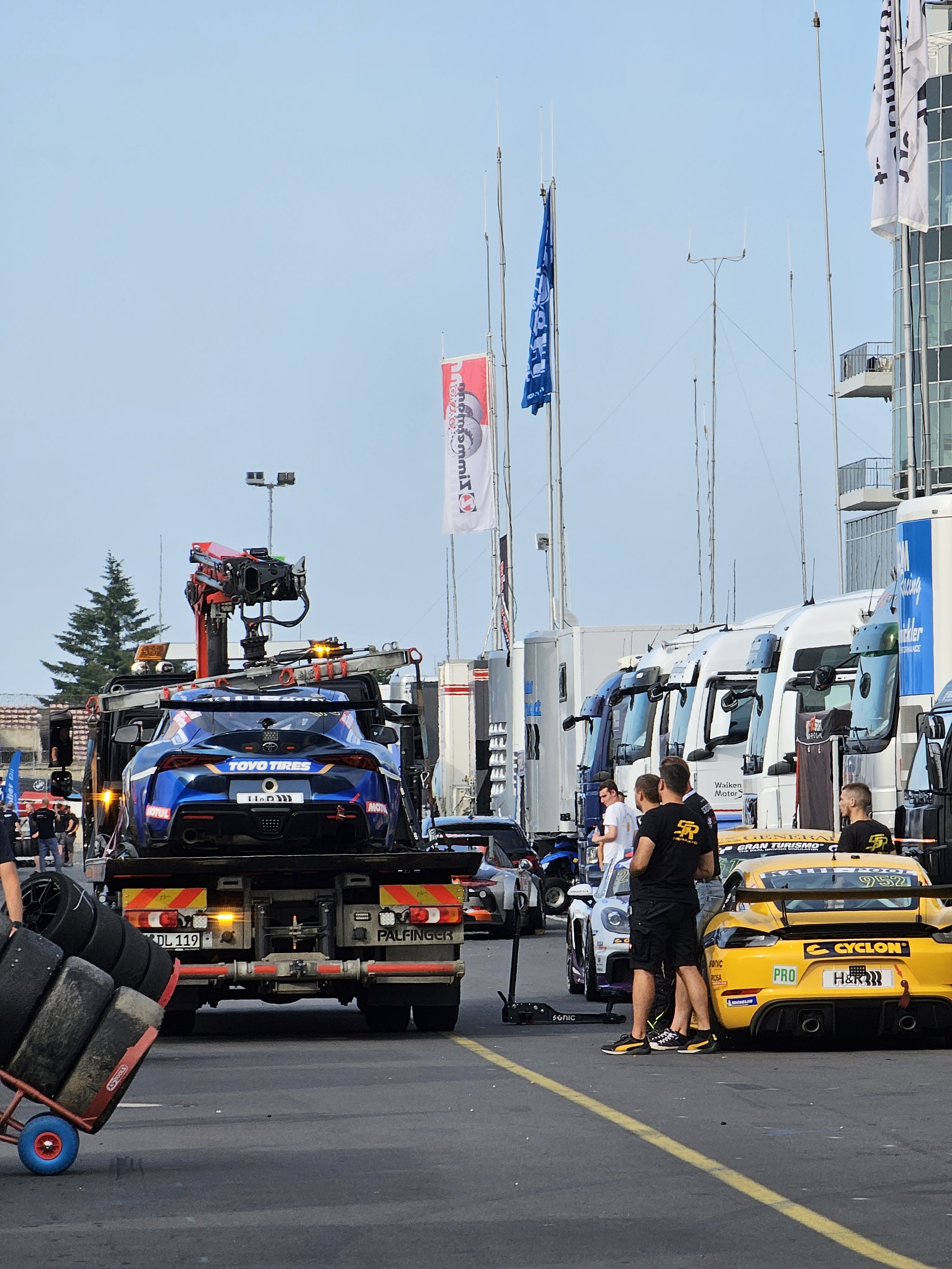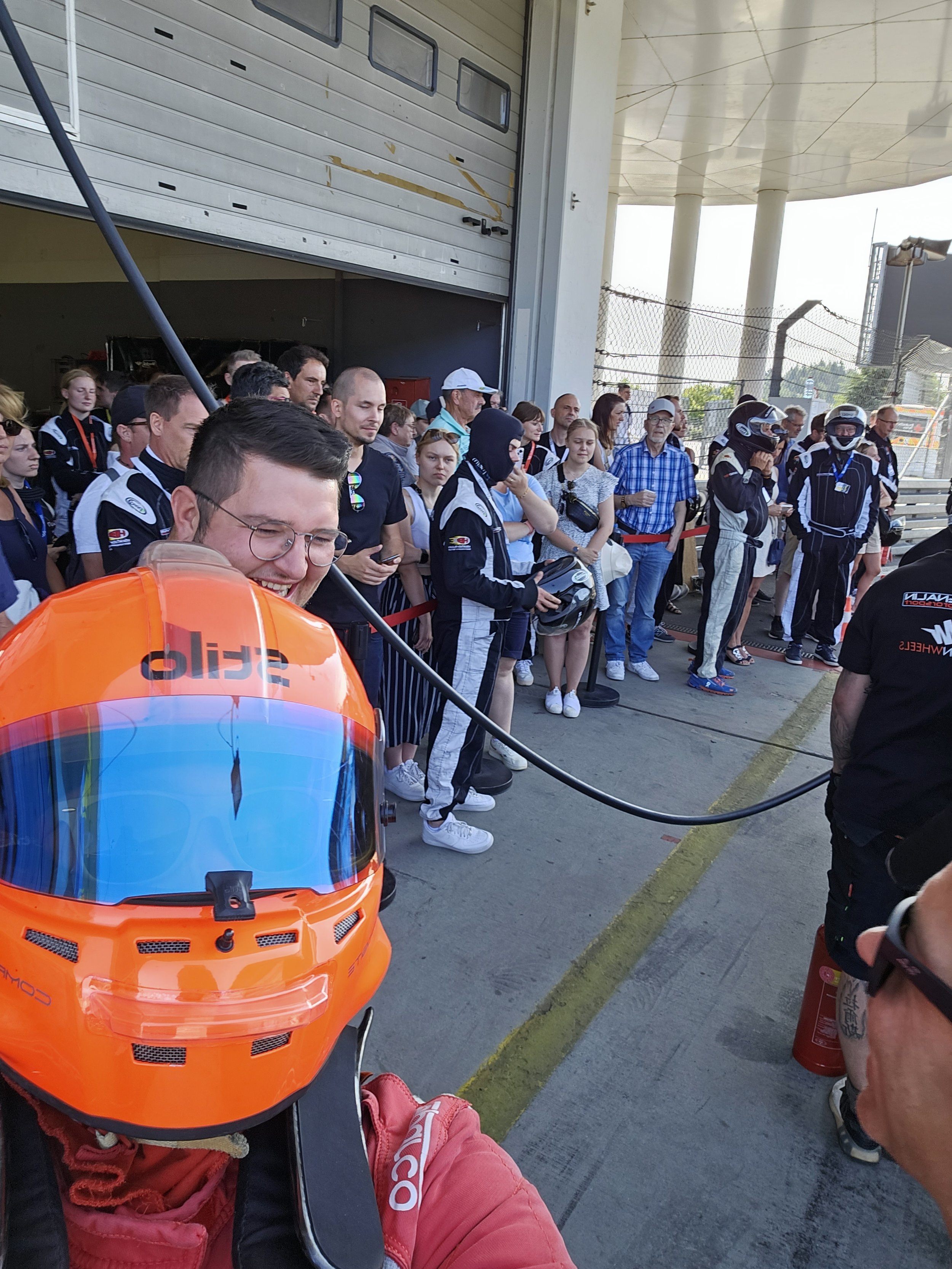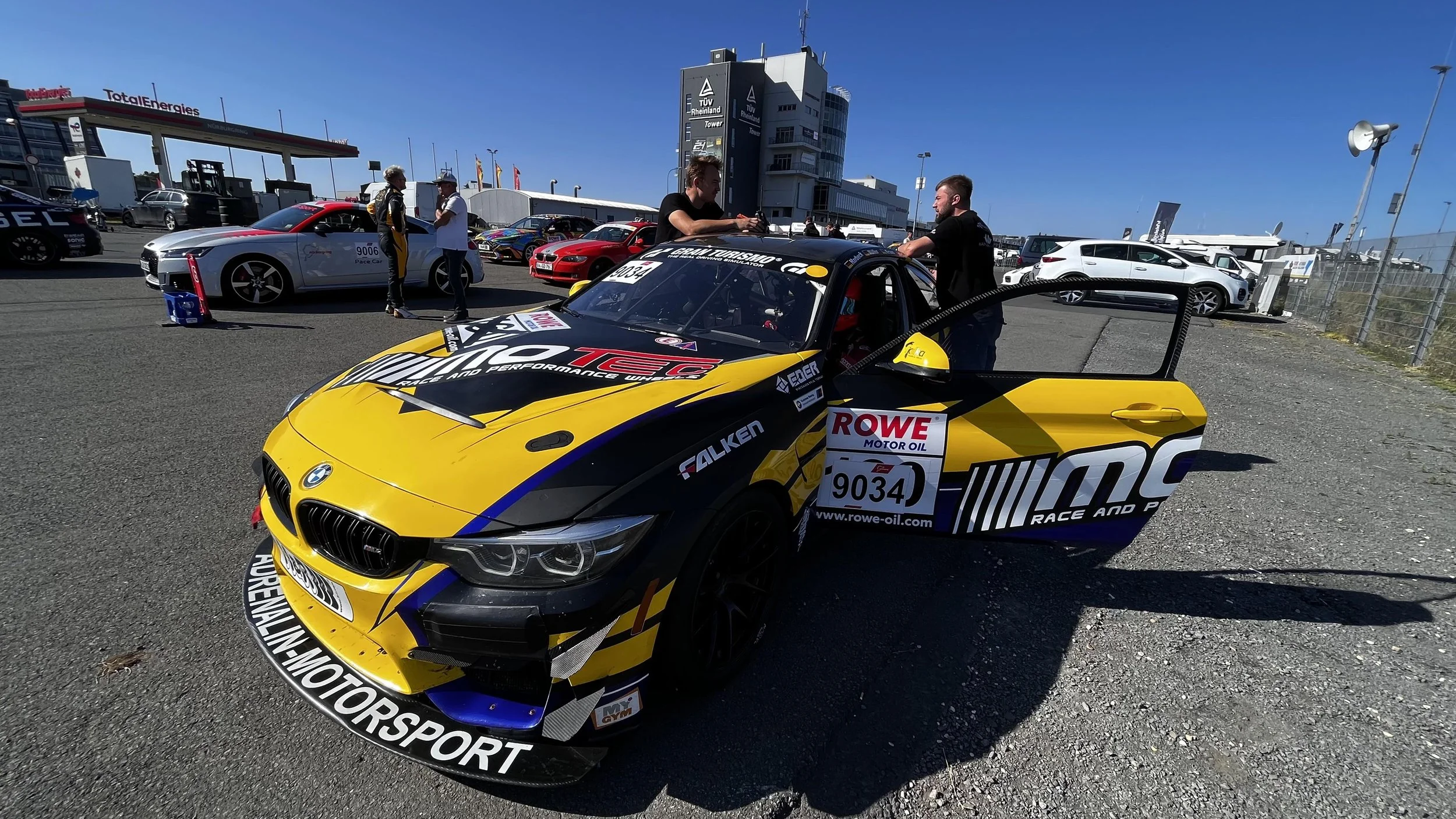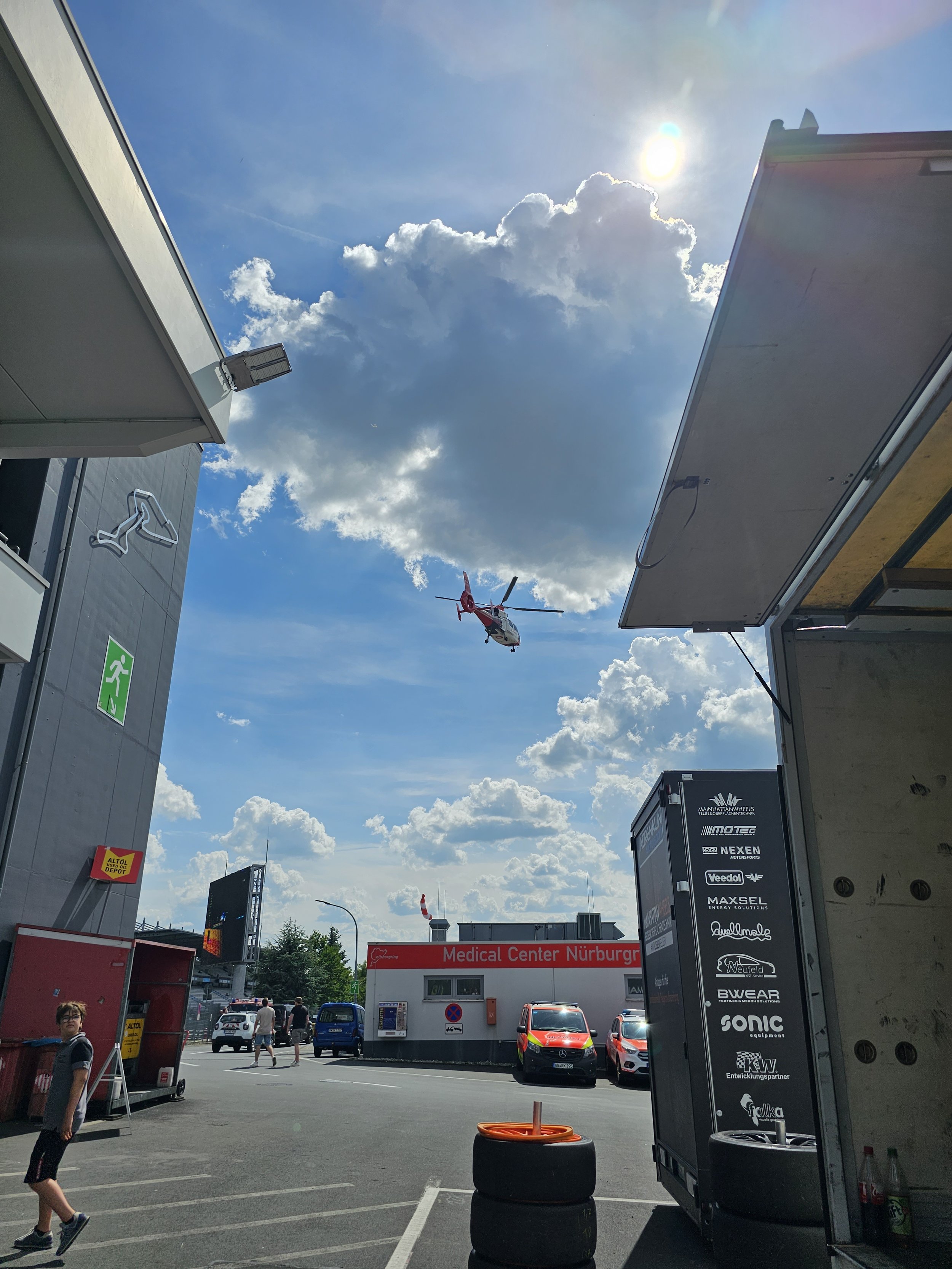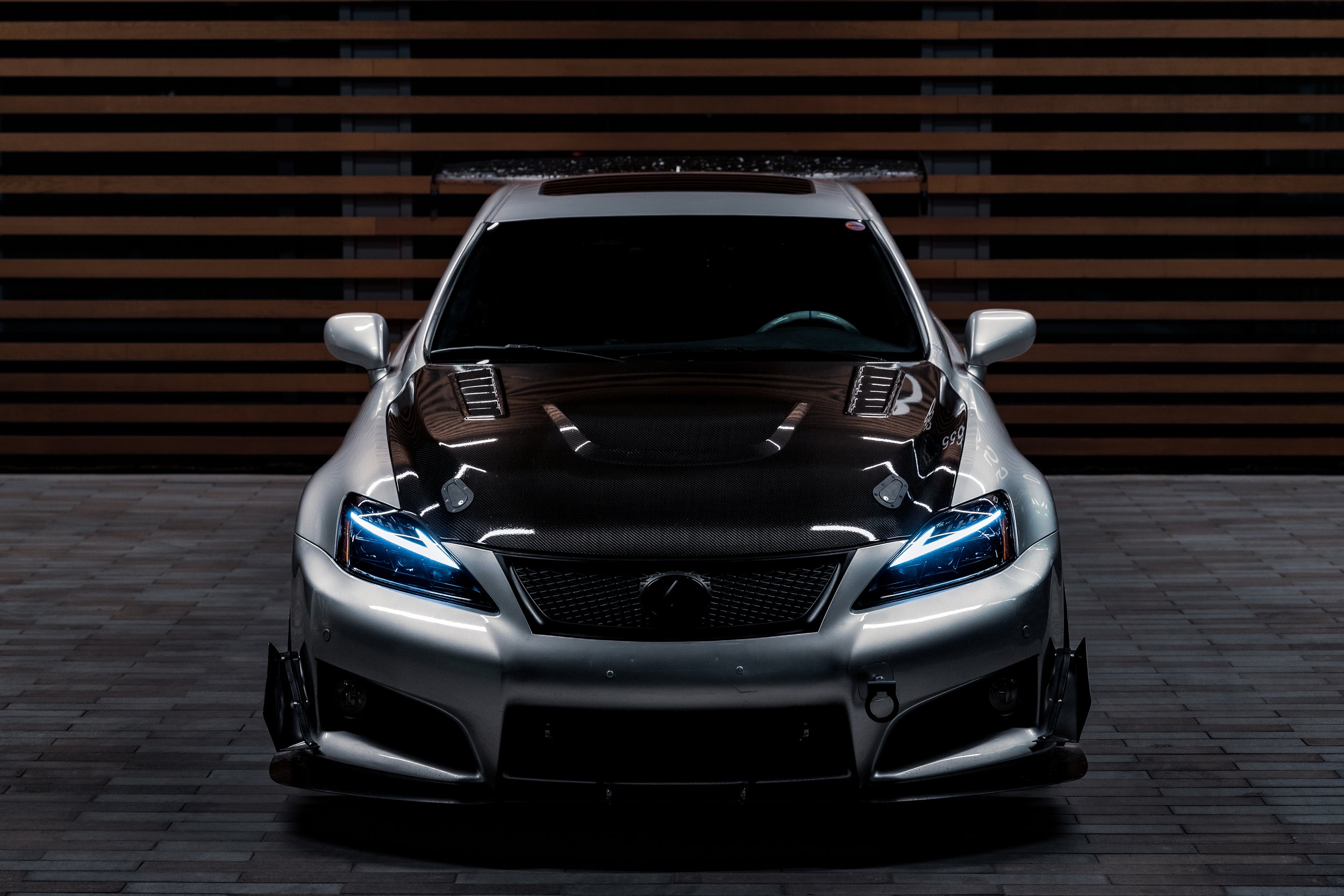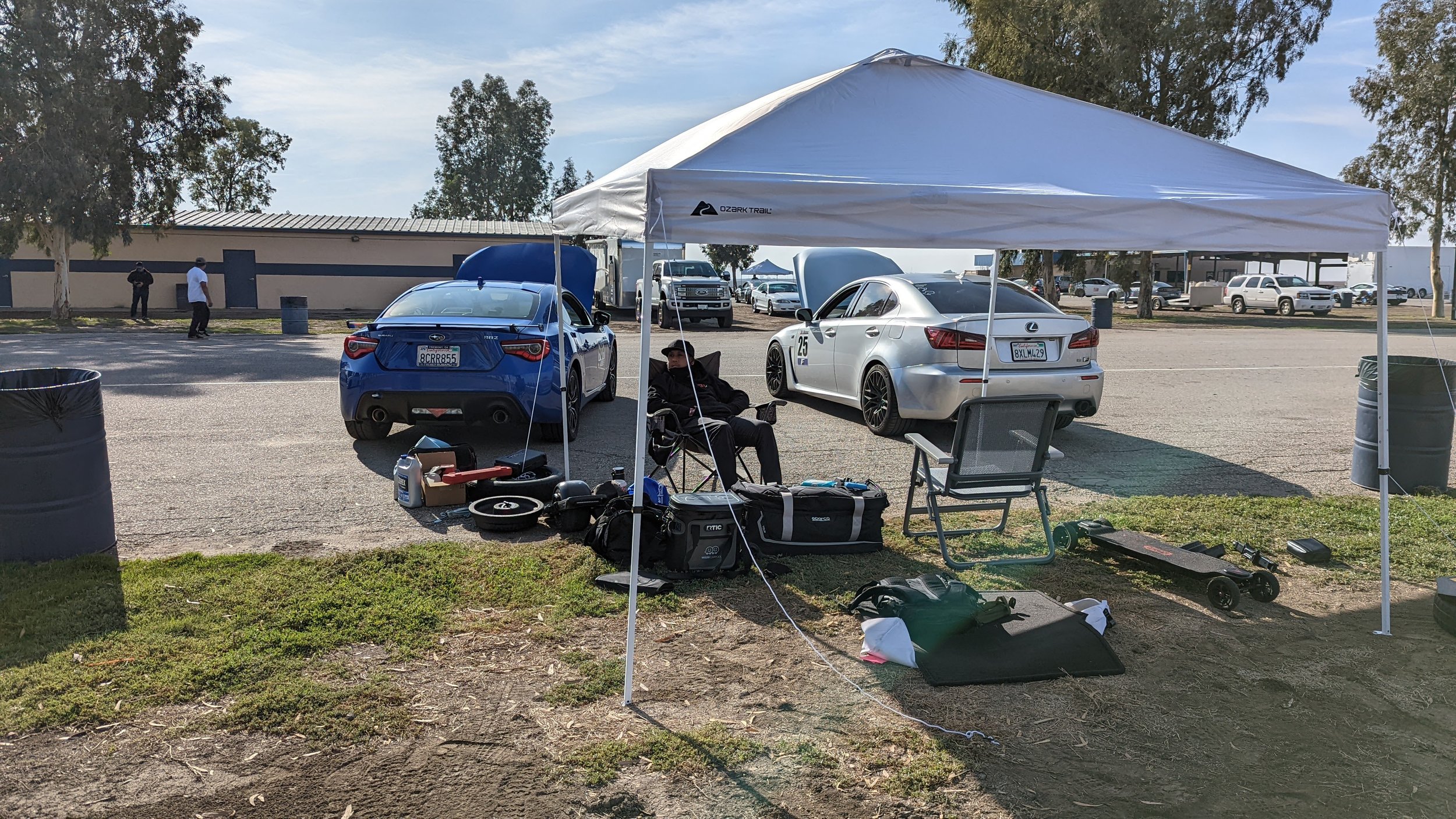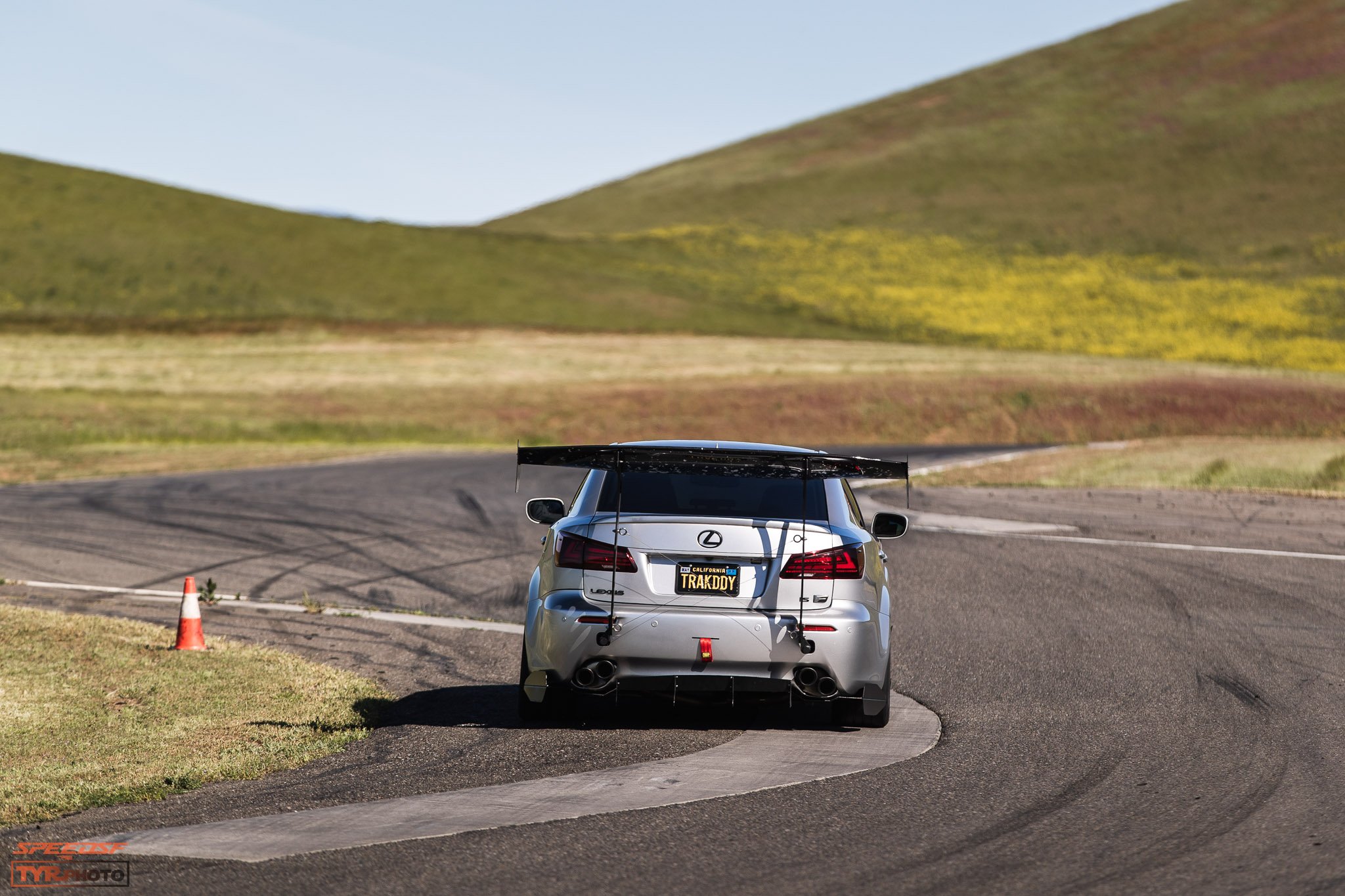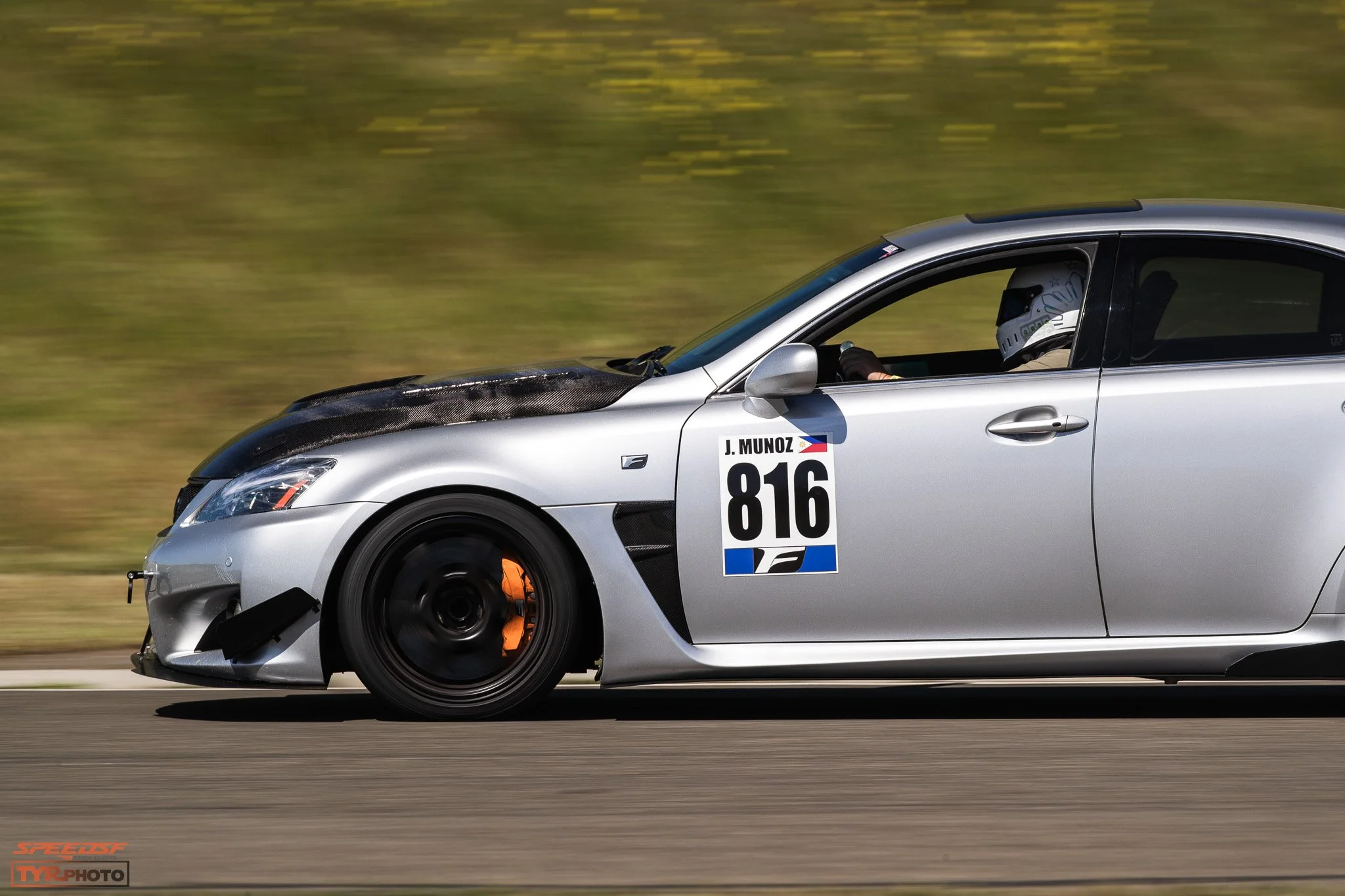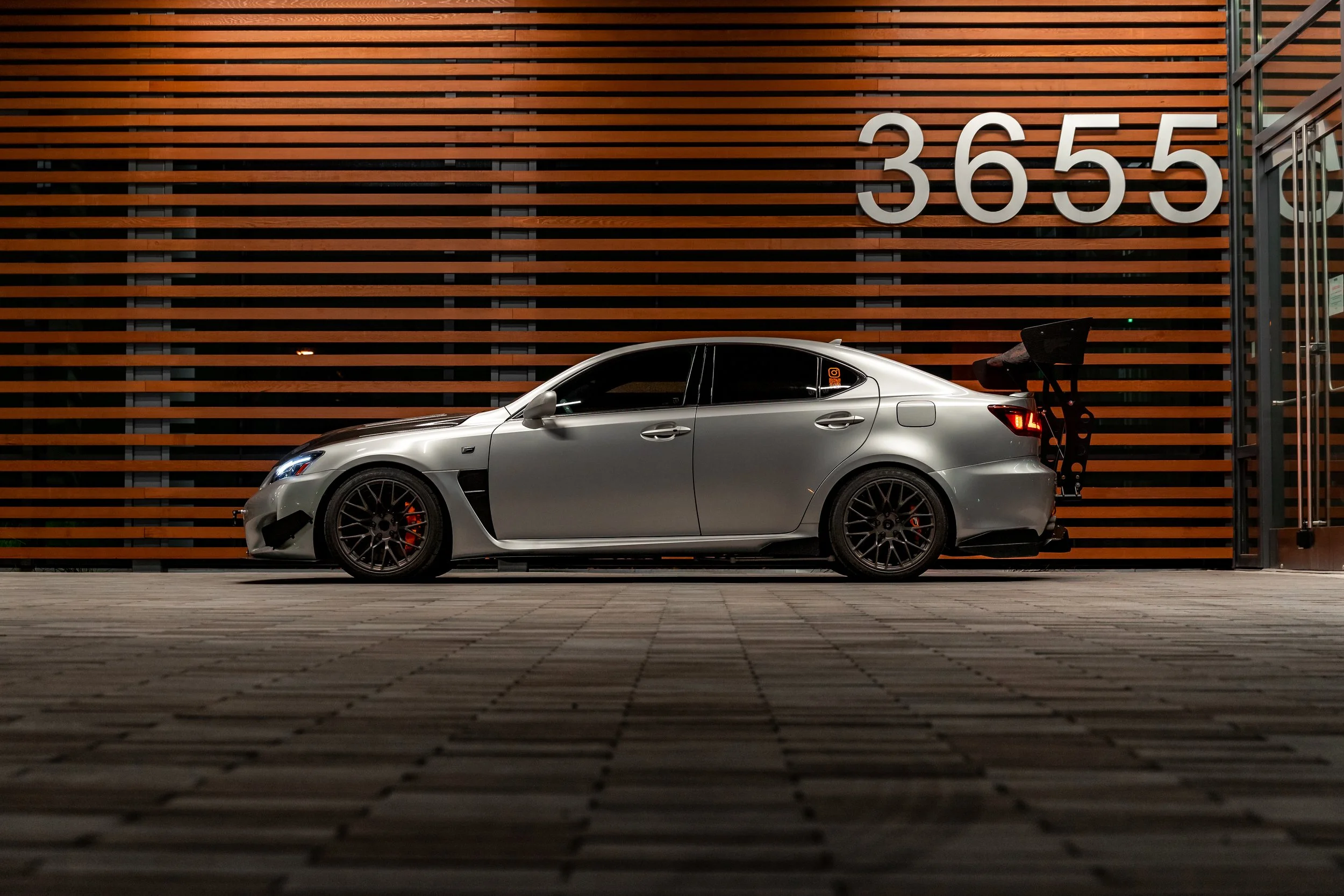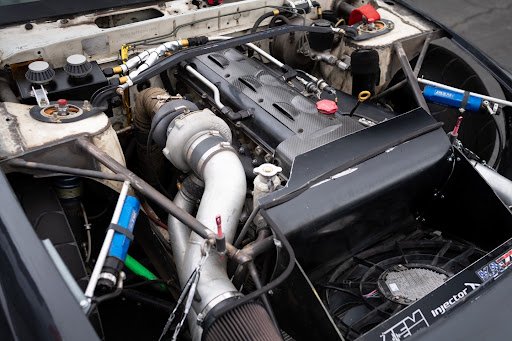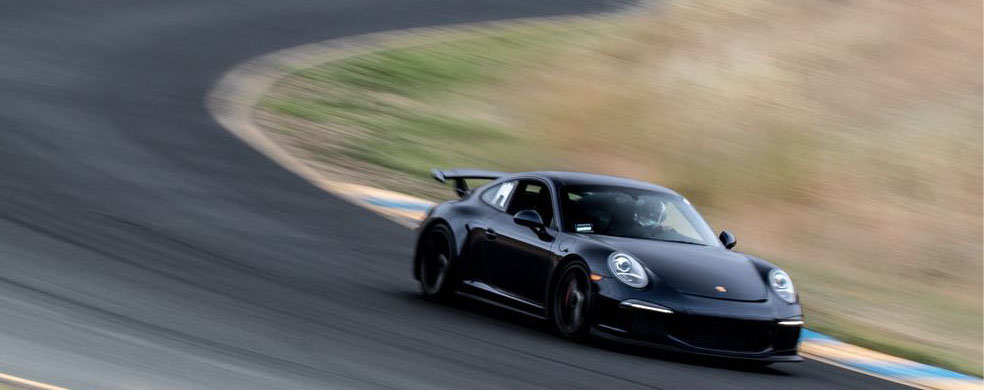
Gordon’s M2: Iteration Cycle
Rather than descend down the rabbit hole of modification, Gordon Mak decided to study the human element in the racing equation to find a process that would help him advance as a driver.
After beginning HPDE during an Apple track day at Thunderhill East, Gordon Mak found a new outlet for his workplace frustrations and his analytical habits.
The Golf R he got his start with proved to be impractical, and practicality being a criteria he’s used to pick his collection of track cars, it didn’t last too long. The Golf’s nannies intervened too much to get closely acquainted with, as the instructor sitting alongside Gordon mentioned several times.
That instructor also encouraged Gordon to look in the right direction, squeeze the throttle with caution, and soften his steering inputs as much as possible. That coach did Gordon an enormous favor that day by instilling good habits in a firm yet friendly fashion. On his drive home, he had a moment to ponder the afternoon’s teachings. Gordon recognized that his new hobby would require two things: a communicative car and the right skillset needed to exploit its full potential.
By the next spring, Gordon was presented with a chance to buy a first-gen BRZ for invoice. The rawness and urgency of a lightweight, balanced car had him hooked, and the first big spin at The Andretti Hairpin had him shook. “Oversteer was a new concept to me,” he said.
Rather than remain intimidated, he tried to suss out his shortcomings then and there. In analyzing his onboard footage following that track day, Gordon could clearly see how ill-equipped he was to deal with the situation. “I just froze; my hands didn’t move at all,” he admitted.
While some told him it wasn’t the prudent thing to do at that stage, Gordon took a leap and bought an even tail-happier car in the middle of the pandemic. The price was right, and the on-tap torque from a twin-scroll turbo motor and short wheelbase made the GR Supra a lively, exhilarating car with which he could develop his car control skills.
From then on, he committed to the invaluable skid experience of Drift SF, where he could hold long slides, connect corners, and spin without any consequence. “It was sanctioned parking lot hoonery — low credit score activity — that helped me make my first big steps as a driver. By the second event, it all clicked for me,” he said.
“I have to thank Joe McGuigan for teaching me how to slide the car with confidence. Once you move past the pit-in-stomach feeling of losing traction and the belief that you’ll be unable to respond, you can get a lot done. Without all the drift practice, I wouldn’t have felt confident enough to keep pushing,” he explained.
As fun as it was, the Supra lacked the directness of the GT86. When the dealership he bought the Supra from offered to buy it back for the same price he paid a year prior, he didn’t hesitate. Without waiting, he replaced it with a GR86 and ran eighteen successful events over the next eighteen months.
The unfiltered driving experience he’d missed so much during his Supra ownership had returned, but not without some adjustment. “After I switched to the GR86, I found myself - for a few events, initially - making unnecessary steering corrections because I had built up so much muscle memory from the Supra always going sideways. It took me a surprisingly long time to get over it, he explained. But even after altering his technique, there was one potential issue he couldn’t get his mind off of. “The ever-present possibility of losing an engine made it difficult to enjoy the car.”
Finding a suitable replacement was simpler at this stage, since Gordon had determined precisely what he was looking for in a track car. He wanted something dependable enough to run full sessions at Thunderhill in the middle of July, something that had adequate performance out of the box, and something which would carry a spare set of wheels and a couple suitcases if needed. Essentially, it had to be mostly turnkey and, if necessary, require only minimal modification.
Two drivers helped motivate his decision to buy a new M2. First, Randy Pobst’s hot laps in a particular stock car at Laguna, when compared to the PBs set by amateurs in heavily-modded examples of the same model, helped Gordon recognize how big a factor driving skill truly was.
Jackie Ding, the other pro responsible for his decision, had demonstrated what the new M2 was capable of in mostly stock form. While he was worried he might have another Supra experience ahead of him, he took the gamble and sold his GR86 for a brand new M2 in Zandvoort Blue.
Since he recognized the value of seat time, he had less interest in modifying the car heavily than some of his peers. “I’m less concerned with lap times now,” he began. “I’d rather have a few modifications to help me feel calm and confident in the car, but I don’t really have a mod-itch to scratch. I’m more interested in the activities which help me improve as a driver, both on and off the track. If I have an itch to scratch, it’s an itch for self-improvement.”
That said, there’s still some room to make a heavyset grand tourer more at-home on the track, and if he can make a modification or two that will save him in consumable costs, why not? With Millway front camber plates, CSG CP pads, SRF brake fluid, and a square set of Apex VS5-RS wheels measuring 19x10”, he had all he needed to run track days comfortably while keeping his tire bill reasonable.
The two issues with the car, besides its unignorable mass, are that it’s slightly under-tired and the ZF8 gearbox leaves a little to be desired. “I went a little too conservative with my wheel choice, possibly. It’s even tail-happier than before; I can drift the car in fourth and fifth gear now!” he laughed.
Some of that is due to the ZF8’s short gearing and the way it shifts somewhat harshly. “It’s easy to spin and lock the wheels on even a slightly damp track.” It’s a lairy sort of car that’s constantly on the verge of oversteer, but at least slide correction is no longer a foreign concept — it’s now something he does without thinking.
Gordon still has some plans for the M2 in the future, but as it’s been happy to run coolly on the hottest days, transport him to and from the track in comfort, and make his track days a little less stressful that the rest’s, he’s content with it as it currently sits. His heart still pulls him towards something lighter and more visceral, but the M2 is about as good a streetable track toy gets.
And that practical package makes it easier to pursue his main aim, which is to interact with the track community, get enough seat time, and hone his craft as a driver. The fact that the M2 is well insulated helps him hear his coach’s feedback from the driver seat is an added bonus.
“If you really listen to your instructor, you will improve. I try to remain open minded, test the suggestions coaches and friends give me, and analyze the results. If I can get into an iteration cycle with whomever I’m working with, I’m confident I can find an effective solution to any problem pretty quickly,” he added.
Gordon’s story is one which demonstrates the value of analysis, and, necessarily, the importance of the human element. Rather than descending down the rabbit hole of buying parts to find speed (and justify the costs), he took a different path. He’s searched for the answer to his particular problems and found a repeatable process to keep him active, happy, and stimulated. That’s not something that can be found trawling the forums for an answer.
Richard’s MR2 Turbo: Not Too Pretty To Pirouette
Although Richard already had an E92 M3, he decided to spruce up his mid-ship sports car and spin his way into driving competence.
It began all the way back in grade school with Gran Turismo. A few years later, Richard Tran graduated from video games and started moving through the worlds of hard-parking BMWs and drag racing until his expanding network brought a few road racers into his life.
When they invited him to a track day with Speed SF in 2019, he accepted — but not before considering the consequences. Richard was opposed to taking big risks; he’d seriously hurt himself in a car crash a few years before, and he certainly didn’t want to damage his then-new M3, but they persisted — they told him he’d leave the the track feeling something extraordinary.
The feelings of euphoria following that first session helped him forget about the potential costs of thrill seeking. In fact, he’d been bitten badly enough to sign up then and there for another twelve track days. Quickly, he put the dependable M3 on the back burner; he had a cheaper, lighter, more maneuverable mid-engined car he believed would take more to master.
To the trained eye, his 1991 Toyota MR2 Turbo (SW20) didn’t look like the ideal track toy candidate. Actually, it looked more like a museum piece. Three-stage paint, fresh interior panels, and completely new suspension components were all parts of a three-year restoration that culminated in a show-grade vehicle. Richard was so proud of it, he displayed it at SEMA.
Work Meisters and the OEM kouki aero was all that was needed to make the SW20 pop — it truly is a svelte, sexy car.
Despite its immaculate condition, he felt it wasn’t too good to be used in the way he’d (ab)used his M3. In fact, Richard felt that he’d be missing out on something vital if he didn’t track it. There was a directness and a demanding quality about it that made him feel giddy at 5/10ths.
The second outing proved he had his head screwed on straight, but didn’t quite have the quick hands needed to manage the MR2. The factory components just wouldn’t cut it, especially on all-seasons, so he replaced the rotors with slotted Stoptechs and slapped on a set of EBC Yellows. Along with those, he installed a set of Tein Super Street coilovers, a pair of GReddy side skirts, and a 1998-spec spoiler with lifted risers for a little flash.
The basic package was fun, but far from friendly. “I made the mistake of trying to drive it like the M3,” he began, “and that just wouldn’t work. I learned pretty quickly that I couldn’t throw it around or brake as late as I could in the BMW.”
The odd agricultural excursion didn’t dampen his enthusiasm for his demanding new car.
After many red flags and several stern conversations with the track workers, Richard learned he had to soften his inputs a little and improve the chassis a lot. The second-generation MR2 is known as a nervous car prone to rotate without much provocation, but it can be tamed with some suspension work, a little maintenance throttle, and the right sort of staggered tire setup.
Giving precedence to the rear axle began by fitting the rear wheels with 245/40R17 Federal RS-RR Pros — somewhat wider than the 215/40R17 fronts. Then, Richard turned to Elite Performance’s Melody Cannizzaro to soften the sensitive midship’s edges. A little more front camber relative to the rear helped settle the rear end while cornering, and more toe-in at the rear kept it planted under braking and acceleration. Then, as advised by his friends, Richard tried stiffening the front to minimize the nose dive under heavy braking, which could encourage the lightened rear to spin.
Minimizing some of that see-sawing gave him much more confidence in the car, and the resulting improvements in cornering speeds helped Richard notice a few more of its shortcomings.
It wasn’t the tight, direct thing he thought a lightweight MR car would be, but, after all, it was nearing a half-million miles. Sunshine Auto overhauled the entire suspension, adding new control arms, bigger sway bars, inner and outer tie rods, additional chassis bracing, and a set of 808 Racespec coilovers from Bob Pham. “The new setup made the car feel like a go-kart. Actually, the first day back at the track with these mods, I went six seconds faster than I’d ever gone before,” he exclaimed.
Richard’s love for the Sailor Moon series gave this car its eponymous nickname.
“Those modifications transformed it from a decent daily driver to an uncomfortable track car, but I still trust it enough to drive it to the track — it hasn’t left me stranded once,” he said. Pretty impressive for a car that just passed the 500,000 miles on the odometer. Chalk a bit of that up to build quality from the late-eighties Japanese boom, some of that to Richard’s obsessive maintenance habits, and a little bit to the near-stock configuration of the power train.
Aside from a Mishimoto radiator an HKS SSQV BOV, and a Berk 3” exhaust, the original 3SGTE motor remains stock.
Aside from a splitter and a pair of canards, Richard doesn’t plan on adding much more. Actually, he’s confident enough to admit he’s the limiting factor at this stage. “My friends will get in and go six seconds faster than I can, so I know I need seat time more than anything. Well, I could use a set of Sparco Circuits because I’m getting thrown around on the stock seats, but that’s about it.
For me, it’s the perfect track car — dependable, fun, and constantly challenging. I don’t really care about making it the fastest car here. I’ve got a ways to go as a driver, anyways. I’m not here to be the best — I just want to have fun, and in that department, the MR2 always delivers.
My track friends’ words of encouragement and support have been a driving force behind my journey; pushing me to overcome obstacles and strive for greatness. I rolled my car once many years ago and I was in the hospital for months. I thought I wouldn’t walk again.
My wife did not want to see me in another accident ever again. Actually, she wanted me to retire, but she saw how happy I was attending track days with friends, so she now watches me track. I promised her I’ll never go completely flat-out ever again and I’m fine with that — as long as I get to see her smile.”
Special thanks to Elite Performance, The Driveway, and Sunshine Auto.
Michael’s 350Z: Take A Chance, Prove a Point
Looking for an affordable drift car, Michael “Stubz” Stillo grabbed a 350Z and started driving sideways. After some time, he recognized the car had potential as a track car -- as long as he could accept a few shortcomings.
Twelve years with an unloved chassis has given Michael “Stubz” Hillo a unique perspective on taking the underdog route. There are other established, well-paved paths with minimal maintenance and certain outcomes, but they don’t offer a maverick a chance to prove a point.
Stubz took it upon himself to take the unloved 350Z and make it into a NASA ST4 race-winner because, well, he hated the idea of conforming. However, before he started his mission, he was after an affordable way to begin drifting. Nowadays, the 350Z is one of the few Japanese sports coupes that offers the sort of value the budget drifters offered back in drifting’s heyday. Even then, it was pretty cheap.
It was more than just an option for the cost-conscious drifter, as Stubz realized. Beyond low overhead, a torquey motor, and a rear-drive layout, the Z has a lot going for it. It’s reasonably stiff, the aerodynamics aren’t terrible, and the aftermarket is decently sized. It might not be as well supported as the E46 M3, but it offers similar power-to-weight figures and the potential to run respectable lap times at a fraction of the price.
The zeal and the commitment to proving the platform came later — at first, it was cheap fun. Beating up on pricier cars was only part of the pleasure; the steering was full of feel and responsive, the motor responded well to modifications, and the rear end put the power down decently.
Some of that luster began to fade when he tried to turn the Z into something more than a midfield car. The budget modifications no longer seemed to be enough, and so he tried experimenting with the high-end brands which only offered limited support for the Z.
After testing Penske and Godspeed coilovers, he settled on MCS two-ways with 18K springs up front and 9K in the rear. The car still lacks some of the compliance he’d like in slower corners, but it works well enough in the fast sections, thanks in part to Epsilon+ aero, that the compromise is acceptable.
The most irritation has stemmed from the car’s flawed braking system. Persistent knockback issues and lousy OEM ABS pushed Stubz into spending hundreds of hours diagnosing and attempting to find a package that would work.
Plenty of thrown wrenches and a thousand curse words later, he found a set of Stoptech Trophy big brakes that did a reasonable job. Because they moved the brake calipers closer to three o’clock, they mitigated some of the knockback resulting from the steering knuckle flexing. The remaining bugbear was the ABS system, which needed to be retrofitted with the Bosch Mk60 kit from Race Harness Technologies.
Though the braking system works decently these days, Stubz isn’t completely satisfied. Trailbraking has improved, but the outright braking performance hasn’t gotten much better. However, some of that has to do with the weight of the vehicle, which has been hard to lose with conventional stripping methods. “You’ve gotta get pretty creative when it comes to putting the car on a diet. I didn’t want to, but I had to buy carbon. Hatch, hood, front bumper, and headlight blanks from Spinnaker Composites have helped, but the car is still heavy.” he explains.
It’s transformed into a reasonably swift car in recent years, even with the diminishing returns from spending big bucks on primo parts. The 3,200-pound Z has an average of 257 horsepower which is pretty well administered thanks to 275-section Toyo RRs and the aforementioned aero. A broad powerband helps make the car less track-sensitive than some, and, anyways, Stubz no longer agonizes over finding the perfect setup. After several years of head scratching, he sees the Z as a dependable, safe, and sturdy car which is easy to run and satisfying to drive. Going for the gold isn’t his aim any longer — he’s happy with what the 350Z’s speed. Any car that can lap Buttonwillow W13CW in 1:54 is more than just fun — it’s seriously fast.
Striving to perfect the car sapped some of his ambition, but it’s also given him a few notable wins, wisdom, and a pragmatic approach that provides him with peace of mind. His lack of zeal might not motivate newcomers to try and beat the odds, but if they read between the lines, they should realize that there’s nothing with the Z as an entry/mid-level car. It might not carry an ambitious driver to the top of the podium, but its golden era-pricing lowers the barrier to entry. It’ll help them get involved faster — and in Stubz’s view, that’s better than sitting on the sidelines and dreaming of victory.
Max’s Spec Racer Ford: Lose The Ego
After cutting his teeth in a Porsche, Max got an inkling that going to a lighter, cheaper, more expendable device might expedite his improvement as a driver and budding racer.
After Max Gokhman signed for his 2006 Cayman, his dealer insisted that he take the car to the track. “You won’t be able to fully appreciate it if you don’t,” he said. Max was hesitant — the thought of balling up his brand new Porsche terrified him, but, at the same time, he sensed the man knew what he was talking about.
Max continued to mull over the prospect of tracking his new toy, but his dealer was adamant — so much so he offered to pay Max’s entry fee. That was all Max needed to make a decision. The next weekend, he took the Cayman to Infineon Raceway and began a love affair that never tested his patience. No crashes, no major repairs, and a relatively straightforward relationship with his parts suppliers made his first few years in grassroots motorsports a breeze.
Soft Ascent
After becoming the 2014 PCA Autocross Class Champion and multiple podium-sitter in various Southern California time attack series, he sold the 987 and moved into a 2014 981 Cayman. This time, however, he wasn’t as eager to modify the car. He’d come to understand the practical shortcomings of a track-oriented car and felt he might get more from the ownership experience if he was to leave the car mostly stock.
It was around then that one of his track buddies enticed him into wheel-to-wheel racing. This would entail buying a race-only machine. Truth be told, he had considered it for some time, but the thought of wadding up a Porsche racing car turned his stomach. Even getting on track in one would be prohibitively expensive, so he explored the cheaper options available to him.
He could drive a Spec Miata for a reasonable price, but he wanted something a little different. “I was looking for a mid-engined, purpose-built platform, and — and this is subjective — something a little more interesting than a Miata,” he explained.
He loved the idea of running a “spec” car: something that encouraged close competition through mechanical parity. What about something with the same power of a Miata, but in a car which weighs one thousand pounds less? The tried-and-true Spec Racer Ford, a staple of grassroots motorsport for the last fifty years, caught his eye. Mid-engine, open-top, closed-wheel, and very cost-effective; there was a lot to like about this diminutive, bare-bones racer.
Barest Bones
The tube-frame chassis has a 1.6-liter engine from a Ford Focus sitting transverse behind the driver. These sealed engines produce 135 horsepower, and are fairly inexpensive to replace when they go bang — though this rarely happens. The emphasis here is on reliability, low running costs, and complete driving immersion.
When Max first tested the car at Laguna Seca, he was setting competitive times by the end of the day.
The sense of occasion is something that can’t be underestimated with an open-top car like this. Not only is the visibility fantastic, but getting your helmet buffeted by the wind makes driving at seventy feel like a hundred and twenty. The information relayed by the car is detailed and constant; it’s easy to feel a locked tire or growing understeer through the steering, which is remarkably sharp. “Feedback is crystal clear,” he adds.
Sitting in the middle of the chassis and knowing exactly where your front wheels are at all times inspires confidence to get real intimate with other racers when going three-wide into a turn - truly what wheel-to-wheel is about.
Some might suspect that a car this visceral and direct would come with sharp edges. In reality, it is predictable and communicative, and, as it has much more grip than power, it’s quite easy to find its limits. When it does slide, it’s fairly progressive — more so than the Cayman; nearly 300 horsepower would cause a few dicey situations when passing in a late-apex turn. Some of this is due to a compliant suspension setup, and some of it is due to the Hoosier slick made specifically for the SRF. Incidentally, it isn’t the most expensive tire. Low weight and low power help lengthen its lifespan, too.
The sequential transmission by Sadev, standard in third-gen SRFs, is another racecar element that Max learned to appreciate. Unlike an H-pattern, which is lovely for canyon drives but saps attention from racecraft; or a PDK, which is clinically precise yet fragile on cars that were built for the street; the SRF gearbox lets you bang out shifts while bouncing off the rev-limiter with abandon.
Perspective Shift
Max admits that, while the Spec Racer Ford is the more engaging car to drive, he doesn’t have the same sentimental attachment to it as he had to his Cayman. “I save the sweet feelings for my Porsche. This is a tool to help me grow as a racer. I compare the distinction between the two to owning a pet versus owning livestock.”
And with the reasonable running costs, packed fields, low power, and full calendars, he’s looking to become a competitive amateur racer as he gets up to speed on the Spec Racer Ford platform, with the help of his team Accel Racetek.
“Once I got competitive with this hobby, I learned that money spent on coaching would make me a lot faster than aero, suspension, or other bits of kit. To me, some of those seem most like things to flex over. With Perry and Travis of Accel Racetek, I not only know that the car will be ready for the next race no matter what tomfoolery I get up to on track, but that they’ll keep nudging me to be a better driver.”
Ultimately, the moral here is that with racing, as with any other passion, dropping your ego — such as by going from a venerable Porsche to a humble Spec Racer Ford — may prove to be the path to success, paved with smiles.
Sonoma’s Recent Repave Helps Set New Records
Sonoma’s recent repave — the first in over two decades — has helped Speed SF’s fastest set new records in three of the Challenge groups.
Speed SF’s drivers were fortunate to be the first members of the public to experience Sonoma’s new repave — the first in twenty-three years. One of Northern California’s most popular race tracks, Sonoma has been the site of NASCAR, IndyCar, and World Touring Car races over its fifty-five years.
Construction began after Christmas, with ABSL Construction of California milling out over 10,000 tons of asphalt from the track and pit lane, then grinding down the track, repairing old cracks, and laying the new asphalt.
Crack sealing in January.
Construction completed on February 23rd, two weeks before Speed SF was able to experience the new surface for ourselves.
The scenery was verdant, but the repave was far from green at Speed SF’s first full-track event of the season — enabling some of our front-runners to set new records in three of our Speed SF Challenge groups. Even those who hadn’t set new records set personal records. “The track is about three seconds faster than before,” Patrick Chio reported.
S4
In S4, Sean Win-Yepez cut 1.1 seconds off his previous best.
“There is more grip everywhere, but the gains are especially noticeable in T3/3A. There, there was so much grip that my power steering started to cut out!
One observation is that the curbs are not redone, so they now offer relatively less grip than the track itself, whereas before they were essentially about the same as the pavement. So, drivers who didn't use the curbs before will pick up more time than drivers who used them a lot.
My setup has remained pretty similar to last year, and I don’t think I benefited as much in the traction zones as some of the more powerful cars,” he added.
S3
In S3, power helped spread the distance from the previous bests a bit further. Spencer Kimball chopped the previous S3 record, set by him last May, by 2.59 seconds. In the last fifteen months, nothing about his setup has changed aside from some weight reduction. "The new paving really helps with consistency and driver confidence. Thanks to the smoother surface and lack of cracks, you can now take T1 and T2 on proper line instead of diverting your path to avoid surface undulations. I have yet to analyze my data and compare it to my previous run’s, but my lap times were about two seconds faster than my last event at Sonoma in 2023.
Based on my quick and dirty analysis, time was gained in T1, the exit of T6, and the T8/8A esses. One of the coolest features of this totally fresh paving is that my tires looked brand new after the event. Once it's rubbered in, I think we'll be seeing a lot more sub-40 cars at Sonoma,” Spencer predicted.
S2
In S2, Maxwell Lisovsky was able just to show what his monster E36 is capable of. It has benefited from the most development as of late, but that doesn’t take anything away from his staggering 1:39.3 — a whopping 3.5 seconds faster than his previous best. Now, applying the power cleanly in second-gear corners is almost an afterthought for a sorted track tool wearing slicks.
It seems that, due to gaining something more in the traction zones, the punchier cars have been able to take better advantage of the new grip available. However, even those in the budget cars and the underpowered scalpels will find something to love about the fantastic new surface at Sonoma Raceway. These times bode well for the future, which promises novel challenges for drivers and opportunities to push harder than they ever have before..
To sign up for Sonoma event on June 21st, click here.
.
Speed SF Challenge 2023 RECAP
Close fields, dark horses, and lots of new talent made this year’s Challenge one for the record books.
Speed SF’s committed clan of drivers kept the Challenge season full of excitement this year. The competition was fierce throughout most of the classes, the fields were full, and the number of new course records — nearly a dozen — proved the rapid rate of evolution, both from car and driver.
In S1 and SX, Steve Melson was our standout. His more-is-better approach to track days; running his McLaren 765LT, his Audi R8, and his Mercedes GT S simultaneously, proved he knows how to make the most of his (seat) time.
Unfortunately, his busy schedule prevented him from attending the required number of events to qualify for a podium place, but his occasional appearances were filled with laps thanks to the triple-session approach he’s made his own. Still, even with relatively few appearances this year, Steven was able to set a new S1 record at Laguna as well as a new S2 record at Thunderhill West. We look forward to seeing him next year.
Steven’s McLaren is, without a doubt, the fastest stock car currently in our ranks.
In S2, George Brooks, a newcomer to our series, established himself as a front runner from the start. His potential was clear after winning the second event, and the combination of consistency and his C7 Corvette’s acceleration kept S2000-driving Champion Gary Yeung on his toes. George's early-season pace wasn’t a fluke, either – he proved himself quick at numerous circuits with front-running positions all throughout the season. In fact, George did not miss a single event this year.
His commitment paid off; culminating in a double-points victory at the season finale at Laguna. Though George’s effort could not beat Gary’s outright pace in 2023, we have no doubt George will give Gary and the rest of the S2 contenders hell this year.
A simple Corvette and good support helped Thomas find his potential quickly.
Newcomer Thomas DiGioacchino rounded out the podium. His C5 Corvette and his driving improved considerably over the course of the season, and his five podiums stand as testament to the fact that, even with relatively little experience, putting yourself in good hands can help you hone your craft quickly.
On top of the regulars, there were four reclusive geniuses making up the ranks this year — each of their one-off wins kept everyone guessing. Seigo Ma (S2000), Steve Melson (Mercedes GT S), Kai Anderson (Camaro ZL1), and Tailai Lihe (Supra) might not’ve been in attendance every weekend, but they didn’t need to be to stand at the top of the podium.
In S3, we saw the closest title battle among any of our classes. It was Spencer Kimball and his well developed E92 M3 who eventually took the crown, but Legend Brandenburg in his modestly tuned Supra kept most of us guessing. The title wasn’t decided until the season finale — where the difference between these two was a mere eight points. Legend took the win that day, but it wasn’t enough to offset Spencer’s dominant performance from February to December.
Spencer’s M3 has had all its issues addressed and now puts in remarkable times consistently.
Tailing closely behind, mainstay Joe McGuigan in his recently sorted IS-F made the last step of the podium, and, it should be said, kept Legend and Spencer honest throughout the season. Also worth a tip of the hat was Ken Cemo, who attended every event and drove his Camaro exceptionally well. His upbeat attitude and commitment slate him as a future podium finisher.
Sean’s tidy driving made him the dominant driver in S4.
The S4 field was by far the largest, with thirty-three competitors and a close battle between S2000s at the top three steps. Sean Win-Yepez followed the wise words of Aki at Blacktrax and kept his S2000 simple and the changes minimal. Additionally, Sean started running double sessions to maximize seat time. This allowed him to run most of his best laps in the Gold Open Passing group, which reduced the pressure and made it easier to set a hot lap. With seven wins and eight new lap records at the end of the season, Sean’s holistic approach had clearly paid off.
While Sean set the S4 standard this season, it was wildman Nate Hackman in his milder S2000 sliding close behind and providing the entertainment. His flamboyant driving style was not merely exhilarating to watch, it was seriously fast; his bests often just marginally behind Sean. Maybe Nate will max out his allotted points in 2024 and give Sean an even tougher time.
David Haro snuck in a solitary win — another gold for the S2000 clan. We anticipate the other S4 contenders — Scott Smith (987 Cayman) and Patrick Chio (E46 M3), winner of the S3 season finale — nipping at Sean and Nate’s heels throughout the coming season.
Patrick (M3) added a passenger seat in order to run in S4 for the final event and showed most of the class his heels.
In S5, the two heavy hitters in the lightest cars traded positions all season. In addition to setting a slew of records at Thunderhill, Tyler Packard took his RX-8 to the title, but that was not certain until the final few rounds. S5 is anyone’s game as long as they show up frequently, as Patryck Sworonski (NA Miata) proved with an equally impressive series of wins and seconds. In the end, Tyler attended one more event than Patryck, and that made all the difference.
We hope to see both new and familiar faces ready at Laguna Seca on February 18th, where this year’s Challenge will officially begin.
On a technical note, our Competition Director Scott Smith has made a few modifications to both base and modification points to further converge on competition parity.
To view our class calculator for the 2024 season, please follow this link.
Passing Etiquette: Making Space and Saving Face
Passing and braking are the last two things a driver learns to do well. We’ve broken down a series of basic rules to follow to help learn how to make the pass stick and how to do so safely.
Photos (unless specified otherwise): Trevor Ryan
Overtaking is a tricky business, and learning how to pass decisively and safely takes time and practice. It pays to err on the side of caution — especially with unknown drivers. After all, squabbling for position isn’t the most judicious thing to do when there’s no prize on the line. Nobody wins a track day.
As a general rule in racing, the overtaker must present themselves alongside the driver in front — typically with the overtaking driver’s front wheels ahead of the overtaken driver’s rears before the turn-in point. This way, they’re able to see the other driver through their peripheral vision. Studying one’s surroundings and knowing where other cars are at all times is necessary to become a capable track driver.
It pays to be seen. Credit: CC-by-2.0/MIDWST.BLUR
Of course, this is a rule followed in wheel-to-wheel racing. With Speed SF, the passing car must have its front wheels in-line with the passed car’s front wheel before the beginning of the braking zone if they want to attempt a pass. It’s worth giving everyone a little more room since nobody can truly win at a track day, after all.
Our aim is to give all our drivers their own space and help the faster drivers safely navigate the slower traffic so nobody gets held up.
To give assertive advanced drivers the leeway to pass freely while allowing novices time and safety to ease their way into it, we have outlined some hard and fast rules for our various run groups. For those groups with stricter passing rules, like Green and Blue, the process of passing is made as simple as possible.
Novice Group (Green)
Responsible novices dedicate most of their mental energy to driving their own car, so they likely lack the bandwidth to watch their mirrors while driving. For this reason, we only allow passing on the designated straightaways — never through the middle of a corner — to simplify the mental burden. The courteous driver being passed should lift off the throttle to make life easier for the passing driver. This really helps when overtaking in a Miata.
When the driver being passed decides to lift off their throttle, they give the passing driver more room to complete this overtake prior to the braking zone, which is our second requirement. The passing driver should not be pressured into squeezing themselves down the inside at the turn-in point. Just because someone, especially a novice, gives the point by does not mean that a pass is possible; the passing driver must carefully judge whether it is going to work. If it’s doubtful the pass can’t work, back off — nobody wins a track day.
Keep an eye out for that point-by. Credit: OpenTrack
Generally speaking, we like the driver being passed to allow the passing driver to rejoin the conventional driving line before turning in. If they insist on turning into the corner from an inside line (ie. a line closer to the apex than the standard line), they must navigate a shorter radius and therefore reduce their entry speeds accordingly.
Because the novice’s situational awareness isn’t as great as a regular who instinctively checks their mirrors, we require the passing driver to wait for a specific gesture from the driver ahead. By leaning their left hand out the window (or right in a RHD car) and pointing at the portion of the track they’d prefer the overtaking driver to use while passing, they give a sign of recognition and avoid confusion. Wait for a clear signal, and preferably before a longish straightaway — it’s safest and easiest to pass there.
Intermediate Group (Blue)
Even with their experience, we want members of blue group to follow the same passing rules as the members of green.
HARD RULES: GREEN/BLUE
Point-by passing is required at all times. Under no circumstances is passing in the corners allowed, and passes along the straights must be completed before the braking zone.
Point-by Recommended/Mixed Group (Yellow):
After a dozen days or so, driving alongside others at a quick pace is no longer terrifying like it once was. We try to encourage these drivers to be assertive with their car placement so as to begin the two-part process of an advanced pass. Both parties must be aware of one another, and as long as there’s enough room to overtake safely, we allow passing without a hand signal. Though a point-by is still recommended to make sure everyone is aware, it isn’t required.
There are other ways to communicate reaching an arm outside the window. For instance, the driver being passed taps their rear-view mirror prior to the turn-in point (a common acknowledgement). This indicates that the driver attempting the pass is seen and will give way. The driver ahead can also offer a corner without signaling by slowing than necessary before turn-in, usually off the ideal line. If the driver behind sees the “door opening” and the driver ahead taking an odd line slowly into the corner, they will know they’ve been given a chance to pass.
When overtaking and turning in on a tighter line, remember more braking pressure (if braking is necessary) is likely required.
HARD RULES: YELLOW
The fundamental skill required to run in this group is strong situational awareness. Drivers are allowed to pass anywhere, but only at a moderate pace. Point-by passing is recommended, but not required. Exercise caution and make sure to read the driver ahead before attempting a pass.
Open Passing Group (Red + Gold):
Highly experienced drivers aren’t protected by such rules, which means they need to read the subtler signs of a driver giving way, learn how to pass decisively, and how to present themselves so as to be seen.
To run successfully in the Open Passing Group, you must know how to improvise with car placement while keeping the general level of grip in mind. Even while driving through a corner side by side, both drivers must be able to react and, hopefully, anticipate the other’s move.
Limited visibility and reduced grip make overtaking in the rain even more challenging. Remain patient and, due to the tricky conditions, avoid forcing the issue.
Of course, open passing doesn’t mean fighting for position like it would in a true race setting, but the increased level of competition typical in this run group
Assuming both parties can recognize each other’s position on track and drive in harmony, these sorts of overtakes can be done safely. They do, however, require a good deal of spatial awareness, decisiveness, car control, and forethought. For that reason, we only allow drivers with over twenty track days under their belt (or those holding a racing license) to join this group.
HARD RULES: RED/GOLD
Twenty-plus track days or racing license needed to partake. Must be experienced with open passing. No passing restrictions as long as drivers exercise good judgment.
Final Thoughts
Cooperation is the name of the game, so try to wait until a definite sign is given before attempting a pass. Make sure there’s adequate grip available to take a tighter line than the conventional line if that’s what the situation requires. The tighter the line, the more deceleration prior to the corner is required. Trailbraking helps here.
If a train of cars ahead makes life difficult for a faster driver bringing up the rear, they’re advised to pit momentarily to establish a gap. This makes life much easier and offers a better chance of achieving a personal best.
When deciding whether or not to attempt an overtake, remember that the passing car is always responsible for ensuring a safe pass. Even if the car ahead closes the door on the driver behind, it’s the latter’s fault. Leave a little space whenever possible and never squeeze somebody on a track day.
Keep eyes up at all times, scan the environment for faster and slower cars both and behind, and try not to fixate too much on rolling speed into the corner during an overtake. Instead, prioritize a strong exit. Well, the beginners should try to do this to avoid sliding off when overtaking on the inside. The experienced drivers know that, in racing, sometimes getting ahead of the driver in front is all that’s needed; an overtaken driver can’t always respond if the overtaking driver exits the corner slowly. Again, that’s racing, and this is track day driving, where the objective is to bring the car home in one piece.
Lastly, remember that there’s nothing to win here. Track days exist to help people gain experience running independently, so giving way to a faster driver when they’ve demonstrated superior speed is a mark of maturity. Yes, it might sting, particularly if they’re in a much slower car, but leave some room for humility and open the door — following a faster driver closely can be the best sort of instruction anyone can get.
Hubert's MKIV Supra: Soft Spot
After failing to find an E30 M3 to begin tracking, Hubert decided he’d get his HPDE start in a fourth-generation Supra Turbo: the slinky grand tourer he fell in love with during his teenage street racing days.
Like Ken Yu, Hubert Chan first got a taste of speed on two wheels. His motorcycling antics with his cousin Wil sowed the seed, but it wasn’t until one of Wil’s dearest friends gave Hubert a taste of acceleration that made even a 600cc bike feel a little lackluster. The stoplight-to-stoplight sprints in Phil’s modified fourth-generation Supra Turbo had Hubert hooked. “It just never stopped pulling,” he said.
However, Hubert wasn’t pushed in the direction of drag racing — he had an affinity for corner carving. An E30 M3 seemed to him the coolest cornering machine in his price range, but he struggled to find the right one. Eventually, he decided another platform might be more accessible, so he gave the big Supra a chance. This was 2013, back when both these iconic cars cost half of what they do today.
The Supra had left an indelible mark on him, and though not many had taken them to the track, his knowledgeable friends signed off on the Supra as a worthwhile sports car. When Hubert found the online listing for a clean, reasonably priced, and unmodified 1994 Turbo, he bought a one-way ticket to Salt Lake City and drove it back to the Bay, dreaming of future modifications the entire way.
The Supra Turbo had proven itself as a stellar road tripper; comfortable, quiet, and still torquey enough to pass anybody quite easily. However, it was a little on the boaty side, and Hubert sought out a few ways to improve the footwork.
First came a set of Fortune Auto 500 coilovers, and the resulting agility proved that the car was more versatile than its reputation had led him to believe. The Supra’s long wheelbase didn’t feel like an encumbrance on tighter backroads, and the way it sat securely over bumps and cambers made it quite confidence-inspiring.
The foundation was there for more power, which Hubert always knew would be the most exhilarating part of tuning this new toy of his. The promise of easy horsepower encouraged him to amass a large collection of engine parts over the course of the first year. By the time he’d had it for twelve months, he was ready to move onto the second chapter and double the power output.
With the help of mechanically-inclined friend, they pulled the factory turbochargers and replaced them with a log-style cast manifold and a Precision 6266 turbocharger, then fitted Kelford 264° cams and a full 3” Tanabe Medallion Exhaust. With some meth injection and a safe tune of the AEM V2 from Lawrence Shipman, the motor made a healthy 580 horsepower on 91 octane.
With the way the Powerhouse Racing turbo kit emphasized low-end torque, it became challenging to turn that into propulsion. To address the wheelspin issues, he followed the forum recommendation to replace the factory torsen with a TRD 1.5-way differential and increase the rear tire size to 295s, which he was able to do via widening the factory rear wheels.
For the final touches to the footwork, Hubert had consulted the Supra community for an appropriate sports alignment, but upon taking it to Elite to have it aligned, Melody Cannizzaro suggested a few alterations to his provided specs. With additional toe-in at the rear, the Supra felt reassuring and stable; enough so that Hubert was comfy stepping on the throttle in second and third gear. No longer was he hindered by the big torque, which gives relatively little warning before it hits.
The Supra had established itself a capable cruiser and a competent canyon car, but Hubert was most interested in seeing what it was like in an environment where he could really stretch its legs. It wasn’t long after that his friend Janning encouraged he take the Supra to Laguna, where he met his friend Samson, another track driver who’s been instrumental in getting Hubert up to speed.
After a few spins and some big slides, Hubert began to get a sense of just how much of the power he could use in Turns 2 and 11. The power must be applied gently in the slower corners, but it will put the power down in third, assuming the car is mostly straight. “The car was definitely driving me that day, but I didn’t care. I was addicted!” he exclaimed.
Over the next few events, Hubert began addressing the handling problems only apparent after a few fast laps. It was still a little too floppy from factory; the annoying targa top would flex to the point of requiring readjustment after every session.
Hubert parked beside his friend and mentor Samson’s M3.
Titan Motorsports’ four-point rollbar, reduced the flex and the need to fiddle on the targa between outings. Still, it remained too soft to transition crisply, so Hubert installed a set of SuperPro polyurethane bushings at the critical points in the suspension, Titan anti-roll bars, and a TRD strut bar. It’s tauter than it’s ever been, but it’s still a little on the comfier side. As a car which sees more street duty than track action currently he’s content with the setup.
Its ability to cruise to and from the track in total comfort isn’t something he’s willing to forgo in the name of going faster quite yet. The power is more than adequate, the car is controllable, and the engine doesn’t show any signs of stress. Essentially, it’s barely breaking a sweat with such limited lapping.
“I’m happy with the Supra in its current state for now, but once I get a little more comfortable pushing it, I might improve the brakes and the suspension.
It’s just an easy car to live with, and I’m afraid of ruining that. Plus, it gets so much attention in the pits. Some people ask me why I risk driving such a rare car, but I think it’d be wrong to keep it in a garage. Most people think it’s only good for drag racing, but the Supra is a great performance car — it’s very much at home on the track.”
Thomas' Corvette: In Good Company
In only two years, Thomas has learned more than most will grasp in a decade of track days. Having a solid, dependable C5 has helped him put in his time, and having Elite Performance as a resource has made fine-tuning the car so much simpler.
Finishing out his senior year of high school, Thomas DiGioacchino listened to a friend’s suggestion and scrounged the money together for his first track day. Crap tires, decent weather, and a near-stock Mustang GT were all he needed to find that thing that’s been steering his life for the last five years.
Thomas decided to pursue the mechanical side of things and enrolled in Ranken Technical College’s High Performance Technology course with a focus on Chevrolet LS engine design.
That emphasis allowed Thomas to build a motor for a car he hadn’t yet bought. It began with an iron-block LQ motor and LS1 heads, and as the LQ block only displaced 5.3 liters, he bored and honed it out to 5.7 liters to fit the LS1 head. With forged pistons and rods, oil pan baffles, and the other pieces that made it a 500-horsepower workhorse, he unknowingly set the tone for the rest of this build.
The car itself came next. During his final year at Ranken, he found himself a base 2002 Corvette within his price range and tucked it away in his side yard until graduation, when he loaded up his truck with his furniture, his motor, and began his drive from Missouri to his hometown.
Back in San Mateo, he reached out to his then-limited network for car parts and, with some luck, gainful employment as well. As he’d relied on Elite Performance to direct him towards a few bolt-ons for his Mustang, they were the natural resource to consult. One day, while speaking to Elite’s Melody Cannizzaro about getting his Corvette aligned, she provided up with a job opportunity. He didn’t have to think twice.
Working with Elite gave him access to one longtime customer who happened to be offloading some go-fast bits from their recent Corvette build. Thomas was able to grab a set of Titan 7 T-S5 wheels for peanuts, and then came big brakes, bushings, and a bucket seat. Soon, the plans for keeping the Corvette tame and civilized went out the window.
Wisely, he went for safety equipment next, and decided that this car would only help him become a truly quick driver if it was reliable first and fast second. “I knew that seat time would be the priority if I was going to run with guys like Gary Yeung,” he said.
That said, it would be silly not to make use of the big motor sitting in his parent’s backyard. Soon, it found a new home in the Corvette’s engine bay, and Thomas took the half-built C5 to its first track day, where it ran without a hiccup. It ran well the second day, too, as well as the third. Clearly, he’d paid attention in class.
Aside from the minor repairs any twenty-year-old car needs, it was the epitome of dependable. His focus was on learning to drive the car better, but, to his credit, a C5 on stock suspension does leave a lot to be desired. It would lean excessively, and under trail braking, it had a habit of snap-oversteering.
After several months of saving, Thomas bought a used set of JRZ two-ways. While he was at it, he pulled and refreshed the entire drivetrain, then upgraded the springs and clutch packs in the OE LSD. Those modifications made the Corvette much more progressive at the limit, regardless of whatever cheap tires he happened to be running.
When he found the time to fine-tune the suspension, he increased the rake to increase rotation at corner entry. A square 295-35/18 setup was the cost-conscious tire option, and he stretched every set until the cords showed. Still, the car was mostly neutral with a hint of understeer in the faster stuff thanks in part to his APR GTC-300 wing.
As his confidence grew, he started to recognize that driving around on worn rubber was no longer the training tool it had been, so he sprung for a set of AR-1s and turned his first sub-two-minute lap at Buttonwillow 13CW. “I had to fight it the whole way around, but I got 1:58. A sloppy 1:58, but still,” he said.
Good tires helped, as did having a hare to chase. With Gary Wong driving his S2000 off into the distance, Thomas was able to see where he could push harder than he believed was possible. It’s a huge help having an experienced driver luring your outside your comfort zone.
Logging that first milestone lap gave him the confidence to try the Speed SF Challenge the next weekend at Thunderhill’s five-mile configuration. He did his homework and studied several record laps, focusing on curb usage. With Gary Yeung giving him some basic feedback the day of, Thomas saw his lap times fall by as much as four seconds. In the end, he was able to clinch third place in S2 — just half a second behind Kevin Schweigert in his BMW M2.
That success turned Thomas into a sponge. His subsequent lapping days have been spent studying data and having the experienced drivers like Joe McGuigan critiquing his onboard videos. “Joe’s been a huge help; giving me pointers on which gears to use so I can put the power down more easily.” The result of this traction-conscious approach to driving is evident in the footage below:
He’s also benefited from picking a short list of prime parts. In fact, he’s never bent his Titan 7 wheels or broken any suspension parts, despite hammering curbs and dropping wheels regularly. Maybe it has something to do with emphasizing robustness with this build—a tip he picked up from his mentor, Gary Yeung.
‘I’ve learned a decade’s worth of motorsports knowledge in the last two years. Everyone’s been so supportive, and I owe my progress to all of them. They’ve pushed me to improve as a driver and a builder—especially Gary. Watching him work inspired me to raise my game, and I think it shows. My Corvette’s overbuilt, so I can push it all day. Like Mango, my Corvette is a workhorse that’s made it possible to attend almost every Speed SF event in the last two years. All I do now is change the fluids and try to find out where I can go faster.”
Parts
JRZ motorsport coilover conversion
Titan 7 T-S5 wheels 18x10.5”
Trackspec hood vents
Dewitts radiator
Spal fans
Improved Racing oil cooler
Improved Racing oil pan baffles
Prothane polyurethane bushings
APR GTC-300 wing
APR splitter
Jacek's M3: In Good Hands
By leaving some of the tough questions to the talented guys at R-Crew, Jacek’s been able to enjoy four stress-free years of regular tracking with this E46 workhorse. Simple, clean, seriously quick, and always willing to turn another lap—this car has it all.
Indoor karting lay the foundation, then construction gigs throughout college gave Jacek Kozubek the chance to scrape enough money together to buy himself a two-stroke kart. He flipped a few cars on the side, too. It seemed there was never enough money to fund his new habit back then.
Frustrated though he might’ve been, he kept going with his entrepreneurial pursuits, and these put him in touch with more experienced racers who could make his transition into racing full-sized cars even easier.
Once out of school and making a little more, he started scanning his surroundings for the right track car. It was R-Crew Inc. who helped guide Jacek through this often frustrating process, and after an introductory period with a healthy DC2 Integra, Jacek followed R-Crew’s advice and picked up two of the more popular platforms in today’s track scene.
After the end of this trial period, he decided he preferred his E46 M3 to his S2000. “The S was great, but I felt a little disappointed with the straightline performance. It was better than the BMW stock-for-stock, but when I got to drive Don’s M3, I could see how good an M3 could be with the right modifications.”
Wisely for a man buried in work and family obligations, Jacek handed the car over to R-Crew for modification and maintenance. The first order of business was the typical set of wheels, brakes, and coilovers, though he saw no sense in half-assing it. Fancy footwork it would be, and after adding AP Racing 5000R brakes, JRZ 11-series coilovers, and a set of 18x10” Volk TE37s, the M3 was no longer the plush and porky thing it was in stock trim. It was now a riveting street-track car, but far from perfect.
There was still some sponginess to the car, as well as a notable lack of traction in hairpins. R-Crew replaced the poly bushings with heim joints, then fitted a 1.5-way OS Giken diff to minimize inner tire fire. The resulting surefootedness provided the platform upon which Jacek could add some aero grip; a Bimmerworld splitter and full-carbon wing only helped the car—there were no slow-speed shortcomings from the wings.
Since Jacek handed the car to R-Crew for transportation to and from the track, he didn’t see any reason for keeping the car even remotely streetable—it would be a full-on track build. Out went the interior and in went a Tony Colicchio cage. Additional weight shedders included a set of lexan panels to replace the rear quarter glass, Bimmerworld fiberglass doors, and R-Crew’s full exhaust. After the dieting measures, the M3 weighed in at a respectable 2,850 pounds with driver.
That full exhaust was the only modification made to the motor, and that simple recipe made it into a dependable lump. The S54 sometimes gets a bad rap, but with the right sort of maintenance, it’s a workhorse—Jacek’s record is testament to that.
In four years, he’s run roughly thirty-five faultless track days with this particular engine. These aren’t standard track days either; Jacek typically runs multiple run groups on the same day. Sometimes, he’ll drive two consecutive twenty-minute sessions, and after missing the first few laps of the third session to fill up at the pump, he’ll finish out was is nearly a sixty-minute sprint.
With all the big boxes ticked, there’s not much more that the car needs. For Jacek, a driver who prioritizes seat time, he’s absolutely fine with that. However, the car could go from welterweight to lightweight with the two big jobs on the horizon. After fitting a carbon dash, the guys at R-Crew plan to pull the entire wiring harness and install an AiM PDM32: a solid state power distribution module that allows them to pull the fusebox and all relays. With some luck, these two mods might shed another two-hundred pounds.
Hoosier A7s have been his choice for a long time now.
Over the last fifteen years, from scrounging cents to run karts to spending big dollars at the track, Jacek’s enjoyed good luck with his hobby. When money was tight, he focused on getting the most track time in the way that was feasible: through karting. Now, after making some money, he’s learned to spend it wisely. With all the newfound freedom it’s brought, he’s come to value his time more, and rather than spend it wrenching, he’ll happily hire those who do this stuff better than any hobbyist would.
By leaving the car to R-Crew, he’s been able to ensure his time at the track is spent as efficiently as possible. The car runs without hiccup, it’s set up to suit his driving preferences, and if ever he’s got a question about a change he could make, he has an experienced crew to consult. He’s gone from frugal to experience-focused. If an ambitious driver has the means to leave maintenance and transportation to the professionals, why not? It’s always better to be in the best hands possible.
The money’s been spent, and now all that has to be done is drive, really—drive it into the ground. “I use my iPhones until they’re so cracked I have to replace ‘em, and I’ll drive this car until I put it into a wall.”
It’s amazing how he’s been on the money the whole time.
Alex's RUSH SR: Turning The Page
A formative karting experience stayed with Alex through his early trackday afternoons, and after growing tired of his heavyset GT car, he decided to go and buy something lighter, purer, and much more exhilarating.
Alex Chang’s foray to North American track days with a track-prepped Z4M was fun, but it’s odd how, now, after trying a single-purpose open-topped racing car, he’s thinking about parting ways with it.
Alex’s upbringing in Brazil gave him a chance to get some karting miles underneath him before purchasing a Civic Si and running a few pricey lapping days at Sao Paulo’s Interlagos. That was a bit of a tease as the hobby was then out of reach financially, but his karting experience and the greater speeds of the bigger tracks had left an indelible mark on his young mind.
By the time he moved to Los Angeles, Alex had made a little more dough and started looking for another way to get his speed fix. Urged along by Sam Kim and Ed Kim, he decided to try the North American style of lapping days at one third the cost of the Brazilian alternative.
Inspired by his BMW-loving brethren, Alex bought an E92 M, but he couldn’t connect with it in the way he hoped he would. The desire for an unadulterated driving experience pushed Alex to purchase another front-engine production car from the same family, albeit one both smaller and lighter. With some luck, it would feel a little more like an extension of himself.
He didn’t hesitate to pick up his Z4M Coupe, which had plenty of promise. With the venerable S54 and a wheelbase ten inches shorter than the E92’s, the potential for an involving on-track experience was there, and for the first year, the rapid breakaway kept him entertained. “You must have quick hands to drive this car!”
And so the foundation was set. There wasn’t much hope for outright lap records in this car, but it scratched some of the itch and, if he could look past the steep price of aftermarket parts, was a solid car with moderate-to-low running costs.
Bigger brakes, tires, and eventually power mods helped generate some extra excitement on his monthly outings at the track, but the addition of aero had the opposite effect—the Z4 became too planted.
Without any nervousness to keep him on the edge of his seat, Alex decided to shelve the trackday hobby for a while; he’d just become a father and had more pressing concerns than getting his adrenaline fix. Getting to wake up in the middle of the night to a baby’s cries did that just fine.
But it’s hard to put the helmet down forever, and after his brief sabbatical, Alex sought out something else to give him a purer thrill. He toyed with the idea of a Radical SR8, but its reliability issues scared him off. Still, a short test in one helped him recognize that an open-top/single-seater sports racer was what truly appealed to him. After stumbling upon a Facebook advertisement for a new open-top car called a RUSH SR, he acted without much deliberation and put in an order with Jeff Schneider from Fresno Powersport.
The 1,100-pound sports racer has a tube frame construction, a GSX-1000 motor that revs to 11,800 rpm, easily removable bodywork, and a moderate amount of aerodynamic grip.
After stepping into the RUSH, Alex found himself in a wildly different environment. The car was bare, raw, and responsive in a way anything over 3,000 pounds can never be. Its attitude was so easy to adjust, which pushed him to focus on altering his driving inputs much more than he ever had with the BMWs. “I might’ve been relying on modifications to go faster before, but, to be fair, that might’ve been because I never really had another similarly-modified Z4 to measure myself against—and so my driving has never received as much attention as it does now.”
The driving experience was undeniably pure, and the operational costs more than justified the entry price. A set of Nankang AR-1s run him $700 a set, and they last him eight-ten track days; they begin to fall off after around twenty heat cycles. A set of brake pads and rotors run him $30 and $70, respectively. Reduced operational expenses and a sense of support from the surrounding community gave him a way to evolve quickly.
Not many vehicles make a Z4 look enormous.
More than the driving experience, it was the community of RUSH enthusiasts on the West Coast that made him feel he’d made the right step forward.
The tight-knit group is growing fast, though still relatively small. Nevertheless, their competitive nature and the mechanical parity of their cars has pushed them all to develop quite quickly as drivers. “I actually was never considering wheel-to-wheel, but the other guys were getting their competition licenses and encouraged me to join them. It’s like having a second family at the track.”
With the cars all being equal, it all comes down to who drives the best that day and regardless of who wins, they all celebrate. “If it wasn’t for the RUSH SR and its community, I would’ve quit”
They’re all glad Alex didn’t stuck with it. He’s just returned from events at Sonoma and Laguna Seca this last October, where out of a field of twenty-four RUSH cars from California, Texas, and Canada, he was a top-five contender both weekends. With a little more seat time and a little help from his new RUSH family, Alex might be a front-runner in the upcoming season.
What’s certain is that he won’t regret his decision to follow his gut.
Blake's M4: Friendly Firepower
While the F82 still lacks the tuning support some of its predecessors enjoy, the long-wheelbase platform has served Blake Titus as he’s learned the basics of track driving. A satisfying platform that’s “always on the verge of killing you,” as he puts it.
Lead photo credit: @danielbooty
He could look past one letting go, but when the second EJ motor blew, Blake Titus’ honeymoon phase with his WRX officially ended. Though there was an opportunity to rebuild for the third time, Blake sensed a better platform might help him make an easier transition from autocrossing into track days. He was half-right.
The Subaru’s successor, an S52-swapped E30, held some promise, and for a while, it seemed like he’d found a way to get his jollies with half the headaches. That wasn’t to last.
As it turned out, the S52’s head had cracked somewhere on the way to his first track day at Thunderhill West. After pulling his oil pan’s plug, a milkshake poured out, and Blake considered throwing in his helmet.
Thankfully, there was another car sitting in Blake’s garage. His F82 M4 was far from track-ready, and the predicted running costs made him wince, but it was operational and still covered under warranty.
His first outing at Laguna was successful; a 1:42.10 is an encouraging time for a heavyset grand tourer with more torque than traction. Sure, it floundered around on stock springs, but that time in an intermediate’s hands proved beyond a doubt that the F82 platform had potential. He knew it wouldn’t be easy on his wallet, but out-of-the-box performance like that can make people do silly things.
Curious where he could start tweaking the car to find some more cornering speed, he got underneath it and studied the intricately arranged layers of structural stiffeners meant to help the big BMW belie its weight.
“You just have to look around and marvel at how much structural bracing there is. After a while, you start to ask yourself, ‘How could I improve upon this?’”
Thankfully, not much is needed to get this car ready for the racetrack. The first round of basic bolt-ons consisted of a staggered set of Apex EC7s wrapped in Toyo R888Rs, GLoc R18 and R10 pads, Castrol SRF fluid, and a set of Girodisc two-pieces—the factory rotors would warp after a few track days.
That simple setup served him well for the first year of tracking the car, but after he’d gotten properly acquainted with the M4, he sensed the weight wasn’t being managed as well as it should be.
To hasten weight transfer and provide a little more body control, Blake picked a set of Swift Spec R springs measuring 5K and 13K front and rear, respectively. These were a grand compromise; they were chosen so that he could retain some semblance of comfort on his drives to and from the track. Mainly, they allowed him to keep using the factory EDC dampers.
“I’ve kept it full weight for now. I thinks it’s pretty easy to turn a nice dual-duty car into an uncomfortable POS,” Blake admitted.
The rubber began to feel like the limiting factor after some time, so Blake bought a new set of tires that promised more consistency. The Nankang AR-1s delivered in that respect, and they helped him chop two seconds off most of his best times.
They would fade fast, though no faster than any other tire he’d tried. Its heft was undeniable and, unfortunately, virtually unmovable. Most of the strippable weight sits around the rear axle, which shouldn’t be removed. Even in stock trim, the M4 needs more weight over the driven wheels; it always struggles to administer the S55’s power without wheelspin.
In the name of improving traction, he decided to try to force the rear into the pavement with Bimmerworld’s GTMore wing. It made a considerable difference—he chopped his time at Buttonwillow 13CW by four seconds the first time out. However, the front hadn’t been balanced aerodynamically and the resulting understeer made it even easier to fry the fronts. Bimmerworld’s rep recommended he try a track-oriented set of shocks, so Blake bought a set of MCS two-ways and turned a few knobs.
Few things have helped settle the rear like Bimmerworld’s dry carbon GTMore wing.
He might not’ve known precisely what he was doing, but he was relieved to see the rep had Blake’s best interests in mind. The resulting compliance made a world of difference—particularly at the bumpier tracks he frequented. At Buttonwillow 13CW, Blake could drop his best time by nearly three seconds—a 1:55.8. Quite an improvement from a set of shocks adjusted and an educated guess.
Credit: CaliPhotography
He figured that then would be as good as any time to throw a front splitter into the mix, so he tried cutting his own Alumalite piece and bolting it to his front, but it folded at the end of Thunderhill’s front straight. The replacement, Turner Motorsports’ MC2P splitter proved more resilient and effective, though it still cannot match the downforce generated at the hinteraxel. To find an agreeable balance, Blake had to reduce the wing’s angle of attack.
By this stage, Blake was pushing the car hard enough to test the powertrain’s thermal resilience. After one frustrating leak from the charge air cooler, he replaced the factory item with one of CSF’s, and swapped the standard heat exchanger with a Koyo unit. Since then, it hasn’t been fazed by August heat.
A square set of Yokohama A055 slicks mounted on narrower APEX VS5-RS wheels gave him the grip and neutrality he’d been seeking for some time, and with the elements cooperating, Blake went back to Buttonwillow and logged a 1:54.3—his best yet.
Blake’s still searching for a 52, but he feels that the M4 needs to diet or get its footwork finely tuned by a master before that’s possible. As mentioned earlier, pulling weight isn’t his idea of a good time, so he’s decided instead to buy the every one of Turner’s adjustable suspension arms as well as their differential bushings for perfected body control. If all goes to plan, he won’t have as much difficulty putting down the power—which he’s recently increased with a Bootmode BM3 CS tune. As much.
While the F82 M4 doesn’t change direction like a true sports car can, it compensates with unbelievable power—enough to spin at seventy in a straight line. Where it’s at its best is in the longer, faster corners; the long wheelbase and accompanying stability make it easier to trust in these bends. At this point, it’ll just take a little bit of tweaking to make it a nimble thing in the sections where traction and rotation take precedence.
Credit: @ariesphoto7
If Blake’s experiences have taught him anything at this point, it’s that “the torque is always trying to kill you, so you have to be very quick with your hands and be confident in your skills; you have to drive with all the nannies off. MDM will kill your lap times and too many people rely on these systems. Then the first time they turn the traction control off they send the car to Copart.
The F82 is an amazing platform that still lacks in some of the aftermarket support that have made the E92, E46, and E36 such appealing track cars. Still, the potential is there to make the F82 a real contender once the rest of the world catch on. I can’t wait to see what other companies offer in the future to keep improving on the platform.”
Buttonwillow: Where to Eat, Where to Stay, What to Avoid
Driving Buttonwillow is an experience that shouldn’t be missed, but it requires you prepare for the heat, pick a decent hotel, and endure the long drive.
“Just don’t think too much on the drive down,” says Elite Performance’s Gary Yeung.
It’s a long, dull drive to Buttonwillow, and the timing of the drive determines whether the drive is endurable or if it’s agonizing. Plan for construction on I5 if traveling after 8 PM in either direction.
Still, even though it’s the furthest track from San Francisco we visit, Buttonwillow still draws big crowds. Many are willing to make the trip south because Buttonwillow’s flow is unique and always challenging. Fast in places, technical in others, with all sorts of minor nuances that take some time to learn, driving there is never dull. Plus, it’s where most of Southern California’s track drivers benchmark their cars—on the 13CW configuration, anyways. A good time at Buttonwillow carries some weight in the track day community.
Before you can think about setting a quick lap, you have to prepare for difficult weather. The ambient temperature varies wildly, and from March to October, it’s not uncommon to deal with temperatures in excess of 100°F. Do what you can to stay in the shade; the elements will start to slow you down before you notice any decline in performance.
And as the giant tumbleweeds in the vicinity will tell you, it’s not only the stagnant heat you have to worry about. There is usually one good daily gust that can send everything flying, so always tie down your easy-ups.
Most of those who’ve contributed to this article insist that you drive a little further to nearby Bakersfield if you’re insistent on staying the night. Some would rather wake up early and make the long drive south than deal with Buttonwillow’s fleabag hotels. However, you can enjoy a more casual morning if you’re willing to drive to nearby Bakersfield, which boasts better food and a Costco, among other things, to make finding those odds and ends easier.
If you can spend a little more, the garage spots are usually worth the price.
Forty-five to thirty minutes outside of the track, you’ll find some respite from the weather and the iffy lodging outside the track.
Lodging
Motel 6 North
5241 Olive Tree Ct, Bakersfield, CA 93308
Motel 6 Central
350 Oak St, Bakersfield, CA 93304
Bakersfield Marriott
801 Truxtun Ave, Bakersfield, CA 93301
Harris Ranch Resort
24505 W Dorris Ave, Coalinga, CA 93210
Food
Aside from the decent cafe at the track, there are several decent options for a bite.
Taste of India
20687 Tracy Ave, Buttonwillow, CA 93206
Frugatti's (661) 836-2000
600 Coffee Rd, Bakersfield, CA 93309
Hungry Hunter Steakhouse
3580 Rosedale Hwy, Bakersfield, CA 93308
Willow Ranch
27770 Lagoon Dr, Buttonwillow, CA 93206
*Note that this is a good place to fill-up because it’s the last stop before the Lerdo Highway exit for Buttonwillow.
Tita's Pupusería Lonchera (taco truck located near Motel 6 Central)
20645 Tracy Ave, Buttonwillow, CA 93206
The worries of the weather are justifiable, but not something that should keep you from visiting the track. Buttonwillow is not the most accommodating place for a weekend away—hence the reason some choose to drive down the morning of the event, but it is worth the slog. Its flow, complexity, and challenge aren’t rivaled by any other Northern Californian track. If you prepare carefully and stay hydrated, the day spent in the blazing desert sun is well worth it.
Edson's E46: Quarter-Million and Counting
It may have 250+ on the clock, but this rough M3 has been Edson’s trusty track toy for the last year and a half, and he doesn’t plan on changing anything soon—it’s too fun and dependable to need anything.
He found his feet in the world of autocross, but a little bit of mockery from his track addict buddies made Edson Burgos ditch cone course carving and dive headfirst into road racing.
Edson remembers the moment fondly. “I got a ride around Sonoma in a friend’s Civic Si. Yeah — that’s when my life started to go downhill.”
The S2000 that had brought him so much pleasure in autocross was a sensational first track toy, but Edson, being a bigger fella, found the Honda to be less than ideal for daily duty. Only one parking space at the time mandated he have dual-purpose machine, so he sold the S2000 and picked up a mint E46 M3 ZCP. The performance out of the box wasn’t bad, but Edson knew he wanted to go all in modifying his street-track car., and this one, as he put it, “was just too pretty to chop up.”
Wisely, he made a bit of money selling that gem and decided that he’d look for an example a little rough ‘round the edges so that when it came time to strip and slice, he could do it with a clean conscience.
One well-worn example popped up on his radar. The odometer had just ticked past the quarter-million mark, but the annoyingly low price of five racks was fair and Edson swooped it up in thirty-six hours.
The previous owner had taken some pretty innovative approaches to quieting the creaks and rattles present in a 250,000-mile M3, including expanding foam. The paint was patinaed harshly, so even at twenty-feet it showed its age. However, the motor sounded healthy, and that was enough motivation to begin replacing every OEM bolt, nut, and bushing on the ol’ girl.
Along with the underbody overhaul, Edson dropped nearly twice the price of the car on every E46 M3 owner’s big gripe: rod bearings, VANOS, and subframe reinforcement. These are a must-fix on most of M3s of this generation, though the later cars aren’t cursed with the same rod bearings as the earlier cars. However, after dealing with these three, the E46 is a workhorse willing and able to take the abuse.
He wanted the weight of the car to take a dive, so he tossed the rear carpet and seats, put an Autopower bolt-in half-cage in their place, and a Sparco Evo XL in the place of the plush factory driver’s seat. There’s no sense in holding onto heft when the sunroof-equipped car is already meant to be a track toy, and since he and his wife had a reliable daily at this point, he could make this car as extreme as necessary. Accepting that approach made it easier to drop another couple thousand on a CSL carbon trunk.
Not that he wanted to go for a full-aero build with big power and composite panels. This build was meant to remain simple and reliable, so only the necessary performance modifications were made—and made in one fell swoop. There aren’t many, but the few he did make are quality. JRZ RS Pros, DO88 radiator and oil cooler, and a Ground Control front swaybar.
Being that the motor is as well-used as it is, Edson thought it wise keep all power modifications to a minimum. To get a reliable 300 wheel from the S54, all it took was Build Journal B-Spec tune and Myers Competition’s header and single-exit exhaust. Say what you will about the last atmospheric M-grade straight-six, but with a few mods for power and reliability, it is a glutton for punishment, even at a quarter-million miles.
With these goodies, the M3 was sorted, dependable, dailiable, and fun. That is, until he tried braking past the three-marker at the Andretti Hairpin. Laguna’s known to be hard on brakes, and Edson learned this the hard way when his stock brakes failed. He managed to keep it out of the wall, but this 120-mph scare drove him to buy some big brakes the second he got home that night.
Up front, he did not skimp. AP 5000Rs stuffed with Winmax W5s are perhaps some the best big-brake combinations for the car. At the rear, he opted for a set of the old school Porsche 996 Brembo “Big Reds” and fitted some of Hawk’s DTC-30 pads for a stable rear under deceleration.
Since Edson had his hands full adapting to the torquier motor, he appreciated the M3’s composed, predictable behavior under braking. “i had to be a lot more careful with the power; it was too easy to overdrive. Everything else was easier. Six years in the S2000 taught me a lot. I wouldn’t be as comfortable in the E46 if it weren’t for my previous car.”
He’s put in some impressive times in the meantime. He can lap Sonoma in the 1:49s and Laguna Seca in the 1:40s. For a 3,300-pound car (with driver and fuel) with stock bushings and no aero, that’s pretty dang quick.
“It took me a year to adjust to the platform, but I’m super comfy now. Without all that time in the S2000, I wouldn’t have adapted as quickly, but I’m here. That car was nervous—not that this one isn’t, but I don’t think I’d be able to catch the faster slides if I didn’t spend so much time spinning out in an S2000.”
Thunderhill Logistics: Where to Stay, Where to Eat, How to Beat the Heat
With plenty of options for food and lodging, reasonable track fees, and plenty of ways to beat the summer heat, a successful trip to Thunderhill only requires a quick review of the information listed here.
If you’re not suited to warmer weather, the propect of spending a day in the sun at Thunderhill Raceway Park can be a little intimidating. True, there are the fair share of summer days in the mid-seventies, but they’re hard to pinpoint, and unless you’re willing to wait until the winter when the weather is wonderful, you might find Thunderhill a bit too hot for your liking. However, if you can brave the heat, the reward is worthwhile.
Covered spots are plentiful at both East and West tracks, but make sure to get one early.
With an interesting variety of corners, two separate tracks that are conjoined occasionally (not often enough), great sightlines, and plenty of runoff, there’s a lot to like about Thunderhill.
While it might not have the amenities of nearby Sonoma Raceway, Thunderhill is accommodating. The nearby town of Willows features several decent restaurants, a Walmart, reasonable gas prices, and a selection of mid-tier hotels that make it possible to spend a weekend there in comfort.
Walmart
470 Airport Rd, Willows, CA 95988
While gloom and doom isn’t the right tone to set the stage for one of Northern California’s most popular tracks, there are a few temperature-related concerns that should be considered—even if you’re as cool as a Bedouin. Always prepare for the heat. Bring a cooler and lots of water. You can buy ice at the track. You want to stay hydrated,.
Stay and enjoy a solid lunch at the Thunderhill Grill.
Though a quick trip back into Willows isn’t ideal after you’ve arrived at the track, it’s only a ten-minute drive—not that there are too many reasons why you’d need to.
Food at the Thunderhill Grill is good, there are many covered parking spaces (as long as you arrive early), and the track seems intent on expanding the covered area. Thankfully, there’s an air-conditioned clubhouse to beat the heat on the worst days. Outside of the hottest months, camping at the track is an appealing alternative to the sometimes pricey hotels.
Lodging
In town, the lodging is concentrated within a couple blocks. Most consider the Holiday Inn Express to be best, though there are a half dozen alternatives when it fills, which is typical on the busier track weekends. If you’re on a tighter budget, the Super 8 offers a pleasant place to lay your head. Expect prices to nearly double on the busiest weekends.
Holiday Inn Express & Suites
545 N Humboldt Ave, Willows, CA 95988
Super 8
457 N Humboldt Ave, Willows, CA 95988
The rolling hills around Willows are a wonderful sight, especially in the spring.
Dining
For variety and ease, dining in Willows is your best bet. The Black Bear Diner has hearty fare, plenty of fast food, a Round Table Pizza, and, for a slightly nicer dinner, Casa Ramos is the preferred restaurant. It’s not a proper Thunderhill trip without a few margaritas at Casa.
While sound isn’t as stringent as it is at Laguna Seca., there is a 105dB limit in place most days. We would suggest bringing a backup muffler if you’re worried your exhaust isn’t compliant.
For those who want something more upscale, there are a few upscale options outside of Willows. Nearby Orland has two interesting spots: Farwood and The Hive. The former’s bar is definitely worth a visit. Thirty minutes away in Williams is a renowned restaurant called Granzella’s, as well as La Fortuna Bakery, which has exceptional burritos.
Casa Ramos
247 N Humboldt Ave, Willows, CA 95988
Black Bear Diner
246 N Humboldt Ave, Willows, CA 95988
Farwood Bar and Grill
705 5th Street @, CA-32, Orland, CA 95963
General Amenities
Being out in the country has its perks. Willows is relatively quiet and very safe. However, it does get quite dark early at night, and the lights turn off earlier than some expect them to, so if you’re planning on changing your wheels for the drive home, don’t wait too long.
For basic auto parts, there are two places to try in town: O’Reilly’s and NAPA. However, their in-stock selection is limited. Gas is slightly cheaper in town—a Chevron and an ARCO are popular spots—but a portion of the price paid at Thunderhill’s pump goes towards maintaining and expanding the circuit. In fact, the management has done an exceptional job in making sure the track is healthy and thriving, which is why it’s no surprise that its become one of the most popular circuits in the area with far more track days booked by any outfit than any other track.
Chevron
1250 W Wood St. Willows, CA 95988
Whether you’re going for a spartan day trip or a luxurious weekend, there are several approaches to take to suit your needs. As one of the more accommodating tracks in Northern California, Thunderhill Raceway Park is one that is easily enjoyed, and despite the warning about weather, visiting is rarely exhausting. Just make sure to bring a few gallons of water, and, on particularly hot days, some higher octane fuel (available at the track pump) might keep your car from pulling timing as hard.
Speed SF Challenge Laguna Seca: New Surface, New Records
New pavement and stellar weather meant our fastest drivers pushed harder than ever before at our latest Speed SF Challenge event.
Ideal weather and a massive turnout of thirty competitors at the last round of the Speed SF Challenge guaranteed some action. Sure enough, we saw new records in several categories. Though some of the newfound speed was due to the recent repave, our Challenge drivers were in stellar form that weekend, and their onboards prove that.
In S1, Steve Melson and his Audi R8 broke the S1 record that had been standing for five years, set back in 2018 by Andrie Hartanto in a C6 Z06. Steve took advantage of the stellar weather and logged a 1:34.081 — a new record that any driver should be proud of—in a car that looks nearly stock. Such is the performance of the second-generation R8.
In S2, Kai Anderson reset Peter Hsu’s Chevy Corvette record by seven tenths. Anderson ran a 1:34.8 to Hsu’s 1:35.7, but not before suffering through a few frustrating sessions. By the end of the day, he cooled his jets long enough to find a gap and avoid slower cars. “My main challenge was recovering from a poor qualifying. There was a good turnout for this event which was great, but it meant the morning sessions were a little crowded, so I ended up only qualifying 7th fastest overall. I recovered to 4th fastest overall in the Challenge session, so mission accomplished, but my fastest lap didn't come until lap 5 because I kept having to abort laps due to catching traffic.
I didn't really have any specific goals for the weekend; mostly just evaluating what is still a relatively new car to me on a newly resurfaced racetrack. Overall, I was impressed with both. I think the changes to Laguna really inspire confidence to push for that optimal lap without creating a different line that requires total abuse of track limits.
The Camaro is perfect for Laguna, with prodigious power, cooling, and brakes to match. There is definitely still some laptime to come from this pair. Crossing my fingers December is dry!”
In S3, Spencer Kimball put in a serious effort to try and beat Kevin Schweigert’s S3 record of 1:36.0.
“I went into this event with some reservations knowing that my M3, with limited torque, was not at its best on Laguna’s straights. Laguna is also the one local track that I drive the least, but I made sure to try and get some practice in before the Challenge weekend. I lucked out and a friend lent me his pass for an event the weekend before, where I ran a low 1:37 after a year-long Laguna hiatus. I looked over my data and saw that a mid-35.xx would be possible, but I went into the Challenge event with the goal of breaking into the 36s.
I knew that I had my work cut out for me as my main competition, Legend Brandenburg in his A90 Supra, benefits from ~200 more ft/lbs more than my E92 has. Luckily I was able to run a mid 1:36 during sessions 1 and 2, which put giving me a good spot for the challenge session. I studied my data to figure out where I needed to commit, and it was clear that the faster corners were where I could push harder to find somet time. I ended up running a 1:36.5 in the Challenge by carrying more speed through T5, T6, and T8, which was enough to make me the fastest in S3.”
In the end, Kimball was just 1/2s off of Schweigert’s lap, which Schweigert set in a car weighing 500 pounds less with comparable power levels. Not too shabby.
Gary Wong still has a little bit of work to do in the Supra to find the second between him and Dave Colbert’s 1:31.5 Group X record. The infamous purple Supra had its engine tweaked slightly to reduce power cuts, but heat is still an issue which Wong has to deal with. Thankfully, the team has a solution—though they won’t be able to use it until the next weekend.
“It was a fun weekend. I mainly wanted to sample the new track surface and see where I could push more than before. Because of how bad the stupid bump at T1 is, I wasn’t able to hit our sub-30 target times, although that had something to do with to traffic and some electrical gremlins. Because of some overheating issues, we had to lower the power level to complete the full lap. Thankfully, we know the issues and the solutions and we’ll come back stronger.”
Gunning for the S4 record, Nate Hackman’s put in an incredible 1:39.7, less than one-tenth off of Sean Yepez’s record, in what appears to be a very mildly modified car without any aerodynamic goodies. The primo parts are under the skin, though: his Ohlins TTX coilovers help his S2000 handle better than most. A last-minute setup change reduced some of the oversteer in the car, so Hackman could commit to the faster corners easily.
“Up until that weekend, I had only mustered high 41s at Laguna. With the repave running faster and a few changes to the car I figured I'd run a second or two faster, but tried not to overthink it with goals and just go have fun. Luckily, I was able to cook off a number of 39s with some definite room for improvement. I was still a tenth off Sean's pre-repave lap record which was a little disappointing, but I knew he'd come back and crush any record I set, and was still very happy to crack into the 39s with no aero and take home a win with an underbuilt car.”
In S5, Tony Rodriguez’s 1:45.2 record seems untouchable. Maybe we need another all-out MR2 to chase Rodriguez’s old S2000 down. In the meantime, we’ll have to tip our hats to our talented drivers taking advantage of the new pavement and pushing themselves hard enough to keep all the Speed SF Challenge competitors on their toes. When times continue to tumble like they have been, none of the Challenge competitors can coast, boast, or rest on their laurels.
Speed SF at the Nurburgring: Podium Performance at NLS Six-Hour Enduro
Patrick Chio wasted no time getting ready after Andrie Hartanto invited him to partner him in a six-hour RCN enduro at the Nurburging. However, the mountain of paperwork, broken cars, and technical problems didn’t fully prepare them for the dramatic end to their impressive debut.
It didn’t take much to persuade Patrick, but the workload required to get all the way to the Nurburgring and race a six-hour enduro had him wondering if it was all worth it.
The challenge prior to getting on the plane to Germany had been monumental, and it wasn’t going to get any easier once they touched down.
Five years earlier, Andrie had competed in a handful of VLN races at the Nurburgring, and, being a bucket-list item for Patrick, the two decided to partner for a six-hour race in the NLS Endurance Series. With a friend who knew the European racing landscape and a renowned team to join, Patrick could feel optimistic about this next step in his racing career, but before he could start to think about driving the course, he had to make his way through the long checklist that every eager American must complete before racing at the Ring.
“I’d only driven it on Gran Turismo before. Never on a real simulator,” Patrick said.
Applying for an FIA license as an American requires a calm, patient temperament. As is requested, “ten races completed in the last two years” sounds simple enough initially, but it can get more complicated. For whatever reason, the FIA doesn’t consider NASA a legitimate sanctioning body, so Patrick’s two full seasons of WERC and his two 25 Hours of Thunderhill did not count towards his total—initially, anyways. Luckily, due to the pandemic allowing older races to count, his SCCA Spec Miata races in 2020 could count towards his total. He was granted his FIA license, but he still had to prove himself for the Nurburgring for a separate test, another permit, and a few headaches.
Once at the Nurburgring, Patrick and Andrie linked with their team, Adrenalin Motorsport, and Patrick jumped into the car to drive his first real laps of the Nurburgring.
Patrick partook in the DPN test, which judges drivers on theory first, then has them run eight laps with an instructor, as well as eight laps alone. No passing under yellows, no offs, no holding up faster traffic, and none of the tentative driving that any driver, even a seasoned driver, would exhibit during their first few laps of the track. For the test, Adrenaline lent Patrick a race-prepped F82, which kept him alert. On a push lap, the car jumps and skips over the track, which is much bumpier than any Playstation rendering conveys. “There are a few places where the car is flying through the air,” Patrick laughed. “Narrow, fast, and many blind corners—it’s pretty intimidating in a fast car.”
The car had its issues. Mainly, the windows had to be kept up for the majority of the lap so as not to blow out the rear plexiglass when the car reaches over 250 kph down the Dottinger Hohe front straight. Thankfully, the rolling sauna session didn’t last long, on the third lap, the car lost power and stalled. The vehicle had to be towed back to the paddock.
There, they had an M4 GT4 ready for him, which lifted his spirits a bit. “A factory race car is just a different animal. Going through the compression, it gets sucked to the road by the massive aero. The motorsport ABS is incredible. The F82 was moving around everywhere over the bumps, but the M4 was so stable. It had really good air conditioning, too!” he exclaimed.
After another thirteen restrained laps, he rolled in and reported to DMSB, the licensing unit, and awaited their decision. He’d passed. Now, his DPN B-level permit entitled him to race at the ‘Ring, albeit in a certain range of cars.
With all the different nuances present, Patrick wasn’t certain they would do so well against the local drivers. Between the Nordschliefe and the GP track, there are over 154 corners, and twenty laps is not enough to learn them all. At least he had six hours ahead to learn them all.
CAPTION: To complicate matters, the team engineers expected him to learn the corner names so he could relay data back and forth more easily.
The following morning, they returned to the track, now swarming with a throng of spectators. There were 130 cars on the grid, and a few thousand spectators ambling in between them. During morning practice, the team would stick the interested fan in the passenger seat as Andrie or Patrick got to terms with their new racing car.
Patrick and Andrie would be driving an M240iR in the M240iR Cup class. Friendly, progressive, and a little oversteery, the M240iR, as Patrick said, “drives a lot like an E46 M3, but at factory level performance.” The extra weight and power wasn’t really a hindrance, as the team swapped tires after every 1.5-hour stint.
They threw a set of stickers on before qualifying, which all drivers must participate in. The format is fair and straightforward: they don’t take the averages, they just take the fastest of the two laps every driver is mandated to run. They weren’t too worried about being at the front of the grid, because the Nurburgring always has yellows, but they still pushed the little two-series as quickly as they could.
“One of the most difficult aspects of this race is that we have to share the track with the faster GT3 and GT4 cars. These factory race cars are so fast in every aspect, when most corners of Nurburging are blind, it’s really hard to see them coming up behind or next to you” Andrie said.
Andrie qualified fifth, and at the start he made it up to third, but it wouldn’t last. Due to an ambient temperature of 90°F and a lack of cooling from following closely behind in the dirty air, the M240i’s turbocharged motor went flat after half a lap.
“I lost power! I lost power!” Andrie screamed over the radio. The team issued orders to short-shift at 5,000 revs, and Andrie obeyed, but fell back to tenth in the process. By the time the car had cooled, he started to charge again and brought the car back to sixth, then handed it off to Patrick, who climbed into fifth and stayed on the same lap with the leader.
After his steady session, Patrick brought it back to the pits, where they lost only one position. Things were starting to look up. The race wasn’t halfway over and the two were starting to feel at home at the neverending circuit.
Andrie got back in for the third stint and started flying; lapping faster than the third and fourth-place cars and dragging it up to fifth. He was eyeing fourth place by the end of his stint.
As the stint progressed, Andrie was making his way towards Fuchsröhre, a steep downhill chicane section with a frightening compression at the very bottom, where they were going over 240kmh. He noticed a dot in his mirrors growing larger. “He’s gonna catch me sometime after the compression,” Andrie assured himself after seeing the GT3 flashing its lights. Andrie focused on the technical section ahead; getting his line right, straightening the car before the bump, and braking hard as he shot uphill, thinking he had more time to handle the GT3.
“I figured he was going to pass me after the corner, but he didn’t. I was startled to see him next to me at the turn-in point. We were both doing about 240 km/h.
When Andrie started to turn, he could see the lights from his peripheral vision – the AMG GT3 driver was already beside him. Andrie wanted to slow the car, but because of the crest, he released the brake and tried to scrub some speed through the middle of the corner. Unfortunately, he was going way too fast at the wrong trajectory, so his front right grazed over the grass. At over 200 km/h, dropping a wheel mid-corner can be costly, and Andrie slid into the barrier. He hit it front-first at about 45 degrees, then the rear contacted, and then he ping-ponged across the track, somehow without flipping.
Shaken but steady enough to walk, Andrie got out of the car himself and walked over to the marshal’s stand, where they called a doctor. The doctor determined that, because Andrie had crashed at over 180 km/h, they would airlift him to the hospital.
At Koblenz, the CT scan showed an uninjured brain, but the doctors were reluctant to let Andrie attend the barbeque he had been invited to. Both parties bickered for a bit, then the doctors capitulated. “You’re free to go as long as you have some friends accompanying you,” they said. He signed the waiver and left to bury his frustrations in pork.
Patrick and Andrie weren’t the only duo which didn’t finish. “I was a real shame — we had a chance of a podium here. At first, we didn’t think we’d do so well against the people with more experience here, but we had a very good team behind us who gave us lots of confidence,” Andrie lamented.
Still, that was a minor ache for all the good that came from this trip. For Patrick, it was a seminal accomplishment. To fly across the Atlantic, earn another license, and leave with podium promise is not something that happens to often.
More than that, it gave him some insight into the world of professional European motorsport. “Getting to meet professional racers, talk, and see how we compared, plus being close to all these big manufacturers—it seemed like a dream. Also, Nurburg is small and filled with people enthusiastic for the sport. You can make friends with other racers in the parking lots, in the restaurants, everywhere!”
For track day hobbyists back in California, sometimes getting to the Nurburgring can seem like a dream, but, as Patrick learned, it’s not too difficult for someone looking to turn a few laps. “There are so many rental agencies around. You can just rent a car and go. It turns out it’s really convenient—you don’t even need to book a trackday on the touristenfahrten days. You just pay for the car, pay for a certain number of laps, and you swipe your card at the gate, and drive as hard as you can.”
When he puts it that way, it makes the journey seem less daunting. It always helps to have someone pave the way for you.
Sonoma Logistics: Where to Stay, What to Eat, What to Wear
With a unique rhythm, great amenities, and amazing food and lodging nearby, Sonoma Raceway is one of the most popular destination tracks on our calendar.
Being my home track, Sonoma Raceway elicits many fond memories. Back when it was called Infineon, I got to see real racing cars in action for the first time, and with the sun setting at the end of the day, I realized just how special this place and this sport are.
For both the driver and the observer, it’s an amazing place to be. The variety of fast and slow corners, all tinged with a little fear from little runoff area, promotes a rhythm that is hard to experience at any other American tracks. It’s not an easy track to master, however. The morning fob can render the curbs slippery, and there are track undulations that can upset the weight balance of the car. Combine those with minimal runoff, and you realize how important it is to be careful exploring the limits there. “Take your time learning the track,” George Koustoumbardis warns.
Plus, the ambiance is special. The views from the top of the hill are remarkable; it’s not often you get to see most of the track from a single vantage point. The weather, too, is fantastic—outside the hottest summer months, anyways.
Navigating Turn 1 at ~100+ with the walls on either side takes some courage.
The onsite amenities deserve some praise. The onsite Wine Country Motorsports provides all the gear necessary, and the wide range of fuel available — 91, 96, 100, 112, 114, & 116 — make easy refills with exotic racing engines easy. Plenty of garage spaces help keep people out of the sometimes-oppressive sun, and with a moderately small footprint, the track is not too tough to navigate. However, with a small lot comes competition for parking spaces, so make sure to get there early if you’re trailering a car.
An airy paddock and small parking lot makes Sonoma nice to wander around.
It’s also located in a fantastic area. Whether you’re taking a quick day trip to the track or looking to spend an entire weekend basking in the Napa Valley glow, there are plenty of things to keep in mind.
First and foremost: try to avoid San Francisco if at all possible. Yes, early morning traffic on the weekends isn’t too heavy, but even so, it’s difficult to get to Sonoma in under forty-five minutes on the best of days. Instead, try staying in nearby Marin or Sonoma, where the food is fantastic and the atmosphere is far more relaxing.
Recommended Hotels
MARIN COUNTY
Best Western PLUS, Novato Oaks Inn 215 Alameda del Prado Novato, CA, 94949 (800) 625-7466
Best Western PLUS, Corte Madera Inn 56 Madera Blvd Corte Madera, CA 94928 (800) 777-9670
Courtyard Novato Marin Sonoma 1400 Hamilton Pkwy Novato, CA 94949 (415) 883-8950
Four Points by Sheraton San Rafael 1010 Northgate Drive San Rafael, CA, 94903 (415) 479-8800
SONOMA COUNTY
Fairmont Sonoma Mission Inn and Spa 100 Boyes Blvd Sonoma, CA 95476 (707) 938-9000
The Lodge at Sonoma Renaissance Resort & Spa 1325 Broadway Sonoma, CA 95476 (800) 777-9670
Quality Inn Petaluma 5100 Montero Way Petaluma, CA 95476 (707) 664-1155
Cambria Hotel Sonoma Wine Country 5870 Labath Avenue Rohnert Park, CA 94928 (707) 206-7514
MacArthur Place 29 East MacArthur Street Sonoma, CA 95476 (707) 938-2929
Inn at Sonoma. 630 Broadway, Sonoma, CA 95476 (707) 934-1340
Nearby Eats
Though the onsite cafeteria is quite good as far as racetrack grub goes, the surrounding areas provide a staggering number of options for incredible food. Unlike so many Californian tracks, Sonoma offers drivers and their families the chance to eat extremely well if they’re willing to drive a short distance.
-Pig and a Pickle. 341 Corte Madera Town Center, Corte Madera, CA 94925.
Fantastic barbeque, although probably better for dinner; it’s heavy.
-Angelo’s Wine Country Deli. 23400 Arnold Dr, Sonoma, CA 95476.
For lunch, this established nearby deli is hard to beat.
Left Bank Brasserie. 507 Magnolia Ave, Larkspur, CA 94939.
Fine french food for reasonable money.
Lagunitas Brewing Company. 1280 N McDowell Blvd, Petaluma, CA 94954.
Fantastic brewery upstairs.
WEATHER
Weather in the summer months can reach 100°F, so wear light clothing and do not underestimate the need for hydration. Though it’s a dry heat in Sonoma, it’s not hard to get dehydrated spending too much time in the sun. If the budget allows for it, a garage space in the summer is well worth it.
The morning fog is a real thing there, and it still lingers around in the summer months. For that reason, pant bottoms are recommended. So are a hoodie or a windbreaker for cooler weather. Bring sunglasses for the afternoon.
The exit of the Carousel is both fast and technical, and triple-digit oversteer at the exit is always exciting. Photo credit: APEX Staff Photographer @victorgiang
Though daunting at first, Sonoma is one of those tracks that is always satisfying and somewhat relaxing to visit. Spend some time appreciating the scenery, stay safe on the track, and give yourself enough time to avoid the bottleneck where HWY 37 and 121 meet during the morning and evening commute, and you’ll be sure to have a memorable day.
Watch Christian Fernandez’s onboard to get a sense of Sonoma’s interesting flow:
Thanks to Nik, Justin, Roger, Matt, George, Ken, and Reto.
Justin's IS F: Rekindling An Old Romance
After a seventeen-year sabbatical from racing, Justin Munoz picked up a capable sedan that, over the last few years, has helped him fall back in love with motorsport.
Photo: Nolan Muna
Justin had his first shot at track days back in 2003, but that one afternoon at Thunderhill East in his 7th generation Celica GTS would be the last time he’d set a tire on track for nearly twenty years. Still, he managed to set a 2:15 at that event, so at least he had demonstrated his chops in the process.
Then life intervened. Marriage, children, divorce, and other financial priorities forced him to put his racing aspirations on the back burner for the better part of two decades. During his seventeen-year sabbatical, he dabbled with motorcycles and a third-generation Mazda RX-7, but never took either to the track.
Once the kids grew up, Justin saw an opportunity to return to the track. Then the pandemic hit, and to make matters worse, he lost his job. For a bitter moment, his chance to return to tracking seemed to fall just out of reach. Rather than fall prey to despair, Justin began consulting, then went into business with a close friend. Fortunately, that career move proved lucrative.
So much so that he could suddenly consider several supercars. “I debated between an NSX and an R8,” he said, “until my fiance made a suggestion. She said, ‘Instead of dumping a lot of money into one of those, why not buy a cheaper car you can modify your own way?/”
Cogent question. Justin started considering the criteria he was looking for in a mid-tier car. Reliable, large displacement, naturally aspirated, and as he thought longer and longer, he grew to like the idea of a four-door. He cast his mind back to a stoplight-to-stoplight race during the time he was driving his RX-7. “I remember an IS F totally smoked me,” he recalled. Seemed like the big Lexus sedan fit the bill.
And so he started scouring the more reputable classifieds. There wasn’t much he’d find that seemed like a suitable candidate. Ironically, it was only after four fruitless months that he capitulated and started scrolling through the Craigslist pages, where he only spent a few minutes before finding the perfect car. Better yet, it was parked just a little down the street from Justin’s house.
With only 77,000 on the clock, one owner, and complete service records tucked neatly away in a binder, this immaculate machine held a lot of promise. However, Justin being a prudent guy, he had his friend at Magnussen’s Toyota inspect the car to be certain it was the gem it appeared to be. After performing the PPI, his friend told him, “If you don’t buy this car, I will.”
Justin didn’t give him the chance. With his new acquisition sitting pretty in his garage, Justin began researching what a track-ready IS F had over his bone stock example. At the very least, any set of performance shocks and brake pads would keep it from falling on its face. However, Justin being well connected in the industry, he splurged for the fancier stuff: Carbotech XP10 pads, Michelin PS4S, and HKS Hipermax coilovers.
His return to the track—Buttonwillow this time—after seventeen years away was comically carefree. “It’s just like riding a bike,'' he told himself. He set out brimming with pride and excitement, but he quickly realized just how tire technology had come in the last two decades—and how rusty he truly was. After dropping two wheels at the exit of Bus Stop, he reigned in some of his exuberance and started to drive much more sensibly. “It was eye opening and humbling, to say the least.”
A trip to Thunderhill West a few weeks later was not only humbling, but dispiriting. The IS F’s inability, so he thought, to handle the constant barrage of corners put him in a foul mood. In fact, he was considering abandoning the platform that day at a somber lunch.
Post-meal, he found a little more encouragement from the car and managed not only to stick in a respectable 1:33, but he executed a spectacular pass around the outside of Joe McGuigan, who was then riding shotgun in a student’s car.
Two months later, he had his 22/20k setup that convinced him to give the platform a fighting chance.
Joe, another proponent of the Lexus sport sedans, could see by the IS F’s bucking-bronco body language that the damping was insufficient for the workout Justin was putting it through. Following Joe’s recommendation, Justin reached out to Shaftworks and ordered a custom set of coilovers to suit the heavyweight.
“That’s when it spiraled,” he laughed. Along with those new coils, he picked up Ultra Racing chassis braces, FIGS arms and bushings, Sikky swaybars, and a few other items that stiffened the chassis to the point he could drive the car as aggressively and accurately as he hoped. Of course, the newfound cornering forces required some additional core support for the driver, so he threw in a Recaro Profi XL.
It didn’t take long before he had to fortify the platform again. With all the extra energy he was putting into his wheeling, the tires and brakes were struggling to keep up. “I tried RT660s, but they got greasy too fast. I spoke with a Camaro owner who recommended Goodyear Supercar 3s and figured I’d try ‘em.”
Now that the car’s sorted and sweet, he has to be careful not to overdrive the car. “It will do what you want, provided you keep it within a certain window,” he added.
Wrapped around a new set of Momo Catania wheels measuring 18x10”, he was thrilled with the newfound consistency these new tires provided him. “Once they’re warm, they remain at the same temperature for the rest of the day—it’s a little like cooking with a cast iron skillet.”
Naturally, the added grip strained the binders to the point of developing stress fractures and mirroring some. In their place, Justin added a set of GS F calipers, bigger OEM Brembo rotors, and a set of Carbotech XP12s to bring everything up to a dependable par.
Swept away by the rate of development and the improvements he was enjoying, Justin asked himself, ‘What could it hurt to have a little more power?’
With a custom tune from Tuned by LOI, full bolt-ons, and a tankful of E30, the 5.0-liter made a very healthy 438 horsepower and 401 lb-ft at the rear wheels. To make the most of this bump in grunt, he added a Sikky carbon driveshaft and an OS Giken 1.5-way LSD.
With the level of funding he’s put into this machine, Justin decided to make this former heavyweight into a svelte track-only sedan—and is leaving it to the pros to help realize its potential. Additional cooling, a welded cage, and some lightweight body panels are just a few of the additions Race Factory will be making this summer.
If all goes to plan, he’ll be trailering this beauty to several shakedowns next year before entering in Global Time Attack, where he hopes to make a splash in the Street Class. With the good luck he’s had thus far and the wise McGuigan to guide him on his way, he has a shot at making some waves with this (perhaps former) heavyweight.
“I just want to thank my family, friends, and the car community for being so supportive. Without all three, my return to motorsports wouldn't have been anywhere as fulfilling as it has been.”
Photo: Nolan Muna
Peter's 2JZ-Swapped S13: Tweaking the Famous Drift Recipe
A succession of SR20 failures led to Peter Hong swapping a 2JZ into his Nissan S13. Though the new motor has saved him from some headaches, the bump in power has made the car into more of a drifter than it ever was.
Photos: Luke Munnell
After an itinerant adolescence filled with drifting and hot rodding, Peter Hong relocated to Los Angeles, where his friend turned him onto track days. He picked up an E46 M3 and started running laps, but the cost of the car, as well as his fondness for the cars of his youth, compelled him to make a change.
His aim was rooted in pragmatism and thriftiness. Peter wanted to see if his S13 would handle as well as his M3 because, as he puts it, “then I wouldn’t need two cars.”
His background in drifting meant he’d already learned a lot about the chassis. Having been through five of them, some with swapped engines, he knew that the potential to find a nice balance between power and agility was there if he executed the build properly. Plus, with prices being what they were a decade ago, a well-modified S13 wouldn’t break the bank.
The first iterations of the car were as basic as can be. Aside from swapping in an SR20, the car had little more than basic bolt-ons and set of Hankook RS4s. Yet, contrary to popular opinion, it worked well on the road course.
Entry-level Ohlins, Z32 brakes, a Carbonetics 1.5-way LSD, and a set of Recaros were all the basic bolt-ons needed to make his car work well on the road course. Mild engine mods yielded 250 at the wheels—more than enough for a 2,800-pound car—and the sense of security from his six-point welded cage encouraged him to push the car hard.
“It’s such an intuitive car at that power level. I got down to 1:27s at Streets of Willow pretty fast,” he recalled. Achieving that time in a car requiring little maintenance was bliss; he’d managed to invest minimally and still extract plenty of performance. This was before he decided to wander off into the land of diminishing returns on his investment.
The last of the basic bolt-ons was aero. After throwing some of the APR catalog at the car, Peter was astounded with how well the once-ponderous front end would turn.
Adding power and a set of Brembo F40 brakes helped Peter lap Buttonwillow 13CW in 1:51.
But respectable isn’t really that satisfying in the short term, so Peter, carried away by his curiosity, decided to increase power. A succession of different turbos, an AEM standalone, high-lift cams, and minor porting eventually brought the power output to 390, but not before he went through a few engines.
It wasn’t that the hikes in power—each new motor made about fifty more than the last—stressed them to the failure point. Actually, the most powerful iteration lasted ten events before it spun a rod. Little did he know that slapping on a set of Pirelli scrubs and running the banking at Auto Club Speedway was denying the SR its lubrication. This happened three times, and every time he spun a rod, he just grabbed a new powerplant and got on with it. To be fair, this was easier to do when an engine could be found for a fifth of what they’re worth today.
However, the regular rebuilds challenged Peter’s patience. Seeking a more reliable motor that could produce more power safely, he started weighing the options. The weight and accessibility of the LS tempted him briefly, but a friend who’d just parked their fourth-generation Supra offered him its engine for a friends-only price. Again, it was Peter’s frugality that helped this “deal” along, and soon he had the Supra’s straight-six in his possession.
Unlike the SR, the 2JZ-GTE requires a lot of work when fitting it into an S-chassis’s engine bay, but with various sponsorships, he could make the transition to straight-six power pleasantly. AEM provided the ECU, Beau Brown tuned the engine, Kaizen Motorsports handled the wiring and plumbing, and HeliarcWorks did the fabrication; much of the front was tube-framed to compensate for the 2JZ’s weight. To safeguard himself from the starvation issues he’d dealt with before, he added a baffle and eventually an Accusump.
“It’s not laggy enough!” he laughed.
This time, he wanted to ensure the motor wouldn’t be the weak link. After mounting the radiator in the rear and a massive intercooler up front, he laid them both at 45° angles and devised all the ducting needed to ensure a steady supply of cool air.
The issue was no longer reliability. Instead, it was power—or too much of it. The oversized 90mm throttle body, log manifold, and hefty Comp 6467 turbocharger caused boost to hit like a steam hammer low in the rev range. With 450 lb-ft available at 3,500 rpm and a spiky delivery, the engine made far more than what the car and driver could realistically handle.
The lack of drivability forced Peter to try a few solutions: 295-section rear tires, a larger APR GT1000 wing, and better tires. These helped, but since the wheelspin was worst at lower speeds, he tried toying with the alignment.
Actually, he studied it. After installing a set of Powered by Max drop knuckles, he threw the car up on an alignment rack and started analyzing. These corrected camber and toe gain on compression and improved the control arm angle, resulting in optimized traction and reduced tire wear, but as the footage below shows, it’s still an animal.
Peter has decided to try a new platform and is selling this amazing car. Those interested can check the listing here.

